Travel Tips and Trivia
Last Updated: January 23, 2024

40 Different Types of Tourists [2021 Tourism Types Guide]
Want to learn all about the different types of tourists? Check out this post to read all about 40 unique tourism types and their individual characteristics!
Danny Newman
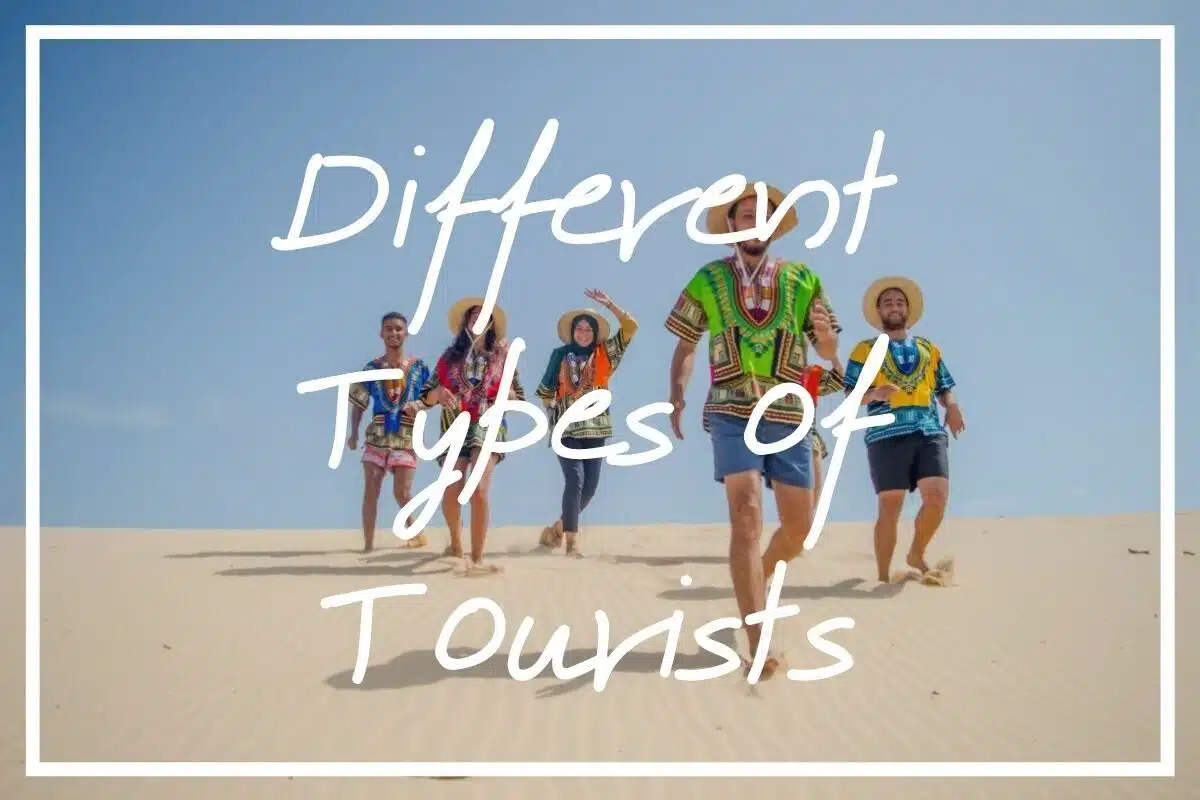
Trying to find out about the different types of tourists? I hope this post helps!
News just in:
Not all tourists are made equal!
Sure, we’re all going from place to place to enjoy the various attractions on offer in our chosen destinations.
But everything from our reasons for travelling to our style of travel can vary, right?
So it turns out tourism’s actually this big umbrella term, under which sit all sorts of different types of tourists .
In fact, it can actually get a bit confusing…
From what I can tell, there’s no actual consensus on how many tourism types exist!
Some articles list 3 main types of tourism, others 10, a few make up their own ones for a bit of fun, and I’ve even seen some that detail 60+ !
To satisfy my own curiosity and help anyone else who might be looking into this topic, I thought I’d do some digging and put together a post about the main categories of tourism that seem to crop up again and again.
Sound good? Keep reading for a detailed look at 40 different types of tourist and tourism!
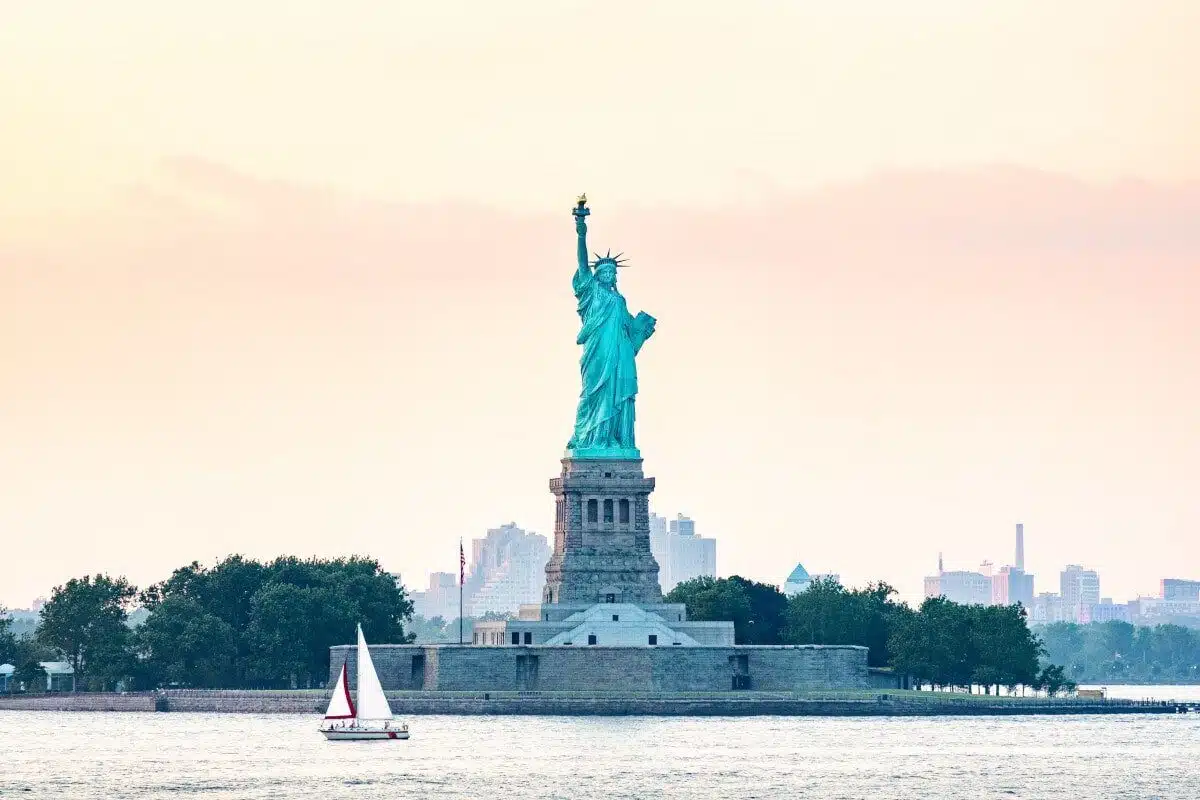
Here we go then: 40 different tourism types worth knowing about!
You might like these posts too!
- 10 Primary Disadvantages of Tourism
- A Complete Guide to Eco Travelling
- 10 Best Types of Vacations
- How to Say Thank You Around the World
- 30 Different Types of Travelling
- Comprehensive Guide to Responsible Tourism
- 20 Benefits of Solo Travel
- The Best Jobs for Adventurers
3 Main Types of Tourism
Some sources, like this one , divide the overarching category of “tourism” into three primary forms: domestic, inbound, and outbound tourism.
Let’s go through each one in turn!
First, though, here’s a fun fact: to be classed as any type of tourist, it’s generally accepted that you’re not leaving home to stay in a chosen country for more than a year . Extend your stay beyond 12 months and I’m not exactly sure what you become (a resident, maybe?). Yet, by all accounts, you’re no longer a tourist !
1. Domestic
Domestic tourism’s basically when you visit somewhere within your own country but outside the specific place you live.
Imagine a Brit who lives in London. They’d be classed as a domestic tourist if they left London to explore another part of the UK.
Inbound tourism’s the opposite.
This, according to the source above, is “the activities of a visitor from outside [their] country of residence”.
So, if that same Brit left the UK to travel around France, or Spain, or anywhere that isn’t England, Wales, Scotland, or Northern Ireland, they’d be classed by their chosen destination as an inbound tourist.
3. Outbound
And, finally, outbound tourism is when you leave your home country to explore somewhere else.
So, technically, you can be an inbound and outbound tourist at the same time!
For instance, the Brit who leaves the UK to go on holiday in France is an outbound tourist from the UK’s perspective and an inbound tourist from France’s.
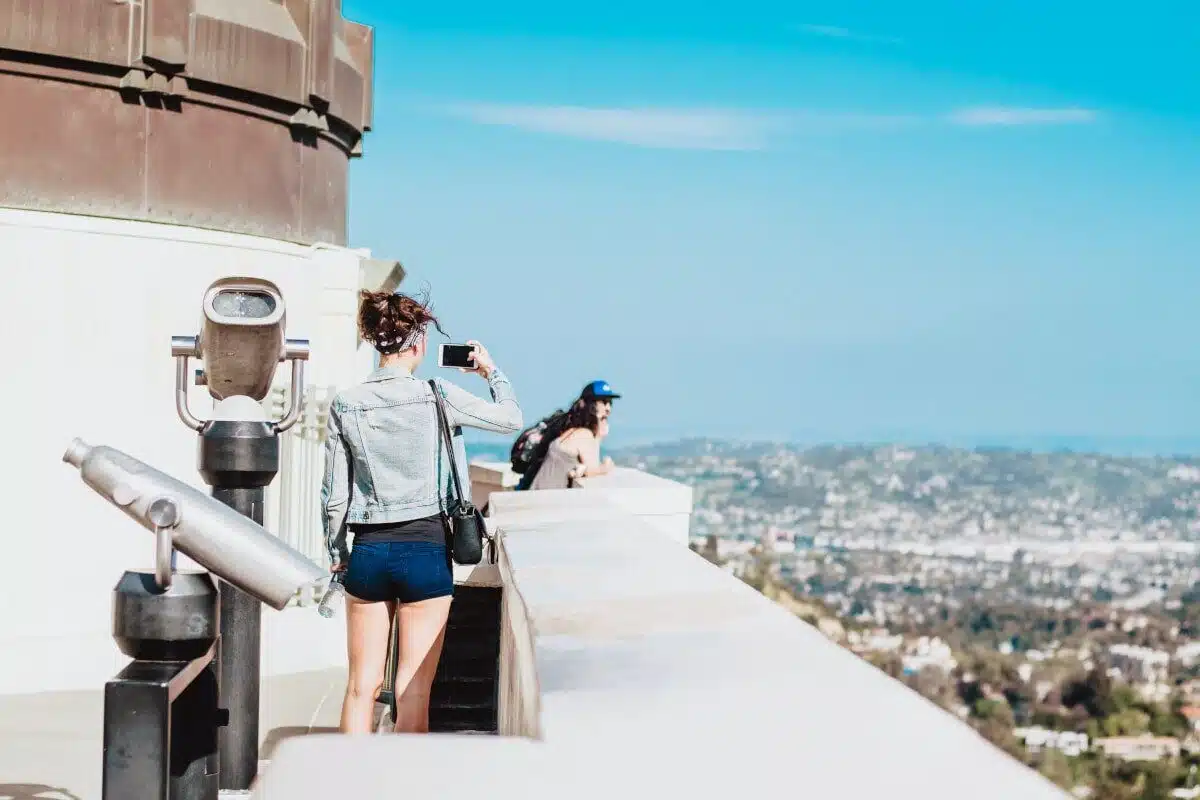
Which type of tourism most appeals to you? And what type of tourist do you think you are?! Find out in the next section…
4 Types of Tourist?
In some pieces of tourist-related literature ( like this one ), those 3 official tourism types give way to 4 different types of tourists .
I find these ones far more interesting to think about!
They’re essentially different types of travellers . Learn the definitions and you can start working out which category you (and the people you meet on the road) fit into.
FYI, I’ve taken the following definitions from the source I’ve linked to above.
4. The Drifter
Drifters are tourists who pick novelty over familiarity every single time.
They revel in adventure, immerse themselves in the local community, and, whether they’re alone or in a group, tend to move without a plan or set itinerary.
5. The Explorer
Explorers favour novelty over familiarity too, just not to the same extent as drifters!
Preferring to travel solo , they also enjoy a semblance of comfort, structure, and certainty on the road. If they can see fascinating places with a reliable form of transport, then they’re happy bunnies.
6. The Individual Mass Tourist
The tables turn with individual mass tourists, who prefer familiarity over novelty.
However, they do choose to go it alone, opting for solo travel over group exploration whenever possible. They’ll follow a relatively structured itinerary and stick to certain times in particular parts of town.
7. The Organized Mass Tourist
Finally, there’s the organized mass tourist.
These guys are on the other end of the spectrum to drifters, picking familiarity over novelty every time. They’re the tourists who follow a tour guide whenever possible, try to create and stick to an itinerary, and leave nothing up to chance.
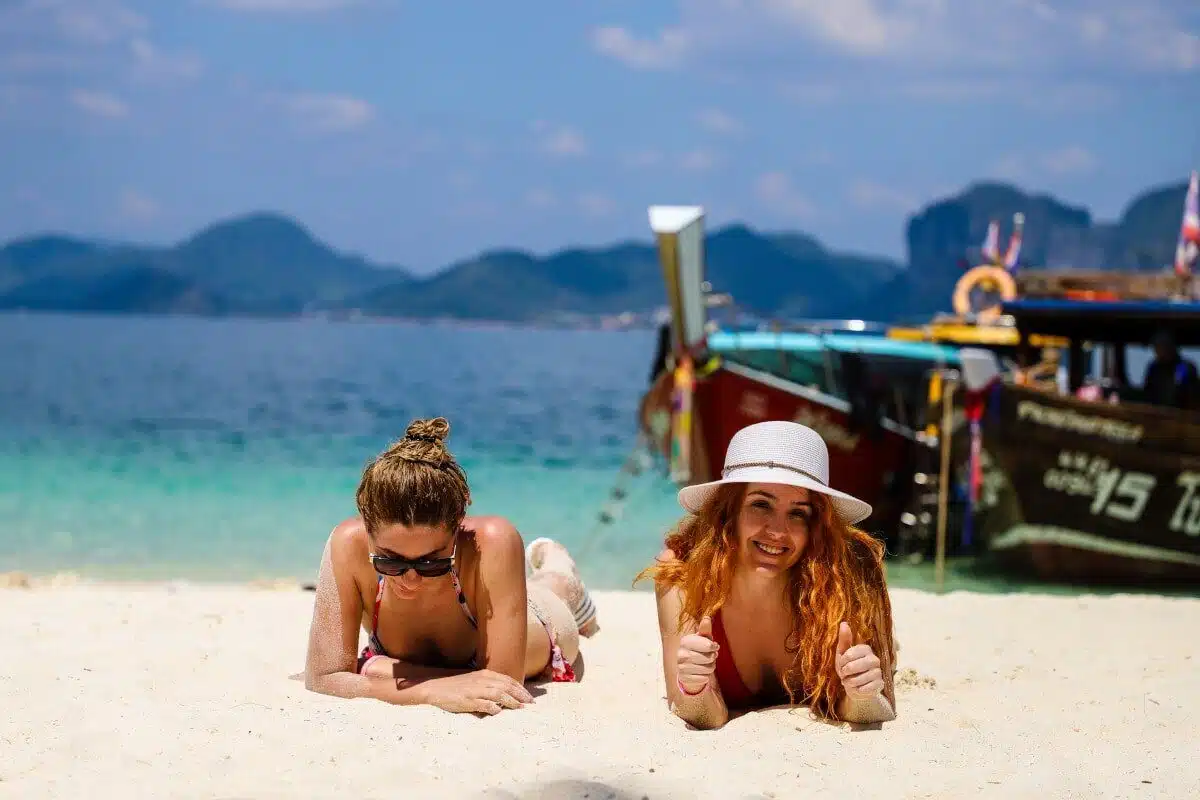
According to the literature, different types of travellers seem to fit into two distinct categories. More on these next…
2 Personality Tourist Types
To confuse things further, you see some sources (like this one ) discuss just two main tourist types!
This time, though, the definitions revolve around tourist personalities .
8. Allocentric (AKA “Venturers”)
Allocentric tourists are, according to the above source, “outgoing, self-confident, and adventurous”.
They tend to fly to their country of choice and will pick off-the-beaten-path destinations over more crowded/touristic ones.
From that description, allocentric travellers seem to resemble the drifters and explorers in the previous section. However, that’s very much my own interpretation! Experts in the field of tourism may disagree entirely.
9. Psychocentric (AKA “Dependables”)
As “self-inhibiting, nervous, and non-adventurous”, psychocentric tourists are basically the polar opposite of allocentric ones.
They “often refuse to travel by air for psychological reasons rather than financial of other practical concerns”, preferring familiar destinations to which they can travel by car and that have a solid tourist infrastructure.
Enjoying tour packages and well-organized itineraries, the psychocentric tourist sounds very much like the organized mass and individual mass tourists above.
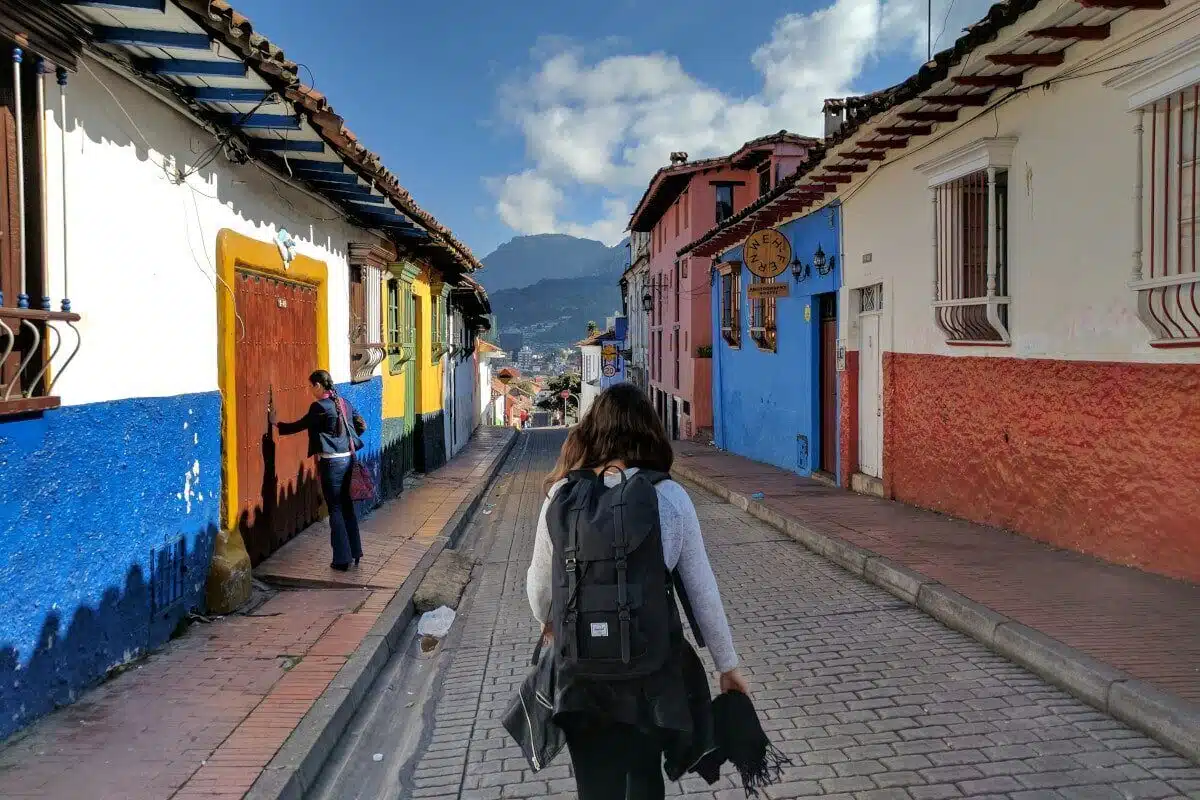
Time to move onto a long list of the main categories of tourism talked about in tourist circles!
General Subcategories of Tourism
With the technical and official forms of tourism down, let’s move onto the many different categories that tourism boards talk about online!
In alphabetical order, these ones usually revolve around peoples’ reasons for travelling versus their specific personality or style of exploration.
10. Art Tourism
Love going to new places to get involved in the art scene? Maybe you go to art festivals, explore art galleries, or attend specific artistic events.
Whatever the case, you’re officially an “art tourist”.
Even things like going to famous museums and wine tasting events supposedly fall under the bracket of art tourism.
11. Backpacking/Youth Tourism
Sometimes referred to as “youth tourism” because of its typical demographic, backpacking (or backpacker) tourism is basically when you slap your stuff into a backpack and hit the road!
From what I can tell, it’s usually associated with a younger generation and often associated with gap year travel.
12. Budget Tourism
Quick heads up: I’m not sure this is an official type of tourism or one that’s been invented by the international travelling community!
Nevertheless, as someone who travels on a budget all the time, I can vouch for its legitimacy! Budget travel/tourism is the act of exploring on a shoestring. With close ties to backpacking tourism, you try to see and do what you can without having access to huge sums of cash.
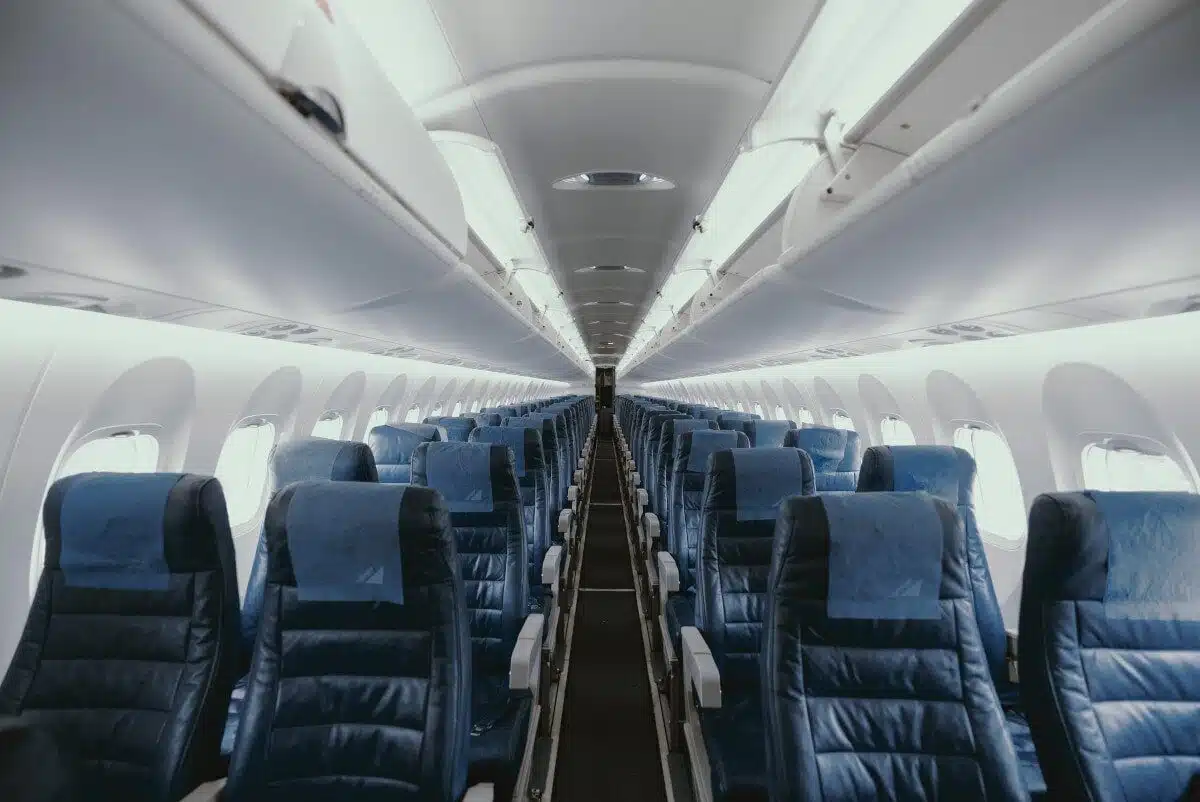
Business tourism may be one of the better-known forms of tourism on this list.
13. Business Tourism
Business tourism seems to be one of the largest, most accepted, and most talked about tourism types out there.
It’s essentially when you have to travel for work!
A business traveller might attend meetings, go to trade shows, pitch ideas to international companies, and so on.
14. Cultural Tourism
In contrast to business tourism, the definition of cultural tourism seems to be far more slippery and less agreed upon in the literature.
I guess that makes sense though. After all, defining “culture” itself isn’t easy.
Regardless, the basic principle behind cultural tourism is that you travel somewhere to experience its cultural traditions/activities (whether you’re just watching or actively partaking in them). This might involve going to a religious festival in India or Carnival in Rio de Janeiro, Brazil, for example.
15. Dark Tourism
Anyone who’s watched the “Dark Tourist” TV show will have a solid grasp of dark tourism already!
For anyone who’s new to the whole shebang, though, this is the slightly shady act of exploring places associated with death and/or tragedy.
Two examples would be:
- Going to Cambodia to see the Killing Fields, or to
- Mexico for El Dia de los Muertos (the Day of the Dead).
…As an aside, attending Mexico’s Day of the Dead celebrations would probably constitute cultural tourism as well.
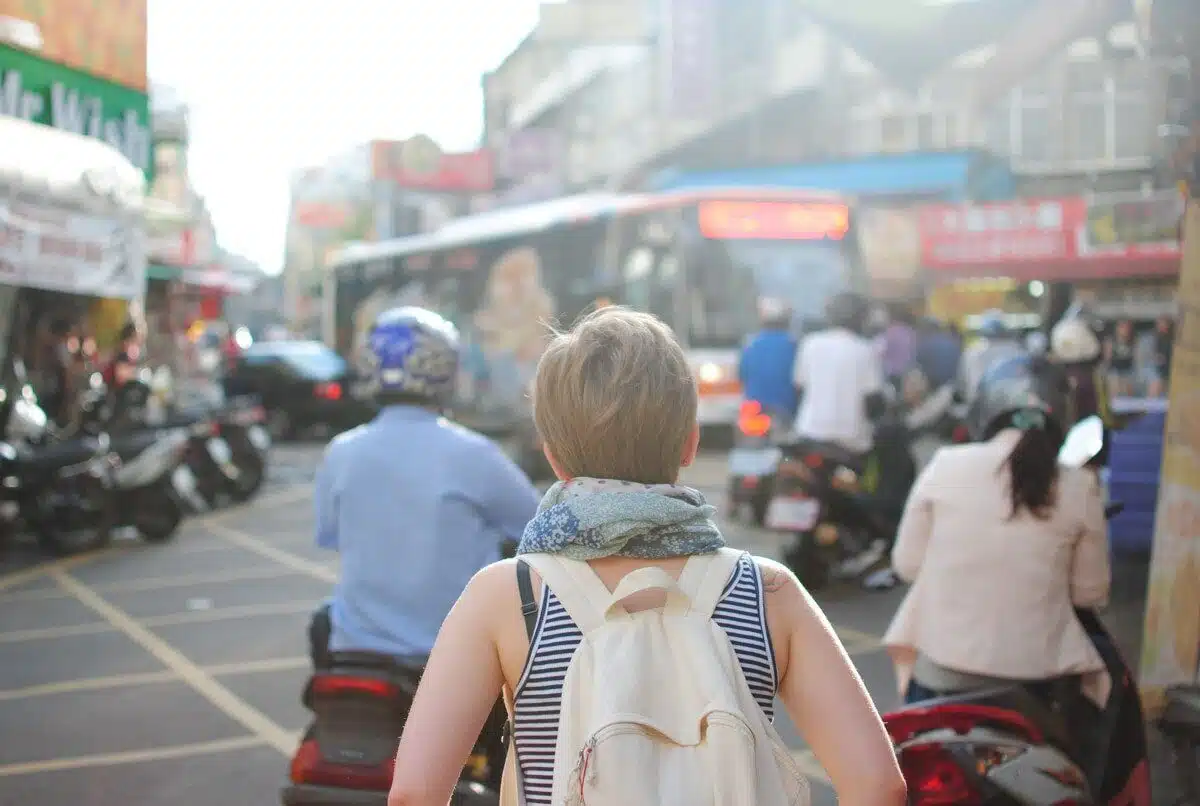
Dental tourism is one type of tourism that fewer people know about, but that’s becoming increasingly popular.
16. Dental Tourism
Dental tourists are people who travel to a foreign country to receive dental treatment.
Sounds crazy, right?
However, it starts making far more sense when you realize you can get really high-quality dental care at a fraction of the cost overseas!
17. Disaster Tourism
Disaster tourism reminds me a bit of dark tourism. This time, though, it involves visiting places that have suffered some sort of environmental disaster.
Whether the disaster’s man-made or natural, people decide to take a look at the aftermath and it isn’t long before businesses start cropping up to cater to them.
18. Ecotourism
Ecotourism’s talked about a lot these days- especially among avid travellers who can’t imagine life without adventure, yet wish to preserve and protect the incredible places they’re lucky enough to visit.
Alas, with jet fuel often required to get efficiently from one place to another, living by these ideals is easier said than done!
Ethical dilemmas aside, ecotourism’s when you visit natural areas responsibly.
In other words, you travel in a way that both conserves the environment and benefits (instead of hinders) the local population.

Want to teach overseas? You’ll be partaking in educational tourism!
19. Educational Tourism
Often shortened to “edu-tourism”, this type of tourism involves travelling to a foreign country for educational purposes .
The education itself may involve learning a language or learning information on the country’s history, culture, or social practices. Specific examples include going on a school trip or going to study abroad.
20. Ethnic Tourism
An ethnic tourist is someone who chooses to experience with their own two eyes the lifestyle, customs, and practices of another culture.
Sounds similar to cultural tourism, right?
However, according to this source , ethnic tourism involves a closer, more direct, and “intimate” glimpse into another culture, whereas cultural tourism involves a more indirect manner.
21. Event Tourism
As far as I can tell, event tourism involves hosting and marketing events of one form or another that function as specific tourist attractions.
In other words, you hold an event to:
- Encourage people to visit your country and
- Shed your country in a positive light.
An event tourist is someone who’s left their country of origin to visit that destination for that event (be it for business or pleasure) and stayed overnight . If they don’t stay, then they’re deemed an “event visitor”.
You can find more information here .

Family tourism’s another commonplace type of tourism worth knowing about.
Enjoying this post about the different types of tourism? You might also like these…
- 50 Fascinating Facts About Travel
- 85+ Road Trip Trivia Questions & Games
- 75 Essential Things to Pack for Travel
- Key Features of the Experience of Travel
- 100 Reasons I love to Travel (& You Will Too)
22. Family Tourism
Family tourism seems like a fairly vague and overarching term that involves all forms of tourist activity done as a family unit .
For example, you might travel somewhere with your family and go to a theme park, or try any other kid-friendly attractions in the area.
Family tourism would also include paying a visit to your friends and relatives overseas.
23. Festival Tourism
This type of tourist is nice and simple:
A festival tourist’s someone who travels somewhere specifically to attend a festival!
Whether it’s Glastonbury, Burning Man, Tomorrowland, or any of the other countless festivals happening around the world, attending them all constitutes festival tourism.
24. Food/Gastronomy Tourism
Travelling somewhere to sample its gastronomical delights and learning a thing or two about the culture as a result?
Well, you’re officially a food tourist!
Food tourism is the arena in which you’ll operate. You could be taking a cooking class, visiting local producers, sampling the street food, or taking a local wine tour.
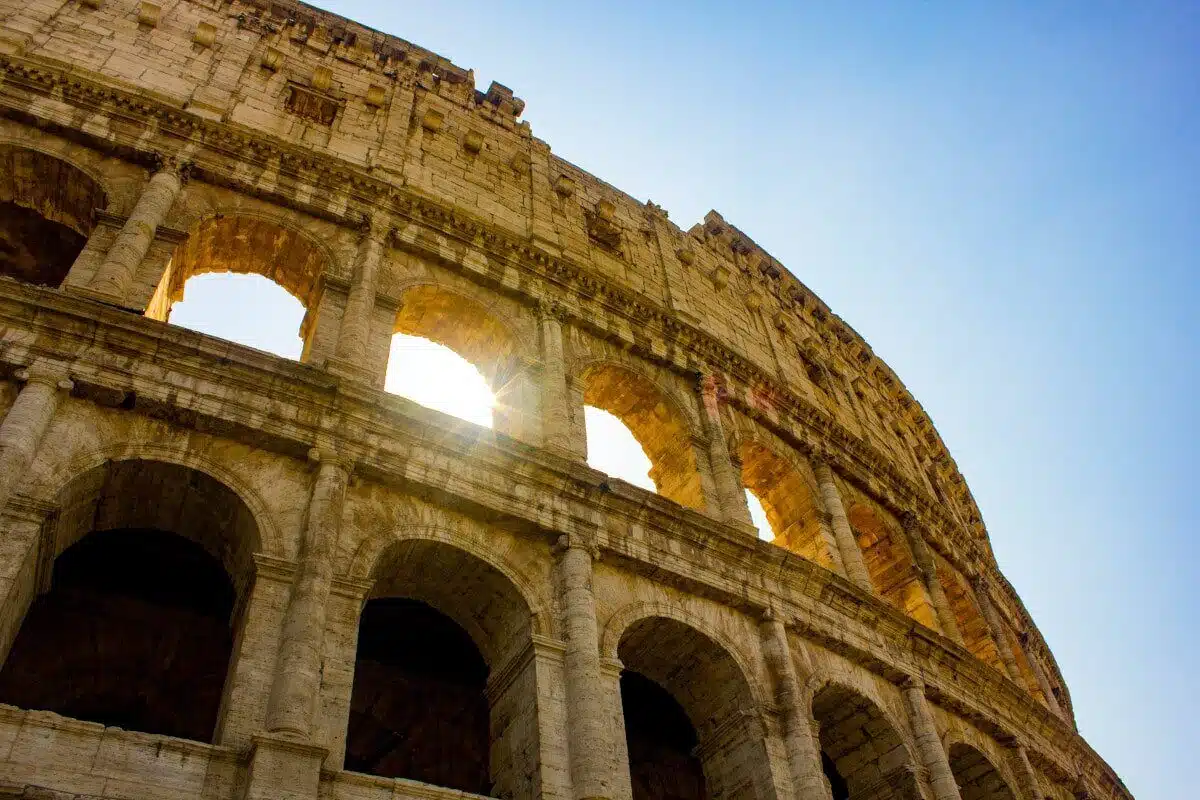
Of all the tourism types on this list, heritage/historical tourism is one of my personal favourites.
25. Health/Medical Tourism
Medical tourism’s similar to dental tourism. This time, though, you’re travelling abroad to get treatment of the medical instead of the dental variety!
It can work in two ways.
- First, someone from a less-developed country may travel to a more developed one in order to access treatment that’s unavailable at home.
- Second, someone from a more developed country may travel to a less developed one to benefit from cheaper treatment.
26. Historical/Heritage Tourism
In a nutshell, historical tourism (otherwise known as heritage tourism) involves going overseas to enjoy its historical sites, sights, and attractions!
It’s the person who visits Rome to explore the Colosseum, Egypt to see the Sphinx, or Peru to visit Machu Picchu. Sure, you enjoy the other tourism attractions in these places as well, but your primary focus is on the history.
Read more about historical tourism here .
27. Hobby Tourism
As you’d expect, hobby tourism is when you travel alone or in a group to watch or partake in your particular hobby of choice.
Things like “football tourism” (e.g. going somewhere to watch your favourite football team play) and “music tourism” (e.g. going somewhere to see your favourite artist perform live) are two popular examples that fit within this overarching category.

International tourism is one of the main types that crop up again and again.
28. International Tourism
Another wide, general, and overarching category of travel, international tourism is the opposite of domestic tourism (discussed above):
You cross national borders to visit and explore your given destination.
29. Leisure Tourism
To borrow a definition from USA Today , leisure travel involves:
“Travel in which the primary motivation is to take a vacation from everyday life.”
So, the leisure tourist might be staying in resorts, dining out, lazing on beaches, going on guided tours, and doing whatever they can to take a much-needed break from the norm.
30. Local Tourism
Local tourism basically involves spending your time and money in foreign destinations as one of the locals would!
You’re shopping in local markets, paying a local taxi driver for a ride instead of a big international company like Uber, dining in local establishments and partying where the locals go.
The goal? To:
- Experience what life in this destination’s really like, and
- Spend your cash in a way that supports the local population.
Want to learn more about a similar topic? Here’s my guide to local travel .

Leisure tourists look for an escape from everyday life and see travel as the perfect solution.
31. National Tourism
Remember the definitions of domestic and outbound tourism I talked about before?
Well, according to the World Tourism Organization , national tourism is a category of tourism that encapsulates them both.
In their words:
“That is to say, the activities of resident visitors within and outside the country of reference, either as part of domestic or outbound tourism trips”.
32. Nature Tourism
Nature tourism’s another straight-forward form of tourism to wrap your head around:
You simply travel somewhere to revel in its natural, undeveloped areas and/or to enjoy the native wildlife on offer there!
33. Recreational Tourism
I’ve seen recreational (or recreation) tourism defined in two different ways.
The first (and most common) is that it involves travelling in order to participate in recreational activities- usually in nature- or to be a participant. Golf, fishing, hiking, and kayaking are a few examples.
The second, less common description (that nonetheless ranks at the top of Google results) is that it’s “the movement of people in their free time in the aims of rest required to restore the physical and mental strength of a person”.
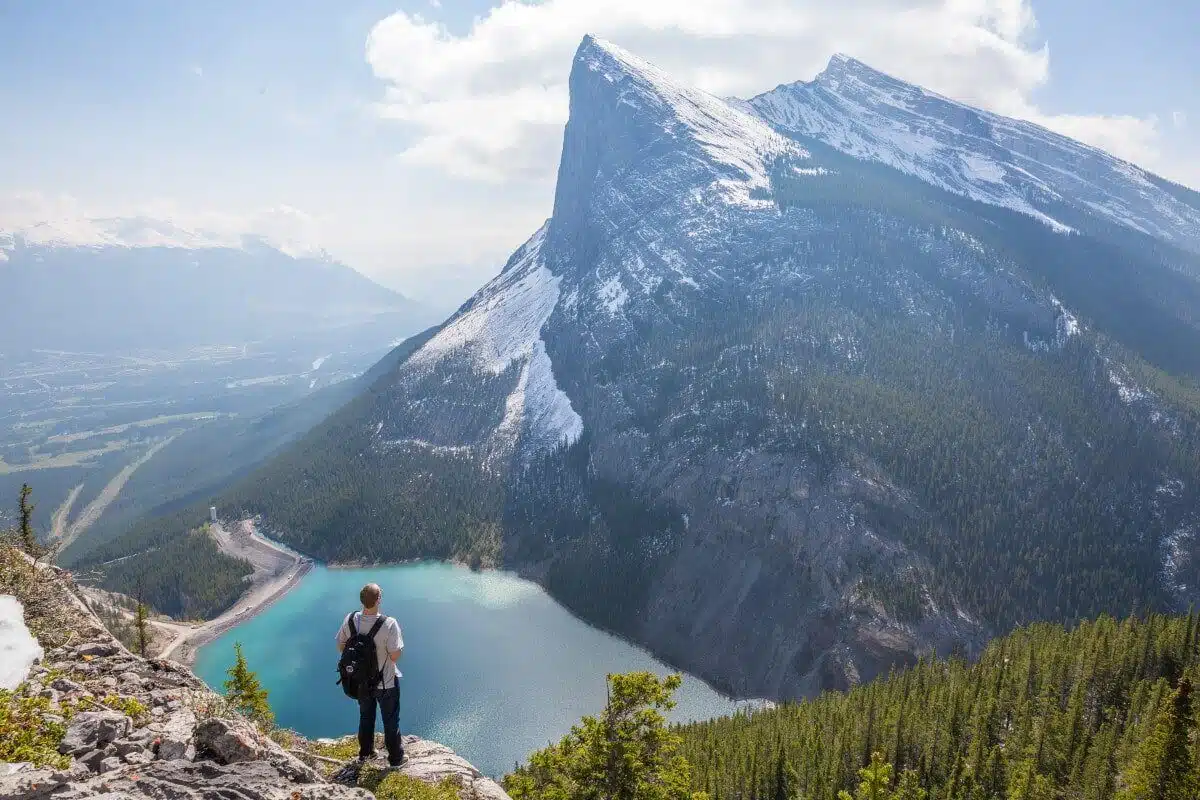
Love nature and want to spend more time outdoors? Nature and recreational tourism are two different types of tourism worth looking into!
34. Religious Tourism
Are you a person of faith? Are you travelling alone or in a group to do something related to your religion?
Well, technically speaking, whether you’re going on pilgrimage, travelling as a missionary, or simply having fun, you’d be considered a religious tourist .
Heads up, you’ll also see religious tourism referred to as faith tourism .
35. Shopping Tourism
A relative newbie as far as the different types of tourists go, shopping tourism is exactly what you’d expect it to be:
Where the purpose of travelling to new places revolves largely around the desire to buy stuff . So, whether you’re going to London, Paris, or New York, your primary focus is on the goods you can acquire there.
36. Social Tourism
A more complicated and nuanced category of tourism, examples of social tourism include helping a charity build schools somewhere overseas, or teaching English to students there, and so on.
Simply put, the central focus of travel here isn’t just on personal pleasure. You’re trying to do something good for local communities in which you’re exploring.
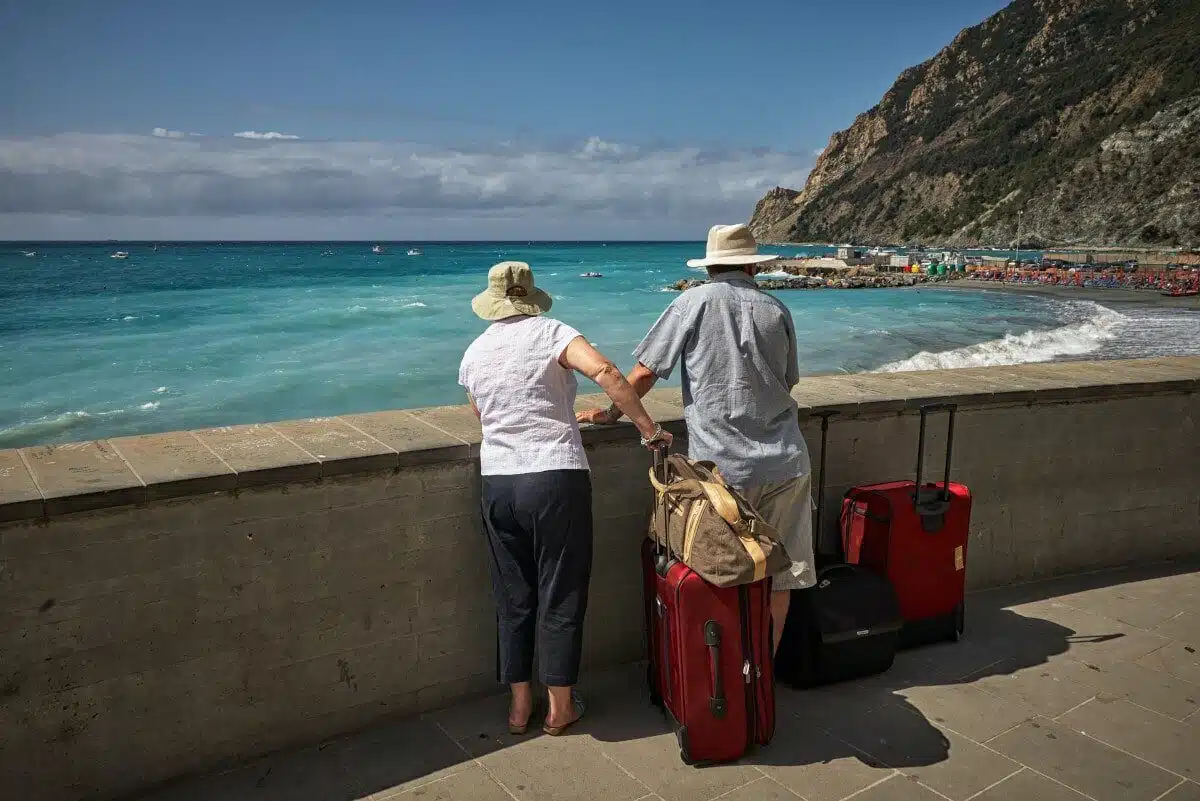
Third-age tourism is another key tourism category in the travel industry! First, though, let’s talk about sports tourism…
37. Sport Tourism
Going somewhere new to participate in or watch a sporting event?
Well, you’re a sport tourist!
Imagine going overseas to see the next football/soccer world cup or to be in the stands at the next Olympics. This is sports tourism in its purest form. However, it could also involve going somewhere to train as a yoga instructor, or to learn martial arts.
38. Third-Age Tourism
Third-age tourism is also known as senior tourism or “silver tourism”.
This is the section of the tourist industry aimed at people who are going somewhat “grey around the edges”; who may have retired and now have expendable income and lots of free time on their hands.
So, if you love to travel and are getting a little longer in the tooth, then you’re probably classed as a senior tourist.
39. Urban Tourism
Another type of tourism for which you can probably guess the definition, urban tourism involves travelling to and around non-rural destinations.
This is the weekend trip to London, or the short break in Berlin.
You’re exploring the cities or towns, immersing yourself in the myriad metropolitan attractions on offer there.
40. Winter/Ski Tourism
Love cutting lines down powdered peaks? Well, you’re already familiar with winter/ski tourism!
From getting involved in winter sports (like skiing, snowboarding, or ice-skating) to watching them from the side-lines, a winter tourist travels to enjoy all-things cold and snow/ice-covered.
Remember (and try!) These Tourism Types
There you have it then: 40 different types of tourists.
As you can tell, although most of us have a basic definition of “tourism” in our head, the industry itself breaks down into dozens of individual tourism types !
If you’ve been trying to gain a greater understanding of these different categories of tourism, then I hope this post has helped!
Know of any other types of tourist for me to add to the list? Drop a comment below!
1 thought on “40 Different Types of Tourists [2021 Tourism Types Guide]”
Wonderful explanation. Would like to add another one that is combination of above mentioned types.
Comments are closed.

The 21 Different Types of Tourists
There are different types of tourists around the world. These tourists typically specialize in a single type of tourism such as cultural holidays so they can be easily categorized.
While many tourists are generally interested in multiple aspects of holidaying, some simply prefer to stay in line with very specific interests as follows.
Table of Contents
1. Adventure tourists

Adventure tourists are considered the most daring out there. These people are very active and they breathe experiences. Adventure tourists can be locked in a resort for a couple of weeks as this would simply ruin their vacation. They need action, change of scenery, meeting new people, and experiencing new things.
But what is adventure tourism? This style of tourism often involves outdoor adventures such as safari escapes, or desert dirt bike rides. It can involve any activity that is considered adventurous.
Adventure tourists are known for their high interest in getting into new experiences. If many tourists aren’t willing to travel far for their passions, this can be different for adventure tourists.
For example, some of the most unique swimming with the sharks’ experiences are very remote. Yet, adventure tourists always travel to these locations for the experience.
The most important word to describe these tourists is ‘experience’. All adventure seekers are normally interested in the experience more than being interested in simple everyday activities that are repetitive and monotone.
Adventure tourists aren’t afraid of looking beyond comfort as well. These holidaymakers aren’t always seeking to sleep in the most luxurious hotels. They might even sacrifice personal comfort for the awaiting experience.
2. Backpack tourists

Backpack tourists are typically frugal and interested in multiple aspects of tourism. As their category name suggests, these tourists are normally only traveling with a backpack. This is where they keep clothes, shoes, sunglasses, charges, and even food. Traveling with a backpack isn’t easy. You have to carry it around with you all day.
So why do backpack tourist numbers increase year by year if it’s so difficult to carry a backpack all day? The first reason has to do with economics. It’s simply more affordable to stay in backpack hostels and bed and breakfasts than to stay in typical hotels. It’s also less worrying as these tourists have all their belongings with them at all times.
Most importantly, backpack tourism is fun. Those into this type of holidaymaking aren’t afraid to put on sports shoes and comfortable clothing and get moving. They can see and experience multiple other aspects of their traveling location compared to other tourists.
Backpack tourists also differentiate themselves from adventure tourists as they can be into different aspects such as seeing cultural landmarks and even traveling for good restaurants. They can combine all aspects of tourism with an adventure into a unique budget-friendly type of holidaymaking.
Shortly called ‘backpackers’ these tourists are seen everywhere from busy city streets to remote mountain paths. They are generally highly self-driven and they require minimum guidance to get around as they like to plan.
3. Business tourists

Business tourists are a bit more difficult to stop compared to backpackers. Normally traveling for work purposes, business tourists are mostly interested in their work duties. Of course, things change during the day when these work duties are over.
Known for their tight schedule, business tourists are typically interested to discover the area where they need to work for a while. This means they can jump into the typical tourist attractions, check out local museums, restaurants, and parks.
Business tourists are normally blessed when it comes to expenses. Most business tourists have their transport and accommodation costs covered. This then means they might have money to get into shopping or to other activities that aren’t specifically free.
Those who travel for business are rarely called tourists, however. It’s only the group that has the time to become part-time tourists that are lucky enough to discover new places. There are plenty of professionals traveling for business with no time for holidaying.
New York is the number one business tourist destination. Known for its high number of business and economic development, the city also offers plenty of world-class landmarks to visit, making it the perfect stop for business tourists.
4. Cruise tourists

A special type of tourist is only interested in going on a cruise. Many cruise tourists are seniors and seeing the world from a cruise ship is often a yearly holiday for them. Carnival Cruises and other similar companies offer complete tourist packages for these seniors. Almost all of them have the freedom to choose which countries they want to visit as cruises take tourists on different types of tours.
Some cruises are only bound to the Gulf of Mexico. Others travel around Central and South America. There are also very popular Mediterranean cruises for those who want to travel along Southern Europe’s coast from Portugal to Greece with stops in Spain, France, and Italy.
The main benefit of these cruises is they allow their customers to see different countries as special port stops are planned along the route.
Cruise tourists have also been known to be among those who love long holidays the most. There are plenty of cruses that last more than a month and this type of adventure can certainly count as the summer holiday.
Cruise tourists generally travel in couples or small groups. It’s rare to find solo cruise tourists. Most cabins available on cruise ships are for couples. This is why they can be the ideal type of escape for tourists and couples who want to relax for a few weeks.
Most cruise tourists appreciate good food, drinks, and the ability to socialize on the ship. This is why all cruise ships offer one or multiple restaurants, a common socializing area, a sunbathing deck, music nights, and even casino nights. This is why some tourists even prefer not to step off the ship even when docked as all amenities are covered for them.
5. Cultural tourists
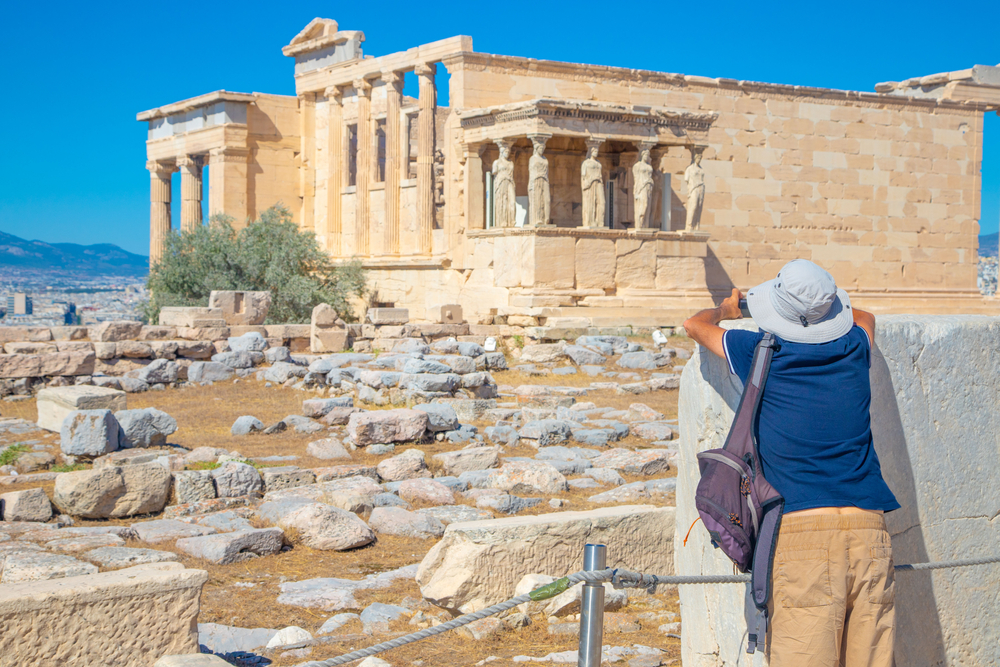
Culture is a sub-niche of traveling. Culture travelers differentiate themselves considerably from others as they choose different destinations to the typical beach resort escape. They might even travel to the same places as others but they visit different attractions.
As their name suggests, cultural tourists are into the culture. This vast area of interest typically covers, history with its museums, education with learning opportunities, ethnographies with its traditions, etc. Being a cultural tourist means you check out all of the cultural attractions of your destinations such as theatres, cinemas, and old cathedrals.
A cultural tourist is typically traveling at a slow pace so there’s sufficient time to admire and participate in different cultural events. Most cultural tourists can be seen in museums. Offering a glimpse into the history of an area, museums are ideal for cultural tourists as they often meet other tourists from around the world also interested in culture.
Cultural tourism flourishes in historically-rich cities and countries. Italy, France, and England are some of the most visited cultural hubs around the world. Italy’s renascence period with its painters, sculptors, and architects still attracts millions of tourists from around the world. These tourists are there to see these aspects that are unique to Italy as they can’t be reproduced anywhere else.
Being a cultural tourist also has its downsides. As every place is unique, cultural tourists typically want to visit more places that require a considerable budget. Visiting London is an experience that is certainly enriched by visiting other British cultural hubs such as Durham or Oxford. All of these cities can offer a combined cultural vacation of at least a week.
6. Domestic tourists
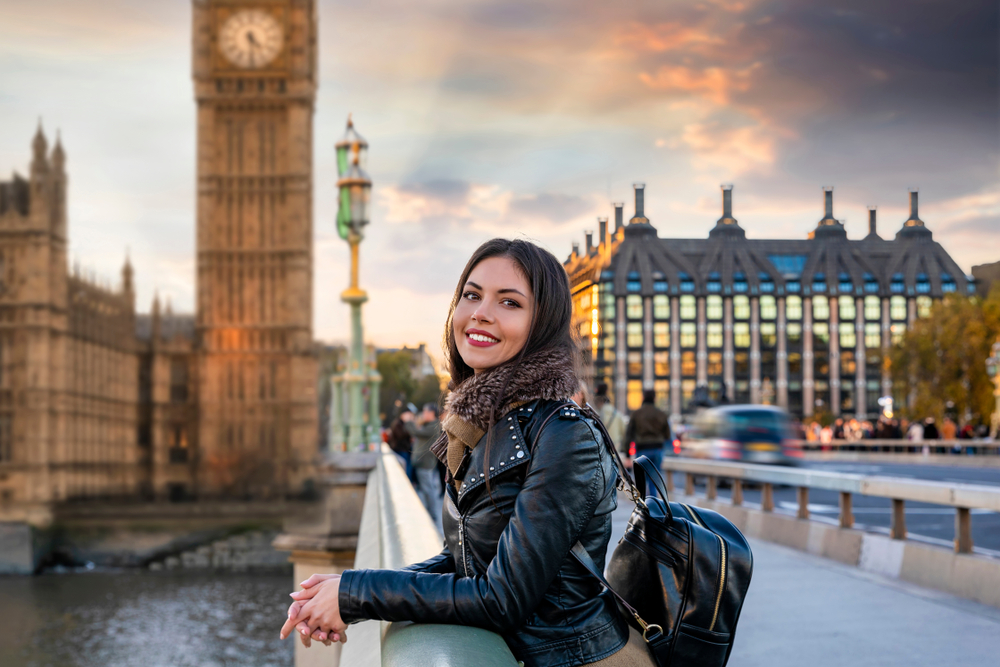
One of the main categories of holidaymakers is represented by domestic tourists. These travelers are typically interested in what their native countries have to offer. Domestic tourism means discovering locals places within the country.
Domestic tourists travel by airplane, car, bicycle, or they even hitchhike. This is one of the most important aspects when it comes to discovering and rediscovering your own country.
All domestic tourism is typically based on the same rules and international tourism, with a busy season where an influx of travelers is expected. For most tourists, it is also a good opportunity to look at what makes their country great.
Domestic tourism incorporates all other types of tourism. Its sub-niches include cultural domestic tourism, culinary domestic tourism, adventure domestic tourism, leisure domestic tourism, etc.
Domestic tourists are also typically interested in multiple aspects of their travels. Visiting a city or a region is typically accompanied by discovering its main touristic attractions and things to do.
7. Eco-tourists

Eco tourists are a growing niche of travelers highly preoccupied with sustainability, ecology, and general nature care. This type of tourism is growing fast around the world and it has a minimalistic approach with a reduced impact on the environment.
Riding dirt bikes through green fields is not ecotourism. But cycling through rural areas is considered eco-tourism, with its care for nature.
Most eco-tourists travel by car or plane to a certain destination. But they can also travel by bike or even walk multiple days to reach a destination or to experience all that it has to offer.
Rural Italy offers great world-class eco-tourism destinations. Small family farms here show tourists how to live like a local, cook like a local, and even how to care for animals.
There’s a modern side to eco-tourism as well. All types of reduced environmental impact technologies such as e-bikes are included in guided eco-tourism tours.
Most eco-tourists appreciate a way of life that cares for nature and what it has to offer. This is why excessive waste isn’t characteristic to these types of tourists which tend to be the best when it comes to not leaving traces of their visit even when out in nature.
Eco tourists are also smart when it comes to limiting the resources they need on holiday. This is why this type of tourism is often characterized as affordable. But it can still be expensive with the exception that these types of eco-tourists know how to make the most from very few resources.
8. Food tourists

Food tourists are a special type of gourmand holidaymakers. Food tourist travels their country and other countries to eat diverse foods. This type of tourism is flourishing in the conditions in which foods become more standardized in developed nations and since certain meals can only be experienced among the locals who make them often.
Among food tourists, there are plenty of sub-divisions such as vegan food tourists or Asian food tourists. All of them are interested in very specific aspects of food. But most food tourists have an open mind to all types of foods and countries.
Cultures influence food considerably. This is why learning about culture often means tasting the food it makes and seeing what characterizes its delicious taste.
Food tours are now offered constantly by travel agents. Some of the best food travel destinations are those in South East Asia. Thailand is one of the specific destinations for good affordable food. Italy is also known for its rich culinary history and people from all over the world make it here to eat unique pizza and pasta.
But food tourists can also travel by themselves. To be considered a food tourist, travelers have to specifically set out to a certain destination for its food. But food tourists can also be found inside the country. Seattle and New York are cities with a rich culinary history.
Texas is known as the state to be in when it comes to stakes. People travel to these locations to eat the best foods as made by those with cooking experience.
Food tourists are also responsible for making various restaurants famous. For example, some of the best Michelin-star restaurants in Spain and the world are located in often isolated locations in small towns and even in villages.
Food tourists travel long distances to reach these restaurants. Once there, they get to eat the food made by famous chefs and they often taste delicious meals made with entirely local ingredients. These tourists are generally known for a culinary passion.
9. Generalists

Generalist tourists are a combination of all types of tourists. These travelers set out to a certain destination with an open mind to experience as much as it has to offer. A generalist tourist can look at a certain style of architecture one day and be interested in the food of a city the next day.
All generalist tourists are typically looking into a holiday experience. This means accommodation and even traveling to multiple places within the region is of interest.
Most holidaymakers are generalists. They travel to different locations with a plan to see its tourist attractions, check out its museums, and even get immersed in unique experiences.
Generalist tourism isn’t characterized by traveling to certain destinations or in a given timeframe. It is characterized by the general will to travel. This is why it can look very different from one tourist to another.
Those who like to travel often describe themselves as tourists, but this generally involves being a generalist tourist.
10. Holiday tourists

Holiday tourists are those travelers that mainly go on holidays when traveling. A holiday is typically a period of at least a few days to relax away from home. Holiday tourists are the most popular type of travelers, especially among families.
Holidays are planned once or multiple times per year and this means taking time away from work and typical chores to travel.
You can see holiday tourists especially around resorts, beaches, camps, and all other locations typically associated as touristy. Florida is a good example of a holiday tourist state. It attracts people from all around the world who say the visit to the sunny state is a ‘holiday’.
The English expression ‘I holiday in’ refers to taking a yearly vacation in a certain location. This is why holiday tourists are those travelers who are typically on a longer vacation, typically the summer vacation which is the longest for most.
Holiday tourists can travel both by themselves and in groups. A holiday can be taken as a way to relax for health purposes. A doctor can recommend going on a holiday for patients under constant stress. Going on holiday is seen as taking a few days up to a few weeks off to relax completely and to have the occasion to reduce stress by worrying less.
Those on holiday are typically using the term in different situations. But their expressions can sometimes be confusing. ‘Holiday food’ is the food made at home, typically during religious celebrations such as Christmas or Easter. Holiday food is rarely used to refer to the meals consumed while away on a summer holiday.
11. International tourists

Most tourists are willing to travel to almost any location. But among general travelers, there’s a distinct category only willing to travel abroad. Many reasons make international tourists only consider holidaying abroad.
Among them is the experience of visiting most tourist attractions in their own countries. Another reason can be the appeal of a certain destination, particularly for its popularity.
International travel is at an all-time high in recent years. With the advent of low-cost air travel companies, the opportunities and the cost of international travel are in the favor of travelers. A large percentage of international tourists are planning their holidays accordingly as this is the type of travel that mostly rewards those who plan.
The perks of proper planning for international tourists include finding the lowest airplane ticket fares and the best accommodation prices. International travel can also be subject to extensive paperwork such as visa applications, proof of income, proof of residency, etc. While highly rewarding, international tourism can also require a bit more preparation than domestic tourism.
International tourists are also some of the most open when it comes to travel destinations. From the classic locations such as France and Spain to the most remote international travel locations such as Iceland, these travelers are typically willing to make an effort to reach the destination.
One of the perks of international travel is getting immersed in different cultures. This can be a bit more difficult to achieve with domestic travel. Major travel channels now recommend remote international travel due to the current pandemic. This is why Antarctica is one of the most remote international travel locations that gets recommended today.
12. Leisure tourists

Leisure tourists are a type of generalist travelers. These tourists are interested in taking a break from reality, seeing new places, eating new foods, experiencing new adventures, but without sacrificing rest and comfort.
Unlike backpackers or adventure tourists, leisure tourists also feel the need to relax while traveling. This is what makes them even more interested in locations with good accommodation options.
Leisure tourists are generally characterized by a slower pace of travel compared to adventure tourists. They like visiting the most popular touristic areas in their destination. Cultural experiences can’t be overlooked by these tourists as well.
Apart from visiting landmarks, leisure tourists also appreciate good diverse food options. All in all, these types of tourists are among the most proficient when it comes to making the most of a trip and coming back come reinvigorated.
13. Medical tourists

Medical tourists are known as patients who travel for healthcare purposes. Both incoming and outgoing patients have been increasing in the US. There are a few factors that influence these two trends.
Incoming patients to the US are typically those coming for a very specific medical intervention. The high number of specialized doctors in the US makes it an attractive country for those coming from smaller countries where there isn’t a great selection of doctors or where there are no proven interventions for a certain condition.
Outgoing US patients are leaving for other smaller countries to get cheaper and often free medical healthcare. Medical insurance costs are constantly rising in the US and this makes it the country almost impossible to get medical treatment for those with a certain condition that isn’t covered by insurance.
US citizens prefer to travel as little as possible to get medical healthcare. Most don’t head to Europe but rather to Central and South America. Costa Rica is the main destination for US medical tourists. Patients head to the country for a few weeks and even for a few months. They might be recommended a rest period under supervision for a certain medical intervention.
The number one reason for US medical tourists outside of the country is dentistry work. All dentistry interventions in the US are considered among the most expensive in the world. It’s a routine to see US citizens traveling abroad only for a few days to get work done on teeth and for other oral care interventions.
Mexico is another popular destination for US citizens seeking to travel to get better healthcare. The proximity of the country, its low prices, and high numbers of doctors and clinics make it a viable option for medical tourists.
While further away from the US, India is also a top destination for medical tourists. Doctors here are some of the best-trained in the world. Since most also speak English, their medical services become tempting to US citizens. Singapore also gets a high influx of US medical tourists. Some of the world’s largest hospitals and some of the top-level doctors here make the small country highly attractive for patients who need complex medical treatment from around the world.
14. Reflective tourists
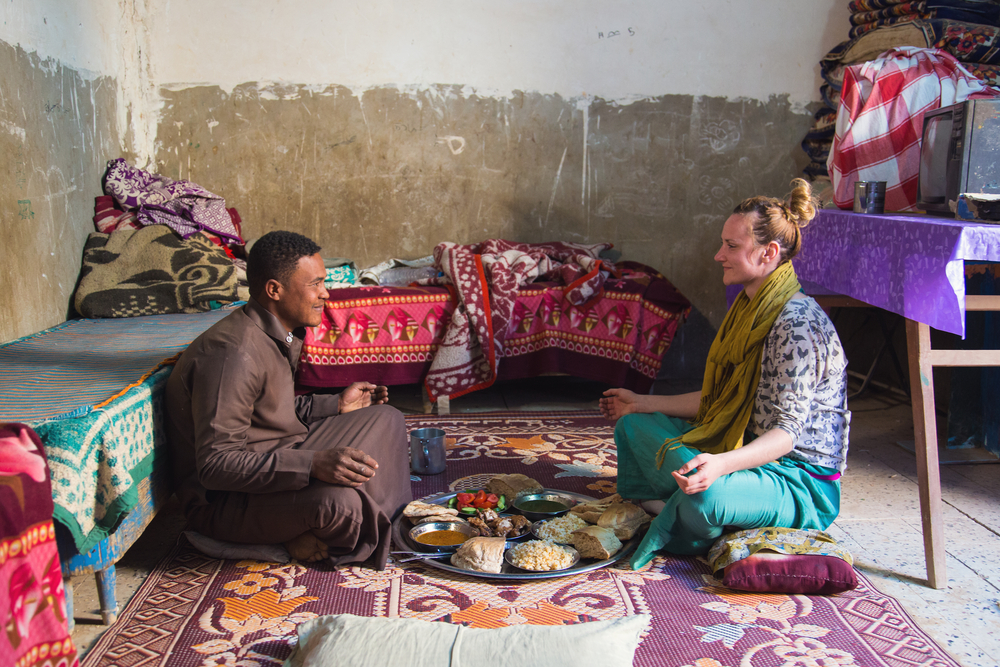
Reflective tourists are characterized by the wish to travel and learn. It can be said learning has multiple faces in the case of these travelers. Tourists can travel to learn more about a place but they mostly travel to learn more about their heritage, where they come from, and the culture of their genealogy.
Europe is the main destination for reflective tourism. The continent has been known for waves of mass-level migration, especially to North and South America. This is why a rising number of reflective tourists make their way to Europe each year.
But what do these tourists do that others don’t? Reflective tourists are normally interested in culture hotspots. They visit museums, churches, theatres, exhibitions, stadiums, etc. These are all part of a wider spectrum of cultural attractions.
But reflective tourists can also dig a bit deeper into their family’s history. They might even visit local administration to get a trace of their lost relatives and get in contact to learn more about their family’s genealogy.
Reflective tourists are increasing in places such as Spain and Italy. Largely impacted by mass migration over a century ago and even today, these countries have been the main attraction for reflective tourists from the US, Canada, and Argentina.
Many of these countries even have tourism agencies specialized in offering services for reflective tourists on discovery or rediscovery trips.
15. Religious tourists

Religious tourists are one of the largest groups of travelers. These types of tourists are normally interested in heritage historic places of worship tied to their religion. Religious tourism is growing year by year but it isn’t new. Old pilgrimages were made thousands of years ago such as the Camino de Santiago in Spain.
Religious tourists can be split according to specific religions and branches within a religion. Jews are normally interested in traveling to Israel. Even Jews who aren’t into tourism are typically interested in visiting Israel at least once.
Jews also travel to other Jewish communities around the world frequently. They can even pitch in to build new Synagogues around the world or to restore historic places of worship.
Christians travel to Israel as well. They visit Jerusalem and Bethlehem mostly, without any particular interest in larger cities such as Tel Aviv. Christians also visit cathedrals, churches, and monasteries around the world.
Christian tour operators organized different circuit visits to specific countries where tourists get to see some of the most important Christian landmarks of the area.
Furthermore, Christians also organized mass pilgrimage events around the world. Other popular Christian destinations include The Vatican, especially for Catholic Christians.
Millions of Muslims visit Mecca each year. The celebrations here are normally held throughout the year. Located in Saudi Arabia, Mecca is a place of worship with strict rules. Pilgrims here aren’t allowed to drink alcohol, according to Muslim tradition.
16. Rural tourists

Rural tourists are normally interested in traditional villages. These types of tourists exist around the world. Rural tourism is completely dead in some areas around the world but it is also very popular in other areas.
Locronan in the Frances Britany region is the country’s main rural hotspot. It enjoys easy access from mainland Europe. Broad Campden in England’s Gloucestershire region is one of the most visited classic villages in the country and the world.
Its small streets, traditional homes, and relaxed way of life make it a high attraction for many of those interested in traveling away from large cities.
The perks of rural tourism include a slower way of traveling. It also allows tourists to meet the locals and improve socializing opportunities. Staying in rural areas also means enjoying different hotels. Far away from cities, the rural hotel often offers more wide-open spaces which encourage walks and time spent outdoors.
Rural tourists also have a few drawbacks to face. For example, there are not many great public transport links to some small villages around the world. This is why renting a car is often a must when it comes to making it to some of these remote towns and villages.
Rural tourism depends on your means of transport but this is what also protects it from becoming overly popular to a dangerous extent.
17. Romantic tourists

Romantic tourists are some of the most relaxed when it comes to traveling. It’s often as much about the journey as it is about the destination with these tourists. Most couples into romantic tourism love gateways.
This is why those into this type of travel typically love to get out more, to explore, and not to be rushed as being away on holiday is all that matters.
Paris is the capital of romantic tourism. Walking the streets of this city is almost an experience worth the trip on its own. With plenty of romantic sights and great street-side cafes, couples can get to spend more time together in a relaxed atmosphere here.
Venice is another popular hotspot for couples. This is where tourists come to experience romantic gondola rides. Almost all of the couples here come to see the canals of the city. But there are plenty of other attractions for these tourists here.
Romantic tourists typically holiday through the year. According to tradition, the honeymoon is the most sought after the period for romantic gateways. Newlywed couples typically go away for a few weeks on the honeymoon, typically to one or multiple romantic destinations.
The specifics of this type of tourism are tied to accommodation requirements, good food, possible shopping opportunities, and the ability to go on long walks. Since romantic tourists like long walks, the most important aspect when choosing a destination is safety, especially for evening time walks.
18. Senior tourists
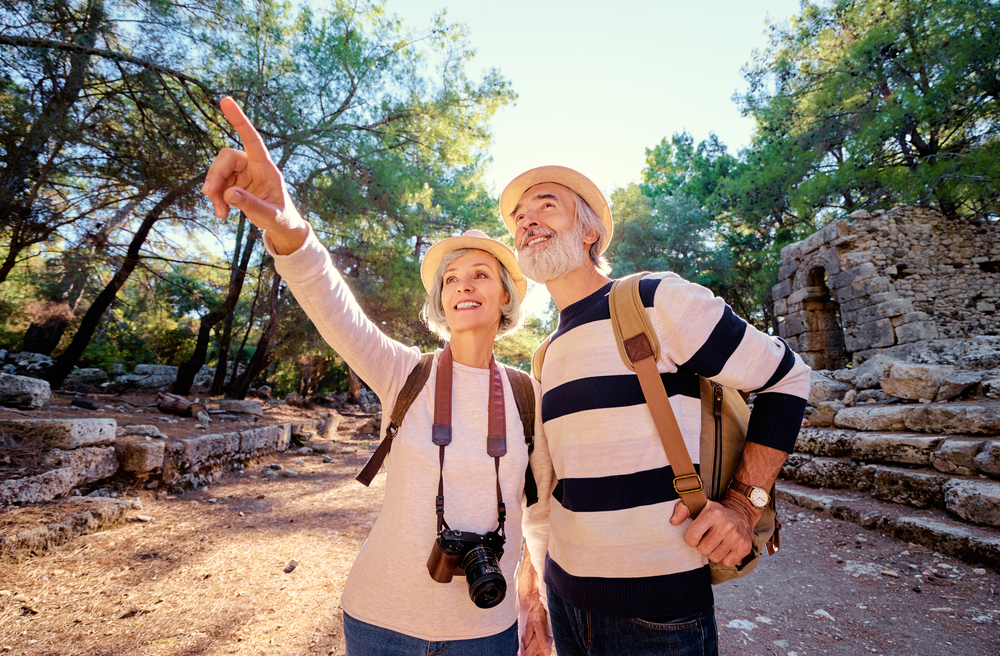
Seniors love to travel. Since they’ve reached an age when they don’t have to take care of the children or when they don’t have to go to work, seniors can often go on longer holidays further away from home.
Tourism for seniors is increasing in popularity. Two separate types of tourists can be found among them. Couples and group senior tourists are the two main types of travelers seen among the elderly.
Senior couples prefer romantic relaxing locations. Being out in nature or even visiting some of the most important tourist cities around the world are attractive proposals to senior tourists.
Group senior tourists are also popular. Seen in every large city around the world, these groups travel together, they eat in the same places, and they visit the same attractions.
The benefits of traveling in groups as seniors include better safety, the opportunity to socialize, a pre-planned trip, and plenty of opportunities to have fun.
19. Slow-paced tourists

Slow-paced tourists are travelers who like to stay more in a certain location. Instead of spending two days in a city or village, these tourists can spend up to a week in a location. Slow-paced tourism can expand to holidays that take up to a month or even two months.
The benefits of slow-paced tourism are that it allows further discovery opportunities and more socializing opportunities. Slow-paced tourism is ideal for those interested in a cultural or discovery type of experience.
Villages in Germany are known for slow-paced tourism. People come here to see various traditions. They see livestock and farming that typically requires a slower pace of travel.
The benefits of slow travel are that it allows a deeper understanding of a certain culture. But even these types of travelers can be split into multiple sub-categories.
For example, slow-paced tourists can be interested in only visiting a country in appreciation for a certain personality. Slow-paced tourism developed the sub-niche of Shakespeare fans tourism in England.
20. Special interest tourists
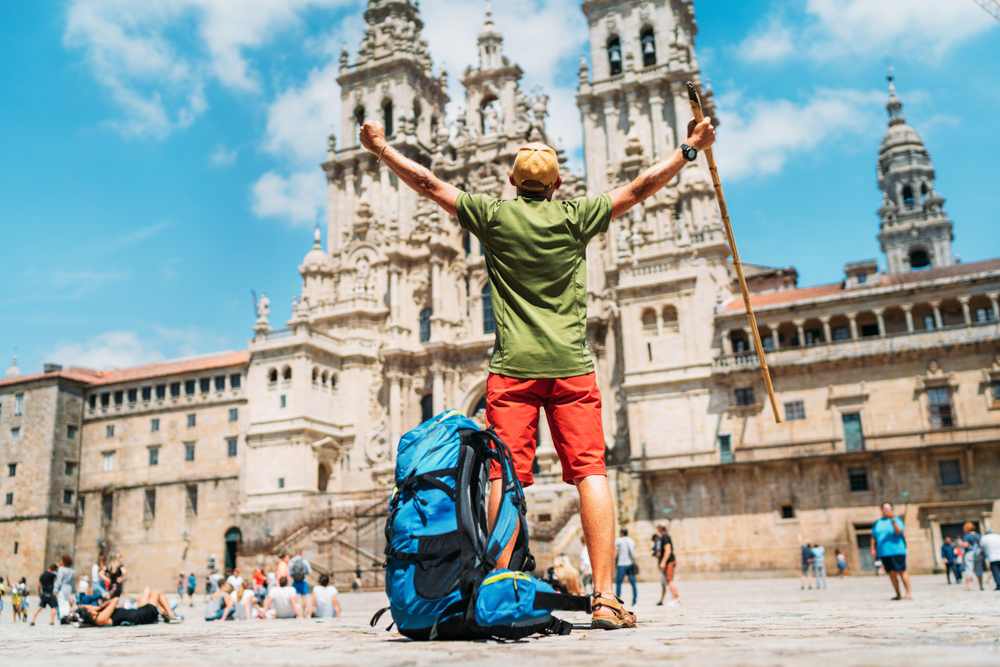
Special interest tourists generally visit a location for one thing only. This can be anything from a sports adventure opportunity or to visit a famous landmark. Examples of special interest tourists are seen all across the world.
Most special interests are tied to a historic location, a sports occasion, an individual, or a religious significance place. For example, tourists only go to Santiago de Compostela to visit the city’s cathedral. The same one-attraction or one-activity type of tourism is seen all around the world.
21. Sports tourists
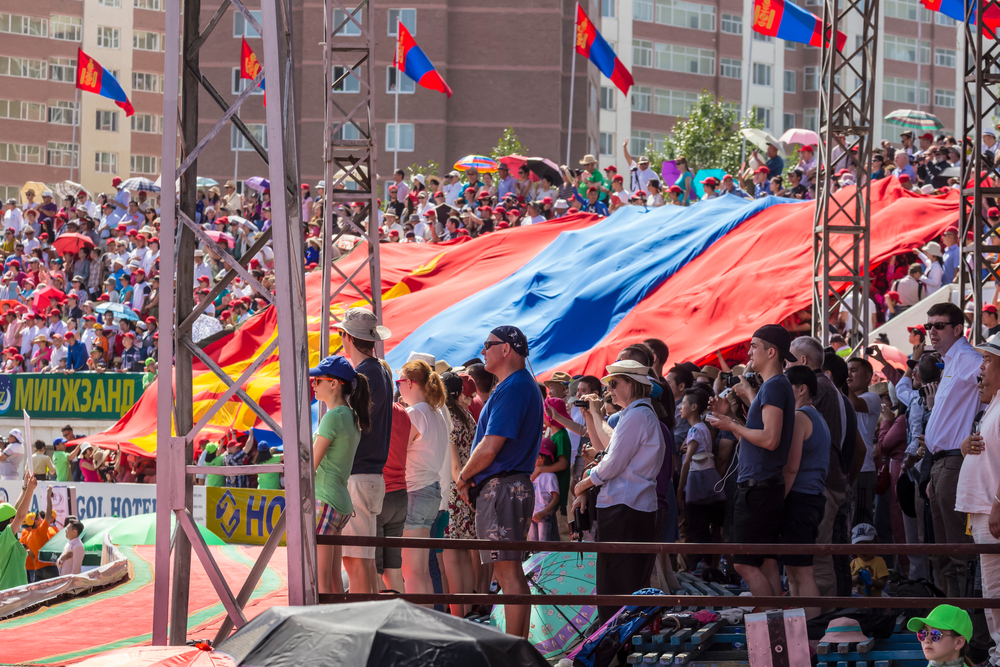
Sports tourism is at an all-time high. This type of tourism isn’t new, but the rise of sports and sports personalities makes people travel. Sports tourists often travel with their teams. Baseball fans and football fans often travel to support their teams.
But these tourists can also travel without a specific sporting event in mind. They can travel to see stadiums or they can travel to see important places in sports.
One of the most visited stadiums in the world is Camp Nou in Barcelona. This is the home of the most popular sports team in the world, FC Barcelona. The stadium sees millions of tourists per year. A large number of them only come here to see the stadium and the place where their favorite football players play.
Sports tourism has plenty to offer all around the world. The second most popular football team in the world is FC Liverpool. Its stadium is normally visited by thousands of tourists and football fans from around the world even when it’s not a match day. Groups are split into hourly visits and they get to visit the stadium in a 1-hour tour.
But the most important type of sports tourists is the traveler going to a certain event. In the US, sports tourists are best represented by Superbowl fans. This is where travelers from all around the country try to reach the finals, an event which is often quite expensive and difficult to get into.
A similar event is seen in Europe with the final Champions League game where sports fans from around the continent fight to get tickets to the event and to fly to the destination stadium for the big game.
The drawbacks of sports tourism are the lack of diversity outside stadiums, sports museums, and sporting events. Most of the tourists interested in a particular part of sports are normally reserved when it comes to traveling for other sports attractions such as small private sports memorabilia collections.
Unlike other tourists, sports tourists are known to spend a lot on events. Most sports events worth traveling for are known for their high ticket prices.
This is why sports fans typically have to start saving sooner compared to other tourists, especially since accommodation prices are higher in the period of a large nearby sporting event.
Saving up is mandatory for these tourists who need to spend more than others to reach a destination.
Related posts:

- English (CA)
- Deutsch (DE)
- Deutsch (CH)
8 types of tourism that you need to know
The three tourism categories, domestic tourism, inbound tourism, outbound tourism, the 8 types of tourism according to motivation, business tourism.
- Meet with business partners or prospects
- Attend an event, conference, or trade show
- Visit another office location of the same company
?)
See how to save money on business travel
Leisure tourism, shopping tourism, cultural tourism, sports tourism, rural tourism, mountain tourism, urban tourism, many people travel – but for completely different reasons.
?)
Make business travel simpler. Forever.
- See our platform in action . Trusted by thousands of companies worldwide, TravelPerk makes business travel simpler to manage with more flexibility, full control of spending with easy reporting, and options to offset your carbon footprint.
- Find hundreds of resources on all things business travel, from tips on traveling more sustainably, to advice on setting up a business travel policy, and managing your expenses. Our latest e-books and blog posts have you covered.
- Never miss another update. Stay in touch with us on social for the latest product releases, upcoming events, and articles fresh off the press.
?)
5 inefficient processes affecting your business and how to fix them
?)
Duty of care in the workplace: everything you need to know
?)
CEO Roles and Responsibilities: conquer your role as CEO
- Business Travel Management
- Offset Carbon Footprint
- Flexible travel
- Travelperk Sustainability Policy
- Corporate Travel Resources
- Corporate Travel Glossary
- For Travel Managers
- For Finance Teams
- For Travelers
- Thoughts from TravelPerk
- Careers Hiring
- User Reviews
- Integrations
- Privacy Center
- Help Center
- Privacy Policy
- Cookies Policy
- Modern Slavery Act | Statement
- Supplier Code of Conduct

The Ultimate Guide To Types of Tourism: From Active to Zoological and More
Attract Tourists Like Magic By Using The 5 Stages Of The Traveler’s Journey
Welcome to our ultimate guide to types of tourism! This collection is a comprehensive exploration of the diverse world of travel.
In this guide, we delve into an extensive array of tourism types, each offering unique experiences and perspectives on the world. From thrill-seekers to animal enthusiasts and more, this guide covers a spectrum that caters to every traveler’s preference and style.
Our aim is to enlighten both seasoned and novice tourism professionals and providers about the myriad ways people can explore, learn, and interact with different cultures, environments, and communities.
Join us as we journey through each type of tourism, uncovering the nuances and specialties that make each one distinct and worthwhile.
3 Benefits to Understanding Types of Tourism
3 limitations of tourism typologies, active tourism, adventure tourism, accessible tourism, agritourism, alternative tourism, archaeological tourism, birth tourism, business tourism or mice tourism, bird tourism, coffee tourism, community-based tourism, craft tourism, cruise tourism, culinary tourism or food tourism, cultural tourism, dark tourism, dental tourism, disaster tourism, domestic tourism, drug tourism, educational tourism, enotourism/wine tourism, experiential tourism, extreme tourism, fashion tourism, film tourism, genealogy tourism, halal tourism, health tourism, heritage tourism, honeymoon tourism, industrial tourism, jungle tourism, justice tourism, lgbt tourism, literary tourism, medical tourism, militarism heritage tourism, music tourism, nautical tourism, ocean tourism, photography tourism, political tourism, rail tourism, regenerative tourism, religious tourism, rural tourism, science tourism, senior tourism, sex tourism, slow tourism, slum tourism, snow and ice tourism, space tourism, sports tourism, sustainable tourism, virtual tourism, voluntourism, war tourism, wellness tourism, wildlife tourism, zoological tourism, what other types of tourism are out there, what are the benefits of understanding types of tourism.
As you explore this guide, consider both the benefits and limitations of these tourism types.
Use them as a lens to view the vast, dynamic landscape of travel, keeping in mind that the real essence of tourism often lies in the unique, unclassifiable experiences that transcend these categories.
This guide aims to spark ideas, foster understanding, and offer a structured overview while celebrating the diversity and complexity of travel experiences worldwide.
- Identifying Personal Preferences and Destination Offerings – By exploring the different types of tourism, you can better understand what appeals to you as a traveler or what your destination can uniquely offer. This knowledge helps in tailoring travel experiences to personal tastes or in marketing a destination effectively.
- Competitive Analysis – For travel professionals and destination planners, understanding the breadth of tourism types provides a valuable tool for competitive analysis. By seeing what other destinations are doing, you can identify trends, gaps, and opportunities in the market.
- Learning from Successes and Failures – This guide serves as a repository of diverse tourism practices, allowing you to see what works and what doesn’t in different contexts. Such insights are invaluable for refining strategies and offerings in the tourism industry.
- Academic Orientation – While the categorization of tourism types is insightful, it’s important to recognize that this approach can be somewhat academic. The way these categories are defined and discussed may not always align with the more fluid, real-world experiences of travelers and industry practitioners.
- Tourist Self-Identification – Many tourists may not consciously identify with specific tourism labels like “wellness tourism seekers” or “adventure tourists.” Their motivations and behaviors might overlap across several types of tourism, making it challenging to pigeonhole their experiences into a single category.
- Guidelines, Not Rules – Consequently, it’s crucial to view these categories as flexible guidelines rather than rigid classifications. They offer a framework for understanding the broad spectrum of tourism, but they should be adapted and interpreted in the context of real-world experiences and market dynamics.
Now, I would like to begin expanding our list of types of tourism. I would like to give you 5 at a time. For each type of tourism, please give a 4-5 sentence paragraph explaining generally what this type of tourism consists of. Then give 3 bullets of examples from around the world that classify this type of tourism. Does that sound doable?
64 Types of Tourism (and Counting!)
Active tourism is centered around travel experiences that involve physical activities and outdoor adventures. It’s ideal for those who seek an energetic and health-conscious way to explore new destinations.
This type of tourism includes a range of activities such as hiking tours, cycling tours, and running tours, each offering a unique way to connect with the landscape and culture of a place.
Examples of active tourism :
- Hiking Tours in the Swiss Alps – Trekking through scenic mountain trails and enjoying breathtaking views.
- Cycling Tours in the Loire Valley, France – Exploring picturesque villages and vineyards on bike.
- Run Tours in the Italian Dolomites – Self-guided and guide-led tours through one of the most challenging and dramatic run destinations.
Adventure tourism is characterized by its focus on active, outdoor experiences that often involve an element of risk or physical exertion. It caters to travelers seeking excitement, adrenaline, and exploration in natural or exotic environments.
This type of tourism usually involves activities like trekking, mountain biking, rock climbing, or water sports. It appeals to those who want to step outside their comfort zone and embrace nature’s challenges.
Examples of Adventure Tourism :
- Trekking in the Himalayas, Nepal – Offering some of the world’s most breathtaking treks, including the famous Everest Base Camp trek.
- White-water Rafting in the Grand Canyon, USA – Navigating the rapids of the Colorado River amidst stunning canyon scenery.
- Safari Adventure in Kruger National Park, South Africa – Experiencing wildlife up close on guided safaris and bush walks.
Accessible tourism ensures travel and tourism opportunities are available to all people, regardless of their physical limitations, disabilities, or age.
This form of tourism focuses on creating inclusive environments, from transportation to accommodations and attractions, ensuring accessibility for everyone. It’s about removing barriers to travel and embracing a diverse range of travelers.
Examples of accessible tourism :
- Barrier-Free Travel in Berlin, Germany – Known for its accessible public transportation and facilities.
- Accessible Beaches in Gold Coast, Australia – Featuring beach wheelchairs and accessible walkways.
- Disney World, Florida, USA – Offering extensive accessibility options for visitors with various disabilities.
Agritourism, or agricultural tourism, involves visiting a working farm or any agricultural, horticultural, or agribusiness operation to enjoy, be educated, or be involved in activities.
This type of tourism includes a wide range of activities like fruit picking, farm stays, wine tasting, and learning about rural ways of life. It’s a way for tourists to experience and understand the agricultural landscape and traditions.
Examples of agritourism :
- Wine Tours in Tuscany, Italy – Exploring vineyards and tasting world-class wines.
- Farm Stays in Vermont, USA – Participating in farm activities and enjoying local, farm-to-table meals.
- Tea Plantation Tours in Kerala, India – Witnessing tea production and enjoying scenic plantation walks.
Alternative tourism is an approach that emphasizes travel outside of the conventional mass tourism model. It focuses on smaller groups, less trodden destinations, and experiences that promote environmental sustainability, cultural understanding, and local community engagement.
This type of tourism often involves eco-friendly practices, cultural immersion, and responsible travel ethics.
Examples of alternative tourism:
- Eco-Lodges in the Amazon Rainforest, Brazil – Providing sustainable accommodation and immersive rainforest experiences.
- Community-based Tourism in Chiang Mai, Thailand – Engaging with local hill tribes and participating in their daily activities.
- Responsible Wildlife Tours in Galapagos Islands, Ecuador – Promoting conservation and responsible interaction with unique wildlife.
Archaeological tourism involves traveling to sites of historical and archaeological significance. It appeals to those interested in the ancient history and civilizations of different cultures.
Tourists get to explore ruins, artifacts, and museums, often with the guidance of experts to enrich their understanding of the site’s historical context.
Examples of archaeological tourism :
- Pyramids of Giza, Egypt – Exploring one of the most iconic and ancient wonders of the world.
- Machu Picchu, Peru – Visiting the well-preserved ruins of an Incan city set high in the Andes Mountains.
- Roman Colosseum, Italy – Touring the remains of the ancient Roman amphitheater, rich in historical significance.
Birth tourism refers to the practice of traveling to another country for the purpose of giving birth in that country. The primary motivation is often to obtain certain benefits for the child, such as citizenship or access to superior healthcare.
This type of tourism involves extended stays and often requires considerable planning and understanding of the destination’s legal and medical systems.
Examples of birth tourism :
- Canada and the United States – Popular destinations for birth tourism due to the automatic right to citizenship for children born in these countries.
- Brazil – Known for its high-quality healthcare facilities attracting birth tourists.
- Germany – Offers excellent healthcare and allows children born to foreign parents to apply for citizenship under certain conditions.
Business tourism, also known as corporate or MICE (Meetings, Incentives, Conferences, and Exhibitions) tourism, involves travel for business-related purposes. This includes attending conferences, meetings, trade shows, and corporate events.
It’s a major sector of the tourism industry, often involving high-level logistics and luxury accommodations.
Examples of business tourism/MICE tourism :
- Dubai, UAE – Frequently hosts international business conferences and exhibitions.
- Las Vegas, USA – Known for its large convention centers and hosting major trade shows.
- Singapore – A hub for corporate meetings and international business events in Asia.
Bird tourism, or birding, is a form of natural tourism where individuals travel specifically to observe and study birds in their natural habitat. This type of tourism is popular among wildlife enthusiasts and nature photographers.
It contributes to conservation efforts and promotes awareness of bird species and their environments.
Examples of bird tourism :
- Costa Rica – Home to a diverse range of bird species, attracting bird watchers from around the world.
- Kruger National Park, South Africa – Offers birding safaris to see African bird species.
- Papua New Guinea – Known for its endemic bird species, including the famous Birds of Paradise.
Coffee tourism centers around visiting coffee plantations, learning about the coffee production process, and tasting various types of coffee. It provides insight into the journey of coffee from bean to cup, including cultivation, harvesting, and roasting.
This type of tourism is especially popular among coffee enthusiasts and those interested in agritourism. It’s also a way to understand the cultural and economic importance of coffee in different regions.
Examples of coffee tourism :
- Coffee Plantations in Colombia – Exploring the renowned coffee-growing regions and experiencing the rich flavor of Colombian coffee.
- Café Tours in Vienna, Austria – Discovering the historic coffee houses and the city’s coffee culture.
- Coffee Farms in Uganda – A special recommendation from Travel Marketing School’s founder, as he conducted a research project in Uganda, delving into the local coffee industry and its impact on communities.
Community-based tourism focuses on local communities and their cultures, traditions, and daily lives. It’s a form of sustainable tourism that aims to benefit local residents directly, often through immersive cultural experiences.
This tourism type encourages respectful and meaningful interactions between tourists and host communities.
Examples of community-based tourism :
- Sapa, Vietnam – Visitors engage with local hill tribes and experience traditional lifestyles.
- Masai Mara, Kenya – Offers cultural experiences with the Maasai people, including village tours and traditional dance performances.
- Oaxaca, Mexico – Known for community-based cultural tours, artisan workshops, and local cuisine.
Craft tourism involves traveling to destinations known for unique local crafts and artisanal products. Tourists get the chance to see artisans at work, learn about traditional crafting techniques, and purchase handmade goods.
This type of tourism supports local artisans and preserves cultural heritage.
Examples of craft tourism :
- Marrakech, Morocco – Famous for its souks with traditional crafts like pottery, leather goods, and textiles.
- Kyoto, Japan – Offers experiences in traditional Japanese crafts such as kimono making and woodworking.
- Santa Fe, New Mexico, USA – Known for Native American and Spanish colonial crafts, including jewelry and pottery.
Cruise tourism involves traveling on cruise ships that offer various on-board amenities and stop at multiple destinations. It’s a unique way to explore different places while enjoying the luxury and entertainment provided on the cruise.
This type of tourism is popular for its convenience, all-inclusive packages, and the ability to visit multiple locations in a single trip.
Examples of cruise tourism :
- Caribbean Cruises – Known for their scenic island stops and vibrant on-board activities.
- Mediterranean Cruises – Offering a journey through historic ports in countries like Italy, Greece, and Spain.
- Alaskan Cruises – Showcasing stunning glacier views, wildlife, and unique shore excursions.
Culinary tourism, also known as food tourism, involves traveling primarily for experiencing the food and culinary traditions of a particular region.
This type of tourism is not just about dining out, but also includes activities like food tours, cooking classes, wine tastings, and visiting farmers’ markets. It appeals to those keen on exploring a destination’s culture through its gastronomy.
Examples of culinary tourism or food tourism :
- Bologna, Italy – Known for its rich food culture, including dishes like Bolognese sauce and Parmigiano Reggiano cheese.
- Bangkok, Thailand – Famous for its street food tours offering a taste of authentic Thai cuisine.
- Oaxaca, Mexico – Offers culinary experiences centered around traditional Mexican cuisine, including mole and mezcal tasting.
Cultural tourism involves traveling to experience the culture, traditions, and lifestyle of a particular area. This includes visiting historical sites, festivals, art galleries, theaters, and experiencing local customs.
Cultural tourists seek to gain an authentic experience and a deeper understanding of the destination’s heritage.
Examples of cultural tourism :
- Kyoto, Japan – Renowned for its temples, traditional tea ceremonies, and Geisha culture.
- Paris, France – Offers a rich cultural experience with its world-famous museums, art galleries, and historical architecture.
- Marrakech, Morocco – Known for its vibrant souks, historic palaces, and Berber culture.
Dark tourism involves visiting sites associated with death, suffering, or tragedy. This controversial form of tourism is often educational and thought-provoking, aiming to commemorate and remember historical events.
It includes visiting war zones, genocide memorials, disaster sites, and prisons.
Examples of dark tourism :
- Auschwitz-Birkenau, Poland – A former Nazi concentration and extermination camp, now a museum and memorial.
- Chernobyl, Ukraine – Tours to the site of the Chernobyl nuclear disaster.
- Ground Zero, New York, USA – The site of the September 11 attacks, now home to a memorial and museum.
Dental tourism involves traveling abroad for affordable dental care, surgery, or procedures that are more expensive in one’s home country. It’s often combined with the opportunity to vacation and relax during the recovery period.
This type of tourism is popular due to the cost savings and quality of care available in certain countries.
Examples of dental tourism :
- Bangkok, Thailand – Known for high-quality dental services at a fraction of the cost compared to Western countries.
- Budapest, Hungary – A popular destination for dental care, offering modern clinics and experienced dentists.
- Costa Rica – Attracts dental tourists with its combination of professional dental care and beautiful vacation spots.
Disaster tourism is the practice of visiting locations that have experienced natural or man-made disasters. It can be controversial, but when managed ethically, it can offer educational value and support for the affected communities through tourism revenue.
This type of tourism includes visiting areas hit by hurricanes, earthquakes, or industrial catastrophes.
Examples of disaster tourism :
- New Orleans, USA – Tours of areas affected by Hurricane Katrina, focusing on the disaster’s impact and recovery efforts.
- Pompeii, Italy – An ancient city preserved in volcanic ash from Mount Vesuvius, offering insights into the life and sudden end of a Roman city.
- Fukushima, Japan – Guided tours in the regions affected by the 2011 tsunami and nuclear disaster, focusing on the impacts and ongoing recovery.
Domestic tourism involves traveling within one’s own country rather than going abroad. This type of tourism allows individuals to explore different regions, cultures, and attractions within their national borders. It’s a way to support local economies and discover the diversity of one’s own country.
Domestic travel can range from weekend getaways to extended tours and can include a variety of activities like city breaks, countryside excursions, or coastal holidays.
Examples of domestic tourism :
- The Lake District, England – Known for its stunning landscapes, hiking trails, and quaint villages.
- Yellowstone National Park, USA – Attracts visitors with its geothermal features and wildlife.
- Great Ocean Road, Australia – A scenic drive famous for its rugged coastline, including the Twelve Apostles.
Drug tourism refers to travel to a region to obtain or use drugs that are illegal in one’s home country. This controversial type of tourism often involves substances that are culturally or legally accepted in the destination.
It’s important to approach this topic with an understanding of the legal and ethical implications involved.
Examples of drug tourism :
- Amsterdam, Netherlands – Known for its coffee shops where certain types of cannabis are legally sold and consumed.
- Ayahuasca Retreats in Peru – Offering spiritual experiences with the traditional Ayahuasca brew, often under the guidance of a shaman.
- Certain States in the USA – Where the recreational use of cannabis is legal, attracting tourists from other states or countries.
Ecotourism focuses on responsible travel to natural areas, conserving the environment, and improving the well-being of local people. It emphasizes minimizing the impact of tourism, promoting environmental awareness, and providing direct financial benefits for conservation and community development.
Ecotourism experiences often include wildlife viewing, nature hikes, and educational activities about local ecosystems.
Examples of ecotourism :
- Costa Rica – A global leader in ecotourism, known for its rainforest tours and conservation efforts.
- The Galapagos Islands, Ecuador – Offers unique wildlife experiences with a strong emphasis on preserving the islands’ delicate ecosystem.
- Kenya – Renowned for its safari experiences in national parks that combine wildlife viewing with conservation efforts.
Educational tourism is travel aimed at acquiring knowledge or learning something new, including student exchanges, study tours, and academic sabbaticals.
This type of tourism can encompass a wide range of subjects, from language learning to cultural studies, and is often facilitated by educational institutions.
Examples of educational tourism :
- Language Schools in Spain – Offering immersive Spanish language learning experiences.
- Historical Tours in Rome, Italy – Focusing on the city’s rich ancient history and architecture.
- Cooking Schools in Thailand – Where tourists learn to cook traditional Thai dishes in a hands-on setting.
Enotourism, or wine tourism, involves visiting vineyards, wineries, wine festivals, and tasting rooms to experience the process of wine production and to taste wines in their natural setting.
This type of tourism often includes learning about viticulture and winemaking processes, and experiencing the culture and cuisine associated with wine regions.
Examples of enotourism or wine tourism :
- Bordeaux, France – Famous for its wine tours and tastings in renowned vineyards.
- Napa Valley, California, USA – Known for its world-class wineries and beautiful landscapes.
- Tuscany, Italy – Offers picturesque vineyards, wine tastings, and tours of historic wineries.
Experiential tourism focuses on creating immersive experiences for travelers, allowing them to actively engage with the history, people, culture, food, and environment of a destination. Instead of being passive observers, tourists are encouraged to participate actively in the local way of life.
This type of tourism often involves authentic, hands-on activities that provide a deeper understanding of the local culture.
Examples of experiential tourism :
- Live Like a Local in Bali, Indonesia – Engaging in traditional Balinese daily activities, from rice farming to temple rituals.
- Culinary Classes in France – Learning to cook regional French dishes with local chefs.
- Maori Cultural Experiences in New Zealand – Immersive experiences in Maori history, art, and traditional ceremonies.
Extreme tourism caters to tourists seeking adrenaline-pumping activities and experiences that involve a high level of risk. This type of tourism is for thrill-seekers who enjoy challenging themselves physically and mentally.
Activities often take place in extreme or unusual environments, from remote wilderness to harsh climates.
Examples of extreme tourism :
- Mount Everest Expeditions, Nepal – Attempting to summit the world’s highest peak.
- Volcano Boarding in Nicaragua – Sliding down the slopes of an active volcano on a specialized board.
- Ice Diving in Antarctica – Exploring underwater environments beneath the ice.
Fashion tourism revolves around traveling to destinations known for their influence in the world of fashion. This includes visiting fashion capitals for events like Fashion Week, exploring famous shopping districts, and attending fashion shows.
It’s a blend of travel and the love of fashion, style, and shopping.
Examples of fashion tourism :
- Milan Fashion Week, Italy – Attending one of the most prestigious events in the fashion world.
- Shopping in Paris, France – Exploring high-end fashion boutiques in areas like the Champs-Élysées.
- Garment District Tour in New York City, USA – Discovering the heart of America’s fashion industry.
Film tourism involves visiting locations where famous movies or TV shows were filmed. This type of tourism allows fans to connect with their favorite media by seeing and experiencing the actual places featured on screen.
It includes guided tours of film sets, themed attractions, and visiting iconic locations from popular films.
Examples of film tourism :
- Hobbiton Movie Set, New Zealand – Exploring the filming location of “The Lord of the Rings” and “The Hobbit” trilogies.
- Game of Thrones Tours in Dubrovnik, Croatia – Visiting key filming locations from the popular TV series.
- Harry Potter Studio Tour in London, England – Experiencing the behind-the-scenes of the Harry Potter movie series.
Genealogy tourism, or ancestry tourism, involves individuals traveling to explore their family roots and heritage. This journey often includes visiting ancestral hometowns, exploring archives and libraries, and connecting with distant relatives.
It’s a personal form of tourism that provides a deeper understanding of one’s family history and cultural background.
Examples of genealogy tourism :
- Visiting Ellis Island, USA – Exploring the gateway for millions of immigrants and searching historical records.
- Ancestral Villages in China – Travelers visit their ancestral villages to learn about family history and participate in traditional customs.
- Genealogy Research in Ireland – Utilizing resources like the National Library of Ireland to trace Irish ancestry and visiting ancestral homes.
Geotourism focuses on the geographical characteristics of a destination, including its culture, aesthetics, heritage, and well-being of its inhabitants. It emphasizes a deep respect and appreciation for the intrinsic natural and cultural features of a place.
Geotourism often involves exploring unique geological features, landscapes, and local traditions in a sustainable manner.
Examples of geotourism :
- Grand Canyon, USA – Marveling at one of the world’s most renowned geological wonders.
- Icelandic Geothermal Springs – Experiencing geysers, hot springs, and volcanic landscapes.
- The Great Barrier Reef, Australia – Exploring the world’s largest coral reef system, renowned for its vibrant marine life.
Halal tourism caters to Muslim travelers who wish to adhere to their Islamic beliefs while traveling. This includes access to Halal food, prayer facilities, and accommodation that aligns with Islamic practices.
Halal tourism also often involves experiences that respect Islamic culture and heritage.
Examples of halal tourism :
- Istanbul, Turkey – Offering a rich Islamic heritage, Halal-friendly hotels, and mosques.
- Kuala Lumpur, Malaysia – Known for its Halal culinary scene and Islamic art museums.
- Dubai, UAE – Providing luxury Halal travel experiences, from shopping to accommodation.
Health tourism involves traveling to improve one’s physical or mental health, often including medical treatments, wellness retreats, or fitness programs.
This type of tourism can range from spa and wellness retreats to undergoing medical procedures or therapies in specialized facilities abroad.
Examples of health tourism :
- Spa Retreats in Bali, Indonesia – Offering holistic wellness experiences, including traditional Balinese treatments.
- Yoga Retreats in Rishikesh, India – Known as the ‘Yoga Capital of the World’, offering a range of yoga and meditation retreats.
- Thermal Baths in Budapest, Hungary – Famous for its thermal springs and spa culture.
Heritage tourism involves visiting sites of historical or cultural significance to understand and appreciate the past. It includes exploring ancient ruins, historical landmarks, museums, and culturally rich neighborhoods.
This type of tourism is about connecting with the history, traditions, and heritage of a place.
Examples of heritage tourism :
- The Pyramids of Giza, Egypt – Exploring one of the most significant archaeological sites in the world.
- The Historic Center of Rome, Italy – Immersing in the rich history of the Roman Empire.
- The Great Wall of China – Visiting the iconic symbol of China’s historical defense architecture.
Honeymoon tourism caters to newlyweds seeking a romantic and memorable experience post-wedding. It often involves luxury accommodations, picturesque settings, and romantic activities.
Destinations range from tropical beaches to cozy mountain retreats, tailored to provide an intimate and special experience for couples.
Examples of honeymoon tourism :
- Maldives – Known for its overwater bungalows and idyllic island settings.
- Paris, France – Often dubbed the ‘City of Love’, popular for its romantic ambiance.
- Santorini, Greece – Famous for its stunning sunsets, white-washed buildings, and beautiful beaches.
Industrial tourism involves visiting industrial sites, factories, or other facilities to learn about their history, operations, and contributions to society. This type of tourism offers insight into various industries, from traditional manufacturing to high-tech sectors.
Visitors get a chance to see how products are made and understand the industrial heritage of a region.
Examples of industrial tourism :
- Boeing Factory Tour, Seattle, USA – Observing the assembly of airplanes in the world’s largest building by volume.
- Guinness Storehouse, Dublin, Ireland – Exploring the history and production of the famous beer.
- BMW Welt, Munich, Germany – Showcasing the brand’s history and offering insights into modern car manufacturing.
Jungle tourism focuses on exploring dense rainforests or jungles, offering an immersive experience in rich, biodiverse environments. This type of tourism often includes guided treks, wildlife watching, and learning about the ecosystem and indigenous cultures.
It’s popular among nature enthusiasts and adventure seekers.
Examples of jungle tourism :
- Amazon Rainforest, Brazil – Experiencing the world’s largest tropical rainforest and its diverse wildlife.
- Taman Negara, Malaysia – Exploring one of the world’s oldest rainforests with guided jungle treks.
- Madagascar – Visiting unique ecosystems with a vast array of endemic species, from lemurs to exotic plants.
Justice tourism is a form of travel concerned with social justice and human rights. It involves visiting places significant to historical or contemporary struggles for justice and equality.
This type of tourism aims to educate travelers about issues like poverty, oppression, and civil rights, often involving interactions with local communities.
Examples of justice tourism :
- Robben Island, South Africa – The prison where Nelson Mandela was held, now a symbol of the struggle against apartheid.
- Civil Rights Trail, USA – Visiting key sites of the American Civil Rights Movement.
- Memorial to the Murdered Jews of Europe, Berlin, Germany – Reflecting on the history and impact of the Holocaust.
LGBT tourism caters to members of the LGBT community and is focused on destinations, accommodations, and events that are welcoming and inclusive. This type of tourism includes pride festivals, cruises, and destinations known for their supportive and vibrant LGBT scenes.
It promotes a safe and open environment for LGBT travelers.
Examples of LGBT tourism :
- San Francisco, USA – Known for its inclusive and vibrant LGBT community and history.
- Amsterdam, Netherlands – Hosting one of the world’s most famous pride parades and offering a welcoming atmosphere.
- Mykonos, Greece – A popular LGBT-friendly island with a lively nightlife and beautiful beaches.
Literary tourism involves visiting locations associated with famous authors, literary works, or literary history. This can include authors’ homes, settings of famous novels, or literary festivals.
It appeals to book lovers and those interested in the world of literature and storytelling.
Examples of literary tourism :
- Stratford-upon-Avon, England – The birthplace of William Shakespeare, with various related sites and theaters.
- Brontë Parsonage Museum, England – The former home of the Brontë sisters, set in the landscape that inspired their novels.
- Joyce’s Dublin, Ireland – Exploring the city through the lens of James Joyce’s works, particularly “Ulysses.”
Medical tourism involves traveling to another country for medical care, often driven by lower costs, higher quality services, or access to specific treatments not available in one’s home country.
This can include a wide range of medical services, from elective procedures like cosmetic surgery to complex treatments such as organ transplants or fertility therapy.
Examples of medical tourism :
- Bangkok, Thailand – Renowned for high-quality medical care at affordable prices, especially in cosmetic and reconstructive surgery.
- India – Offers advanced medical treatments like cardiac surgery and orthopedics at competitive prices.
- South Korea – Known for its advanced medical technology, particularly in areas like dermatology and plastic surgery.
Militarism heritage tourism involves visiting sites significant to military history, such as battlefields, war memorials, and military museums.
This type of tourism is aimed at understanding the historical context of wars and conflicts and honoring the memory of those who served.
Examples of militarism heritage tourism :
- Normandy, France – Visiting the D-Day landing beaches and war cemeteries from World War II.
- Gettysburg, USA – Exploring the site of the pivotal battle in the American Civil War.
- Hiroshima Peace Memorial, Japan – Reflecting on the impact of the atomic bomb and promoting peace.
Music tourism is travel motivated by the love of music, whether it’s visiting famous music destinations, attending concerts and festivals, or exploring the history of certain music genres.
This type of tourism can include a variety of musical experiences, from classical music concerts to rock festivals.
Examples of music tourism :
- Nashville, USA – Known as the “Music City” and famous for its country music scene and attractions like the Grand Ole Opry.
- Vienna, Austria – Celebrated for its classical music heritage and venues like the Vienna State Opera.
- New Orleans, USA – Renowned for its jazz music, lively music festivals, and vibrant street performances.
Nautical tourism encompasses activities and experiences related to sailing and boating. This can include yacht chartering, sailing regattas, and visiting maritime museums.
Nautical tourism is popular among those who enjoy the sea and water-based activities.
Examples of nautical tourism :
- Greek Islands Yacht Tour – Exploring the Aegean Sea and visiting various Greek islands by boat.
- Croatian Coastline – Offering sailing experiences along its scenic Adriatic coast.
- Monaco Yacht Show – One of the most prestigious nautical events showcasing luxury yachting.
Ocean tourism focuses on activities and experiences in and around the ocean. This includes a wide range of water-based activities such as scuba diving, snorkeling, ocean kayaking, and whale watching.
It’s ideal for those who wish to explore marine life and oceanic environments.
Examples of ocean tourism :
- Great Barrier Reef, Australia – World-famous for scuba diving and snorkeling, showcasing an array of marine life.
- Whale Watching in Maui, Hawaii – Offering opportunities to see humpback whales in their natural habitat.
- Surfing in Bali, Indonesia – Known for its excellent surfing spots and vibrant marine life.
Photography tourism caters to those who travel specifically to capture photographs of scenic, cultural, or unique subjects. This can include wildlife photography safaris, visits to picturesque landscapes, or urban photography tours.
It’s ideal for both amateur and professional photographers looking to expand their portfolios with diverse and compelling images.
Examples of photography tourism :
- Iceland – Popular for capturing natural phenomena like the Northern Lights and dramatic landscapes.
- Masai Mara, Kenya – A prime destination for wildlife photography, especially during the Great Migration.
- Paris, France – Offering classic urban photography opportunities with iconic landmarks like the Eiffel Tower.
Political tourism involves traveling to sites of significant political interest, including historical landmarks, political institutions, or locations known for political events.
This type of tourism is aimed at those interested in political history, activism, or contemporary political scenes.
Examples of political tourism :
- Washington D.C., USA – Visiting the U.S. Capitol, White House, and various political memorials.
- Berlin, Germany – Exploring sites like the Berlin Wall and Reichstag building, rich in political history.
- Beijing, China – Home to the Forbidden City and Tiananmen Square, significant in Chinese political history.
Rail tourism is centered around journeys on trains, offering a unique way to view landscapes and explore regions. This can range from luxury train experiences to scenic rail routes that traverse through picturesque countryside, mountains, or coastal areas.
It appeals to those who enjoy the romance and nostalgia of train travel.
Examples of rail tourism :
- Trans-Siberian Railway, Russia – One of the world’s longest train journeys, crossing diverse landscapes from Moscow to Vladivostok.
- The Ghan, Australia – A coast-to-coast rail journey across the Australian continent, from Darwin to Adelaide.
- Glacier Express, Switzerland – Renowned for its panoramic views of the Swiss Alps.
Regenerative tourism goes beyond sustainability, aiming to leave a place better than it was found. This approach involves engaging in travel practices that restore and enhance the environment, local culture, and community well-being.
It’s about creating a positive impact and contributing to the regeneration of the ecosystems and communities visited.
Examples of regenerative tourism :
- Reforestation Projects in the Amazon Rainforest, Brazil – Participating in efforts to replant and restore parts of the rainforest.
- Cultural Preservation Programs in Bali, Indonesia – Supporting initiatives that maintain and rejuvenate traditional Balinese arts and crafts.
- Ecosystem Restoration Camps, Various Locations – Joining camps that focus on restoring degraded landscapes and promoting ecological health.
Religious tourism, or pilgrimage, involves traveling to religious sites, temples, churches, or regions significant to specific faiths.
This type of tourism can be a spiritual journey or a way to explore the historical and cultural aspects of different religions.
Examples of religious tourism :
- Mecca, Saudi Arabia – The holiest city in Islam, visited by millions of Muslims for the Hajj pilgrimage.
- Vatican City – Attracting millions of Christian pilgrims and tourists to St. Peter’s Basilica and the Sistine Chapel.
- Varanasi, India – One of the oldest and most sacred cities in Hinduism, famous for its ghats and temples.
Rural tourism focuses on visiting rural areas to experience and understand the rural lifestyle, culture, and traditions. It often involves staying in villages, farmhouses, or homestays, and participating in activities like hiking, local crafts, and agriculture.
This type of tourism is popular among those seeking a tranquil and authentic experience away from urban centers.
Examples of rural tourism :
- Tuscany, Italy – Known for its picturesque countryside, vineyards, and traditional farm stays.
- Shirakawa-go, Japan – Offers a unique experience in traditional thatched-roof villages.
- Lancaster County, Pennsylvania, USA – Provides insight into the Amish lifestyle and culture.
Science tourism is centered around visiting sites of scientific interest, such as observatories, science museums, and research facilities. It appeals to those interested in learning about various scientific fields, from astronomy to geology.
This type of tourism often includes educational tours and interactive experiences designed to enhance understanding of scientific principles and discoveries.
Examples of science tourism :
- CERN, Switzerland – Touring the world’s largest particle physics laboratory.
- Kennedy Space Center, Florida, USA – Exploring NASA’s launch complex and space exploration exhibits.
- Galapagos Islands, Ecuador – Known for their unique biodiversity, offering insights into evolutionary biology.
Senior tourism caters to older travelers, often offering tailored travel experiences that are accessible and comfortable for them. This can include cultural tours, cruise trips, and leisure destinations with a focus on health, relaxation, and low-impact activities.
Senior tourism prioritizes ease of access, quality of services, and opportunities for social interaction.
Examples of senior tourism :
- Cruise trips in the Mediterranean – Providing accessible and leisurely travel experiences with stops at historical cities.
- Health resorts in Baden-Baden, Germany – Offering therapeutic spa treatments in a serene environment.
- Cultural tours in Japan – Guided tours with a focus on comfort and accessibility, exploring traditional Japanese culture.
Sex tourism involves traveling to engage in sexual activities, often with commercial sex workers. This controversial and often illegal form of tourism raises significant ethical and legal concerns.
It’s important to approach this topic with an understanding of the legal, social, and human rights implications involved.
Examples of sex tourism :
- Bangkok, Thailand – Known for its red-light districts, though this aspect is controversial and subject to legal and ethical scrutiny.
- Amsterdam, Netherlands – Notable for its legalized and regulated Red Light District, though the city has been taking measures to address issues related to sex tourism.
- Nevada, USA – Certain areas in Nevada have legal brothels, though this is a highly regulated industry.
Slow tourism emphasizes taking time to enjoy and experience the destination deeply rather than trying to see everything in a rush. It’s about immersing oneself in the local culture, environment, and way of life, often involving longer stays, and sustainable and mindful travel practices.
Examples of slow tourism :
- Canal Boating in France – Exploring the countryside at a leisurely pace through its network of canals.
- Walking tours in Tuscany, Italy – Enjoying the landscape, cuisine, and culture at a relaxed pace.
- Stay in a Ryokan, Japan – Experiencing traditional Japanese hospitality and culture in a serene setting.
Slum tourism involves visiting impoverished urban areas to see firsthand the life of residents in these communities. While it can raise awareness about poverty and social issues, it also raises ethical concerns about exploitation and voyeurism.
Responsible slum tourism should focus on respectful engagement and supporting local communities.
Examples of slum tourism :
- Dharavi, Mumbai, India – Guided tours that aim to break stereotypes and highlight the industriousness of the community.
- Township tours in South Africa – Visits to townships with a focus on cultural exchange and understanding the local history and social challenges.
- Favela tours in Rio de Janeiro, Brazil – Offering insights into the vibrant culture and community resilience in favelas.
Snow and ice tourism is all about travel experiences in cold and snowy environments. This type of tourism is popular for winter sports enthusiasts and those who enjoy the beauty of snowy landscapes.
Activities include skiing, snowboarding, ice skating, and visiting ice hotels or festivals.
Examples of snow and ice tourism :
- Skiing in Aspen, Colorado, USA – Offering world-class ski resorts and winter sports facilities.
- Ice Hotel Stay in Jukkasjärvi, Sweden – Experiencing unique accommodation entirely made of ice and snow.
- Harbin Ice Festival, China – Visiting one of the world’s largest ice and snow sculpture festivals.
Space tourism represents the cutting-edge of travel, offering civilians the opportunity to experience space. This emerging type of tourism includes suborbital flights that provide a few minutes of weightlessness and an incredible view of Earth from space.
It’s a frontier for wealthy adventurers and science enthusiasts.
Examples of space tourism :
- Virgin Galactic – Offering suborbital spaceflights for tourists.
- SpaceX – Developing orbital space tourism missions.
- International Space Station – Proposed private visits facilitated by companies like Axiom Space.
Sports tourism involves traveling to participate in or observe sporting events. This includes international competitions like the Olympics, marathons, football matches, or golf tournaments.
Sports tourism appeals to fans and athletes alike, offering them a chance to experience the excitement and camaraderie of sports in different locales.
Examples of sports tourism :
- FIFA World Cup, Various Locations – Attending one of the most prestigious and widely-viewed sports events in the world.
- Boston Marathon, USA – Participating or spectating in one of the oldest annual marathons.
- The Masters Golf Tournament, Augusta, USA – Observing one of the four major championships in professional golf.
Sustainable tourism focuses on traveling in a way that minimizes environmental impact and promotes conservation while benefiting local communities.
It involves responsible travel practices, supporting eco-friendly accommodations, and participating in activities that respect local culture and the environment.
Examples of sustainable tourism :
- Eco-lodges in Costa Rica – Staying in accommodations dedicated to conservation and sustainability.
- Community-based Eco Tours in Kenya – Participating in wildlife safaris that support conservation efforts and community development.
- Responsible Trekking in Nepal – Following eco-friendly practices and supporting local Sherpa communities.
Virtual tourism offers the experience of visiting a place through digital means, such as virtual reality (VR), augmented reality (AR), or online tours. It’s a way to explore destinations from home, making travel accessible to those unable to travel physically.
Virtual tours can cover historic sites, museums, natural wonders, and more.
- Virtual Reality Tours of the Louvre, France – Exploring the world-famous museum from the comfort of home.
- Online Guided Tours of the Great Wall of China – Experiencing one of the world’s most iconic landmarks digitally.
- Augmented Reality Experiences of Rome’s Ancient Sites – Using AR technology to see historical ruins in their original glory.
Voluntourism combines travel with volunteering for a cause, typically involving work towards environmental conservation, education, or community development.
While it allows travelers to contribute to positive change, it’s important to choose programs that genuinely benefit the local community and environment.
Examples of voluntourism :
- Teaching English in Rural Schools, Nepal – Assisting in educational institutions in underprivileged areas.
- Marine Conservation in the Great Barrier Reef, Australia – Participating in coral reef restoration and research projects.
- Community Building Projects – Helping construct basic infrastructure like schools and healthcare facilities.
War tourism involves visiting sites significant to wartime history, such as battlefields, war memorials, and museums.
It’s a form of tourism that seeks to understand the history of conflicts and honor the memories of those who fought in them.
Examples of war tourism :
- Vietnam War Sites, Vietnam – Exploring locations like the Cu Chi Tunnels and War Remnants Museum.
- Normandy Beaches, France – Visiting WWII D-Day landing sites and memorials.
- Somme Battlefields, France – Touring sites and cemeteries from one of the largest battles of the First World War.
Wellness tourism is centered around health and well-being, offering activities and experiences that promote physical, mental, and spiritual health. This type of tourism often includes spa retreats, yoga and meditation workshops, fitness programs, and holistic wellness therapies.
Examples of wellness tourism :
- Yoga Retreats in Rishikesh, India – Engaging in yoga and meditation in the birthplace of yoga.
- Thermal Spas in Iceland – Relaxing in natural hot springs surrounded by unique landscapes.
- Wellness Resorts in Bali, Indonesia – Participating in holistic wellness programs in a serene, tropical setting.
Wildlife tourism involves traveling to observe and interact with animals in their natural habitats. It’s a way for tourists to experience wildlife up close while promoting conservation and awareness of biodiversity.
Activities can include safaris, wildlife sanctuaries, and bird watching.
Examples of wildlife tourism :
- African Safaris, Kenya or Tanzania – Experiencing the diverse wildlife of the African savannah, including the “Big Five.”
- Gorilla Trekking in Rwanda and Uganda – Encountering mountain gorillas in their natural rainforest habitat.
- Penguin Colonies in Antarctica – Observing penguins and other Antarctic wildlife in one of the most remote areas of the world.
Zoological tourism focuses on visiting zoos, aquariums, and wildlife parks where visitors can see and learn about various animal species.
This form of tourism is educational, often highlighting conservation efforts and providing insights into animal behavior and habitats.
Examples of zoological tourism :
- San Diego Zoo, USA – Known for its vast variety of species and conservation efforts.
- Singapore Zoo, Singapore – Offering an immersive experience with its open-concept enclosures and diverse wildlife.
- Monterey Bay Aquarium, USA – Renowned for its marine life exhibits and ocean conservation education.
Have we missed any types of tourism that you think should be included on this list? Are there other examples you’d like to share? Send us a message and let us know what else should be included on this list.
6 Steps To Create an Ideal Customer Profile for Travel and Tourism

Social Listening in Tourism: A Key Tool for Destination Marketers

The Ultimate Guide to Brand Archetypes in Travel & Tourism
Exploring the World of Tourism: A Comprehensive Guide to 49 Types of Tourism
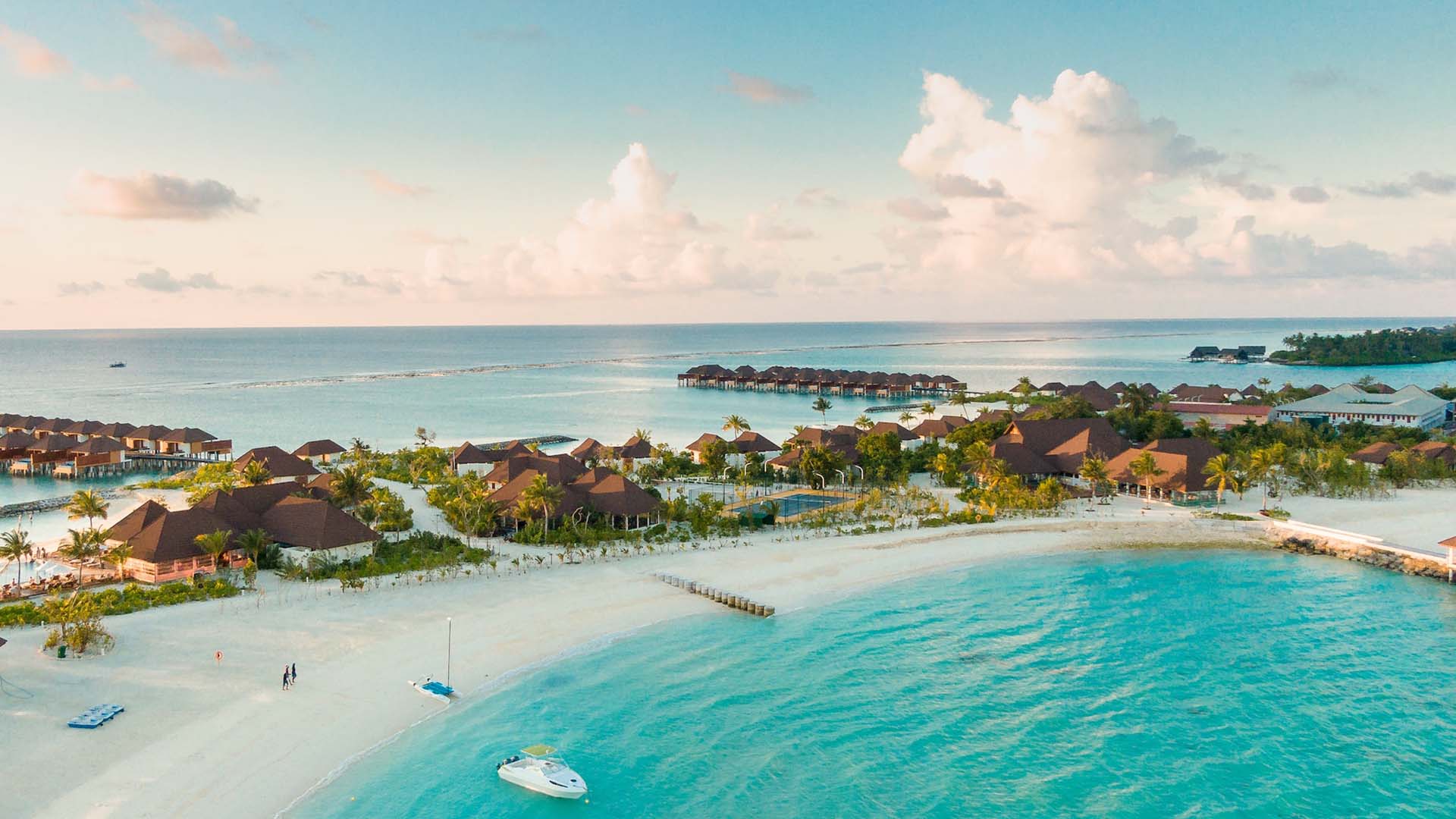
Have you ever thought about how many types of tourism there are in the world? From adventure tourism to medical tourism, the tourism industry offers a wide range of experiences for travelers.
Tourism is a rapidly growing industry, contributing greatly to the global economy . With the rise of globalization and advancements in technology, traveling has become more accessible and affordable for people all around the world.
As a result, the tourism industry has diversified and expanded to cater to the different interests and preferences of travelers.
If you are a travel enthusiast, you might be surprised to know that there are over 40 different types of tourism to choose from. Each type of tourism offers a unique experience, ranging from cultural immersion to extreme sports.
In this article, we will explore the different types of tourism in the world, giving you a glimpse into the vast array of options available to you.
Tourism is a social, cultural and economic phenomenon which entails the movement of people to countries or places outside their usual environment for personal or business/professional purposes.
49 Types of Tourism in the World
The tourism sector is constantly evolving, expanding beyond the basics of domestic, inbound, and outbound tourism.
As travel agencies, it is crucial to stay informed about the diverse range of tourism types to develop effective strategies and fuel the growth of your business. This comprehensive guide presents 62 types of tourism, offering valuable insights and opportunities for your agency to thrive in the dynamic world of travel.
Traditional Forms of Tourism
Leisure tourism.

Leisure tourism encompasses a range of activities that provide relaxation, entertainment, and cultural enrichment to travelers. Let's explore some popular forms of leisure tourism in more detail:
1. Beach Tourism
Beach tourism revolves around vacations and holidays spent in coastal areas, offering sun, sand, and various recreational activities such as swimming, sunbathing, beach volleyball, and water sports like snorkeling, surfing, and jet skiing.
Beach destinations around the world, such as Bali, Maldives, and the Caribbean, attract millions of tourists seeking relaxation and enjoyment in idyllic seaside settings.
2. Adventure Tourism
Adventure tourism caters to thrill-seeking individuals who seek exciting and adrenaline-pumping experiences. It includes activities like hiking, rock climbing, zip-lining, white-water rafting, paragliding, and bungee jumping in natural and adventurous settings.
Destinations like New Zealand, Costa Rica, and Switzerland offer breathtaking landscapes and thrilling adventure opportunities that attract adventure enthusiasts from across the globe.
3. Cultural Tourism
Cultural tourism focuses on exploring the rich heritage, traditions, and artistic expressions of a destination.
It involves visits to museums, historical sites, cultural festivals, and interactions with local communities to gain insight into their customs, rituals, and way of life. Destinations renowned for their cultural attractions include Rome with its ancient ruins, Kyoto with its traditional temples, and Istanbul with its diverse blend of cultures.
4. Wildlife Tourism
Wildlife tourism centers on observing and experiencing a particular region's diverse fauna and flora.
It includes activities such as safaris, birdwatching, nature walks, and visits to national parks and wildlife reserves. Destinations like South Africa's Kruger National Park, the Galapagos Islands in Ecuador, and the Serengeti in Tanzania offer incredible wildlife encounters and opportunities for conservation education.
Business Tourism

Business tourism, also known as MICE tourism (Meetings, Incentives, Conferences, and Exhibitions), caters to individuals traveling for business-related purposes.
Let's explore some key components of business tourism:
5. Meetings, Incentives, Conferences, and Exhibitions (MICE) Tourism
MICE tourism encompasses corporate meetings, conferences, conventions, trade shows, and exhibitions. It provides a platform for professionals to network, exchange knowledge, showcase products and services, and forge business relationships.
Major cities and convention centers worldwide, such as London, Dubai, and Las Vegas, host numerous MICE events, driving economic growth and fostering industry collaboration.
6. Trade Shows and Conventions
Trade shows and conventions are industry-specific events where businesses exhibit their products or services to potential clients, partners, and investors. These events serve as valuable marketing platforms, allowing companies to showcase their latest innovations, generate leads, and gain industry insights.
Trade shows like CES (Consumer Electronics Show) and Hannover Messe attract businesses from diverse sectors, facilitating business-to-business interactions and promoting industry growth.
7. Corporate Retreats and Team-Building Activities
Corporate retreats and team-building activities aim to foster teamwork, boost employee morale, and enhance organizational productivity. These events often take place in scenic locations, away from the usual office environment, and incorporate team-building exercises, workshops, brainstorming sessions, and recreational activities.
Corporate retreats not only strengthen internal relationships but also provide opportunities for strategic planning, innovation, and professional development.
Niche and Special Interest Tourism

Ecotourism promotes responsible travel practices that focus on preserving and conserving natural environments while providing educational and enriching experiences for travelers.
Let's delve into some facets of ecotourism:
8. Rainforest Exploration
Rainforest exploration allows travelers to immerse themselves in the lush biodiversity and unique ecosystems of tropical rainforests. Guided hikes, canopy walks, and wildlife spotting tours provide opportunities to witness rare flora and fauna, learn about sustainable conservation efforts, and contribute to local communities.
Destinations like the Amazon Rainforest in South America, Borneo's rainforests in Southeast Asia, and Costa Rica's Monteverde Cloud Forest offer captivating rainforest experiences.
9. Wildlife Conservation Tours
Wildlife conservation tours allow travelers to actively participate in conservation initiatives, contributing to the protection of endangered species and their habitats. These tours often involve volunteer work, such as monitoring wildlife, assisting in research projects, and habitat restoration efforts.
Popular wildlife conservation destinations include the Galapagos Islands, where visitors can help preserve unique marine and terrestrial ecosystems, and South Africa's game reserves, where wildlife conservation programs support endangered species.
10. Sustainable Travel Practices
Sustainable travel practices promote environmentally friendly behaviors, aiming to minimize negative impacts on natural resources, local communities, and cultures. These practices may include reducing carbon footprint, supporting local businesses, respecting local traditions, and engaging in activities that promote environmental stewardship.
Travelers can choose eco-lodges, and eco-friendly transportation options, and participate in community-based tourism initiatives to ensure their travel has a positive impact on the destination.
Wellness Tourism

Wellness tourism focuses on enhancing and rejuvenating one's well-being through various activities and experiences that prioritize physical, mental, and spiritual health.
Let's explore some aspects of wellness tourism:
11. Spa Retreats
Spa retreats offer a serene environment where travelers can indulge in relaxation, pampering treatments, and wellness therapies. From soothing massages and rejuvenating facials to holistic healing practices like yoga and meditation, spa retreats provide a sanctuary for rejuvenation and stress relief.
Destinations such as Bali, Thailand, and California's Napa Valley are renowned for their luxurious and holistic spa retreats.
12. Yoga and Meditation Retreats
Yoga and meditation retreats provide opportunities for individuals to deepen their mindfulness and spiritual practices in tranquil and picturesque settings. These retreats often combine daily yoga sessions, meditation practices, healthy cuisine, and workshops focused on personal growth and self-awareness.
Destinations like Rishikesh in India, Ubud in Bali, and Sedona in the United States are renowned for their yoga and meditation retreats.
13. Health and Wellness Resorts
Health and wellness resorts offer comprehensive programs designed to improve physical fitness, promote healthy lifestyles, and provide personalized wellness experiences. These resorts may offer fitness classes, nutritional guidance, spa treatments, wellness consultations, and activities like hiking, yoga, and mindfulness workshops.
Wellness-focused destinations such as Switzerland's renowned Swiss Alps resorts, Thailand's wellness retreats, and the wellness resorts in Arizona's Sonoran Desert cater to those seeking a holistic approach to well-being.
Culinary Tourism

Culinary tourism revolves around the exploration and appreciation of a destination's cuisine, culinary traditions, and gastronomic experiences. Let's discover the different aspects of culinary tourism:
14. Food and Wine Tours
Food and wine tours allow travelers to savor the local flavors, taste traditional dishes, and indulge in culinary delights unique to a particular region. These tours often include visits to local markets, food tastings, cooking demonstrations, and wine tastings at vineyards.
Destinations like Italy's Tuscany, France's Bordeaux region, and Japan's Kyoto are renowned for their culinary heritage and offer exceptional food and wine tours.
15. Cooking Classes and Culinary Experiences
Cooking classes and culinary experiences provide hands-on opportunities for travelers to learn about the local cuisine, traditional cooking techniques, and regional specialties. Under the guidance of expert chefs or local home cooks, participants can prepare and savor authentic dishes, gaining insights into the culinary culture of the destination.
Cities like Bangkok, Marrakech, and Barcelona are known for their immersive cooking classes and culinary workshops.
16. Farm-to-Table and Gastronomic Experiences
Farm-to-table experiences involve visits to local farms, orchards, and vineyards to witness the production process of fresh, organic ingredients. Gastronomic experiences encompass fine dining at renowned restaurants, tasting menus curated by celebrity chefs, and exploring local street food scenes.
Destinations like California's Napa Valley, France's Lyon, and Thailand's Chiang Mai provide exceptional farm-to-table and gastronomic experiences.
Adventure and Outdoor Tourism
Mountain tourism.

Mountain tourism attracts adventurous travelers seeking exhilarating experiences in breathtaking alpine landscapes. Here are some popular activities within mountain tourism:
17. Hiking and Trekking
Hiking and trekking adventures take travelers through scenic mountain trails, allowing them to explore the pristine wilderness, enjoy stunning vistas, and challenge themselves physically.
Destinations like the Himalayas in Nepal, the Swiss Alps, and the Rocky Mountains in North America offer a range of hiking and trekking opportunities suitable for different skill levels.
18. Mountaineering and Rock Climbing
Mountaineering and rock climbing appeal to those with a passion for conquering towering peaks and vertical rock formations.
From scaling iconic summits like Mount Everest and Mount Kilimanjaro to rock climbing in Yosemite National Park or the Dolomites, these activities offer a thrilling combination of physical endurance, technical skill, and awe-inspiring natural surroundings.
19. Skiing and Snowboarding
Skiing and snowboarding attract winter sports enthusiasts who enjoy gliding down snow-covered slopes and experiencing the adrenaline rush of downhill descents.
Popular ski destinations include Aspen in the United States, Whistler Blackcomb in Canada, and the Swiss Alps, where skiers and snowboarders can enjoy diverse terrains, world-class facilities, and picturesque mountain landscapes.
Water Tourism

Water tourism encompasses a wide range of activities centered around bodies of water, including oceans, lakes, rivers, and coastal areas. Let's explore some popular water-based tourism experiences:
20. Scuba Diving and Snorkeling
Scuba diving and snorkeling allow travelers to explore vibrant underwater ecosystems, encounter marine life, and marvel at coral reefs.
Destinations like the Great Barrier Reef in Australia, the Maldives, and the Red Sea in Egypt are renowned for their exceptional diving and snorkeling sites, offering opportunities to witness the beauty and biodiversity of the marine world.
21. Surfing and Water Sports
Surfing and water sports, such as paddleboarding, kayaking, and windsurfing, cater to adrenaline seekers looking to ride the waves and engage with the power of the ocean. Destinations like Hawaii's North Shore, Bali's Uluwatu, and California's Huntington Beach are renowned for their world-class surf breaks and water sports scenes.
22. Sailing and Yachting
Sailing and yachting experiences provide a luxurious and leisurely way to explore coastal regions, island hopping, and cruise along scenic coastlines. Chartering a yacht or joining a sailing excursion offers the opportunity to relax, soak in breathtaking seascapes, and visit remote islands and hidden coves.
Destinations like the Greek Islands, the Caribbean, and the French Riviera are popular sailing and yachting destinations.
Wildlife Tourism

Wildlife tourism appeals to nature enthusiasts and animal lovers who seek encounters with diverse wildlife species in their natural habitats.
Here are some popular wildlife tourism experiences:
23. Safari and Wildlife Photography
Safari adventures take travelers into national parks and game reserves, providing opportunities to spot iconic wildlife species like lions, elephants, giraffes, and zebras. Wildlife photography enthusiasts can capture stunning images of animals in their natural environment.
Destinations like Botswana's Okavango Delta, Tanzania's Serengeti National Park, South Africa's Kruger National Park, and India's Ranthambore National Park offer exceptional safari and wildlife photography experiences.
24. Birdwatching and Nature Reserves
Birdwatching enthusiasts flock to nature reserves and sanctuaries known for their rich avian biodiversity. These destinations offer opportunities to observe and identify a wide array of bird species in their natural habitats.
Places like Costa Rica's Monteverde Cloud Forest Reserve, Australia's Kakadu National Park, and Ecuador's Galapagos Islands are renowned for their birdwatching opportunities.
25. Whale Watching and Marine Wildlife Tours
Whale-watching tours provide an up-close and personal experience with these magnificent marine creatures. Travelers can observe whales breaching, swimming, and interacting in their natural habitat.
Destinations such as Iceland, Canada's Vancouver Island, and the Azores in Portugal are popular for whale watching and marine wildlife tours.
Cultural and Heritage Tourism
Historical tourism.

Historical tourism appeals to individuals interested in exploring the rich heritage and significant historical sites around the world. It provides insights into past civilizations, events, and cultural traditions.
Here are some key aspects of historical tourism:
26. Archaeological Sites and Ruins
Archaeological sites and ruins offer a glimpse into ancient civilizations and their architectural marvels.
Places like the Colosseum in Rome, Machu Picchu in Peru, and Angkor Wat in Cambodia attract history enthusiasts who are fascinated by the remnants of past civilizations and the stories they hold.
27. UNESCO World Heritage Sites
UNESCO World Heritage Sites are culturally or naturally significant locations recognized for their outstanding universal value. These sites range from iconic landmarks like the Taj Mahal in India to entire historical city centers like Prague in the Czech Republic.
Visiting UNESCO World Heritage Sites allows travelers to appreciate the world's cultural diversity and historical importance.
28. Historical Landmarks and Monuments
Historical landmarks and monuments symbolize key moments in history or commemorate notable figures or events. Examples include the Statue of Liberty in the United States, the Great Wall of China, and the Pyramids of Giza in Egypt.
Exploring these landmarks provides a deeper understanding of their historical significance and their impact on society.
Religious Tourism

Religious tourism caters to individuals seeking spiritual experiences, pilgrimages, or a connection with sacred sites. It offers insights into different religious traditions and the architectural wonders associated with them.
Here are some facets of religious tourism:
29. Pilgrimages and Sacred Sites
Pilgrimages involve journeys to sacred destinations associated with specific religions or spiritual beliefs. Places like Mecca for Muslims, Jerusalem for Christians, and Varanasi for Hindus hold immense religious significance and attract millions of pilgrims each year.
30. Spiritual Retreats and Meditation Centers
Spiritual retreats and meditation centers offer tranquil environments for introspection, relaxation, and spiritual growth. These retreats focus on mindfulness, meditation practices, and holistic healing.
Popular destinations for spiritual retreats include Bali in Indonesia, Sedona in the United States, and Rishikesh in India.
31. Religious Festivals and Events
Religious festivals and events provide a vibrant and immersive experience of cultural traditions and religious celebrations. Examples include the Kumbh Mela in India, the Holi festival of colors, and the Christmas celebrations in various parts of the world.
Participating in these festivals offers a unique glimpse into local customs, rituals, and the spirit of the community.
Indigenous Tourism

Indigenous tourism aims to promote understanding, appreciation, and respect for indigenous cultures, traditions, and ways of life. It provides opportunities to engage with indigenous communities and learn about their heritage.
Here are elements of indigenous tourism:
32. Indigenous Cultural Experiences
Indigenous cultural experiences allow travelers to interact with indigenous communities, learn about their traditions, crafts, music, and storytelling. These experiences foster cultural exchange and promote the preservation of indigenous heritage.
Destinations like the Maori culture in New Zealand, the Aboriginal culture in Australia, and the Native American reservations in the United States offer such immersive experiences.
33. Tribal Village Visits
Visiting tribal villages allows travelers to observe and learn about the traditional lifestyles, customs, and rituals of indigenous communities. It provides insights into their sustainable practices, craftsmanship, and deep-rooted connections with nature.
Destinations such as the Amazon rainforest, the Maasai Mara in Kenya, and the Highlands of Papua New Guinea offer opportunities to visit tribal communities.
34. Traditional Arts and Crafts
Indigenous cultures often have a rich tradition of art, crafts, and handicrafts that reflect their unique identity and skills. Exploring indigenous arts and crafts markets, workshops, and galleries allows travelers to appreciate and support the preservation of these traditional artistic practices.
From intricate weaving in Peru to intricate beadwork in South Africa, there is a vast array of indigenous art to discover.
Urban Tourism

City Tourism
City tourism encompasses visits to vibrant urban destinations, exploring their iconic landmarks, cultural attractions, and modern lifestyle. It offers a blend of history, art, entertainment, and culinary experiences.
Key aspects of city tourism include:
35. Sightseeing and Iconic Landmarks
Cities are known for their iconic landmarks, such as the Eiffel Tower in Paris, the Statue of Liberty in New York City, and the Sydney Opera House. Sightseeing allows visitors to capture the essence of a city's character and architectural splendor.
36. Museums and Art Galleries
Cities are often home to renowned museums and art galleries that showcase world-class collections, historical artifacts, and contemporary artworks.
The Louvre Museum in Paris, the Metropolitan Museum of Art in New York City, and the Hermitage Museum in Saint Petersburg are just a few examples of the cultural treasures found in urban areas.
37. Shopping and Entertainment Districts
Urban centers offer diverse shopping experiences, from luxury boutiques to bustling street markets. Additionally, cities provide vibrant entertainment districts with theaters, music venues, and nightlife hotspots.
These districts cater to a variety of interests, ensuring that visitors can indulge in shopping, dining, and entertainment.
Architectural Tourism

Architectural tourism focuses on exploring unique architectural styles, landmarks, and urban design within cities. It allows travelers to appreciate the creativity, innovation, and historical significance of various structures.
Key elements of architectural tourism include:
38. Architectural Marvels and Landmarks
Cities showcase architectural marvels, such as the Burj Khalifa in Dubai, the Sydney Opera House, and the Guggenheim Museum in Bilbao. These structures captivate visitors with their impressive design, engineering, and cultural impact.
39. Modern and Contemporary Architecture Tours
Urban areas often feature striking modern and contemporary architecture that reflects the city's identity and vision. Walking tours or guided visits to architectural highlights, such as the Shard in London, the Marina Bay Sands in Singapore, or the Dancing House in Prague, offer insights into cutting-edge design and urban development.
40. Urban Design and City Planning
City tourism also encompasses exploring the urban design, layout, and city planning concepts that shape the physical environment. Sustainable urban planning, pedestrian-friendly streets, and green spaces contribute to the livability and attractiveness of cities.
Examples of urban design excellence can be found in cities like Copenhagen, Singapore, and Barcelona.
Emerging Forms of Tour

Dark Tourism
Dark tourism refers to visiting sites that are associated with death, tragedy, or historical atrocities. It offers a unique perspective on the darker aspects of human history. While it may seem unusual, dark tourism has gained popularity in recent years.
Here are some examples of dark tourism:
41. War Memorials and Battlefields
Visiting war memorials and battlefields provides insights into the sacrifices made during significant conflicts. Examples include the Normandy American Cemetery and Memorial in France and the Hiroshima Peace Memorial Park in Japan.
These sites allow visitors to reflect on the consequences of war and honor those who lost their lives.
42. Holocaust and Genocide Sites
Holocaust and genocide sites, such as Auschwitz-Birkenau in Poland and the Killing Fields in Cambodia, serve as reminders of the darkest chapters in human history.
These places educate visitors about the horrors of genocide and the importance of promoting peace and tolerance.
43. Disaster Tourism
Disaster tourism involves visiting locations affected by natural or man-made disasters. Examples include areas hit by hurricanes, volcanic eruptions, or industrial accidents.
While controversial, this form of tourism can raise awareness about the impact of disasters and the resilience of affected communities.
Space Tourism

Space tourism is an emerging frontier in the travel industry, allowing individuals to experience the thrill of space travel and explore the mysteries of the universe. While it is currently limited to a select few, advancements in technology and space exploration are making it more accessible.
Key aspects of space tourism include:
44. Space Travel and Exploration
Space tourism involves journeys beyond the Earth's atmosphere, offering a unique perspective of our planet and the vastness of space. Companies like Virgin Galactic and SpaceX are developing spacecraft to transport civilians into space, opening up new possibilities for adventurous travelers.
45. Astronaut Training Experiences
Before embarking on a space journey, aspiring space tourists can undergo astronaut training experiences. These programs simulate the physical and mental challenges faced by astronauts, including zero-gravity simulations, centrifuge training, and survival skills.
46. Observatories and Space Centers
Visiting observatories and space centers allows enthusiasts to learn about astronomy, space missions, and ongoing research. Places like the Kennedy Space Center in Florida and the European Space Agency's Spaceport in French Guiana offer interactive exhibits, rocket launches, and behind-the-scenes glimpses into space exploration.
Virtual Tourism

Virtual tourism has emerged as a response to the limitations of physical travel, allowing individuals to explore destinations and landmarks virtually. It offers a convenient and immersive way to experience different places from the comfort of one's home. Key aspects of virtual tourism include:
47. Virtual Reality Travel Experiences
Virtual reality (VR) technology allows users to immerse themselves in simulated environments, including famous landmarks, natural wonders, and cultural sites. VR headsets transport users to different locations, providing a realistic and interactive experience.
48. Online Museum and Landmark Tours
Many museums, historical sites, and landmarks offer virtual tours that enable visitors to explore their collections and exhibits online. These tours provide detailed information, multimedia content, and the ability to navigate through the spaces virtually.
49. Virtual Travel Platforms and Apps
Various platforms and apps offer virtual travel experiences, curated itineraries, and interactive content. These platforms leverage technology to create virtual travel communities, where users can connect, share experiences, and plan future trips.
As the travel industry evolves, embracing these emerging forms of tourism can open up new opportunities for businesses and provide unique experiences for travelers.
In conclusion, the tourism industry is a dynamic and ever-evolving sector that encompasses a wide range of experiences and opportunities. By understanding the diverse types of tourism in the world, business professionals can position themselves for success and growth in this competitive landscape.
By recognizing the unique characteristics and preferences of different traveler segments, businesses can tailor their offerings and marketing strategies to meet the specific needs of their target audiences. This not only enhances customer satisfaction but also helps in creating a competitive advantage in the market.
Moreover, as the world becomes increasingly interconnected and travelers seek authentic and immersive experiences, businesses must embrace the diversity of tourism segments. By incorporating sustainable practices, respecting local cultures, and promoting responsible tourism, businesses can contribute to the preservation of natural and cultural heritage, while also appealing to environmentally and socially conscious travelers.
Let us embrace the diversity of tourism, foster innovation, and collaborate to shape the future of this exciting industry.
- United Nations World Tourism Organization
- World Travel and Tourism Council
- International Ecotourism Society
- Global Wellness Institute
- International Culinary Tourism Association
- Adventure Travel Trade Association
- UNESCO World Heritage Centre
- The International Dark-Sky Association
- Space Tourism Society
- World Tourism Organization
- National Geographic Travel
- International Association of Antarctica Tour Operators
- World Food Travel Association
- Beach Holidays by Expedia
Tumisang Bogwasi
2X Award-Winning Entrepreneur | Empowering Brands to Generate Leads, Grow Revenue with Business Strategy and Digital Marketing | Founder, CEO of Fine Group
Related Posts
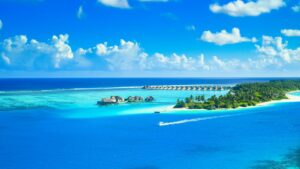
The Importance of Tourism on Economies and Businesses
- April 6, 2023
Tourism is one of the world’s fastest-growing industries and a major foreign exchange and employment generation for many countries. It is one of the most remarkable economic and social phenomena.
The word ‘tour’ is derived from the Latin word tornus, meaning ‘a tool for making a circle.’ Tourism may be defined as the movement of people from their usual place of residence to another place ( with the intention to return) for a minimum period of twenty-four hours to a maximum of six months for the sole purpose of leisure and pleasure.
According to WTO (1993), ” Tourism encompasses the activities of persons traveling and staying in places outside their usual environment for not more than one consecutive year for leisure, business, and other purposes.”
The Rome conference on tourism in 1963 defined tourism as ‘ a visit to a country other than one’s own or where one usually resides and works. This definition, however, did not take into account domestic tourism, which has become a vital money-spinner and job generator for the hospitality industry.
The UNWTO defines tourists as ‘ people who travel to and stay in place outside their usual environment for not more than one consecutive year for leisure, business and other purposes not related to the exercise of an activity remunerated from within the place visited.
According to the Tourism Society of Britain ,” tourism is the temporary short-period movement of people to destination outside the places where they usually live, work; and activities during their stay at these destinations.” This definition includes the movement of people for all purposes.
The development of technology and transportation infrastructure, such as jumbos jets, low-cost airlines, and more accessible airports, have made tourism affordable and convenient. There have been changes in lifestyle – for example, now retiree-age people sustain tourism around the year. The sale of tourism products on the internet, besides the aggressive marketing of the tour operators and travel agencies , has also contributed to the growth of tourism.
27 September is celebrated as world tourism every year. This date was chosen as on that day in 1970, the Statutes of UNWTO were adopted. The purpose of this day is to raise awareness of the role of tourism within the international community.
History of Travel and Tourism
Travel is as old as mankind on earth. At the beginning of his existence, man roamed about the planet’s surface in search of food, shelter, security, and better habitat. However, with time, such movements were transformed into wanderlust.
About five thousand years ago, climate changes, dwindling food and shelter conditions hostile invaders made the people leave their homes to seek refuge elsewhere like the Aryans left their homes in Central Asia due to climate changes. Perhaps, this leads to the development of commerce, trade, and industry.
Religion, education, and cultural movement began during the Hindu and Chinese civilizations. Christian missionaries, Buddhist monks, and others traveled far and wide carrying religious messages and returned with fantastic images and opinions about alien people.
For centuries movement of people continued to grow due to the efficiency of transport and the assistance and safety with which the people could travel. By the end of the 15th century, Italy had become Europe’s intellectual and cultural center. It represented the classical heritage both for the intelligentsia and the aristocracy.
During the 16th century, travel came to be considered an essential part of the education of every young Englishman. Travel thus became a means of self-development and education in its broadest sense. The educational travel was known as the ‘ Grand Tour .’
The industrial revolution brought about significant changes in the pattern and structure of British society. Thus, the economy of Britain was greatly responsible for the beginning of modern tourism. It also created a large and prosperous middle class. Because of remarkable improvement in transportation systems in the latter half of the 18th century and the first quarter of the 19th century, an increasing number of people began to travel for pleasure.
Travel was inspired initially by the need for survival (food, shelter, and security), the desire to expand trade, and the quest to conquer. As the transportation system improved, the curiosity for transforming the vast and virgin world into a close neighborhood created a new industry, i.e., Travel and Tourism .
However, the developments of rails, roads, steamships, automobiles, and airplanes helped to spread technology across the globe. Earlier travel was a privilege only for wealthy people, but with the industrial revolution, the scenario altogether changed. Transportation, as well as accommodation, became affordable to middle and working-class citizens.
Essentially, with the development of jet travel, communication, new technology, tourism, and travel became the world’s largest and fastest-growing industry.
Travel and tourism have recently emerged as a dominant economic force on the global scene, accounting for more than 12% of total world trade and growing at 8 percent annually.
Types of Tourism
Tourism has two types and many forms based on the purpose of visit and alternative forms of tourism. Tourism can be categorized as international and domestic tourism .
Tourism has two types and various forms. Based on the movement of people, tourism is categorized into two kinds. These are the following:
International Tourism
When people visit a foreign country, it is referred to as International Tourism . To travel to a foreign country, one needs a valid passport, visa, health documents, foreign exchange, etc.
International tourism is divided into two types; Inbound Tourism & Outbound Tourism.
Inbound Tourism
This refers to tourists of outside origin entering a particular country. Traveling outside their host/native country to another country is called inbound tourism for the country where they are traveling. For example, when a tourist of Indian origin travels to Japan, it is Inbound tourism for Japan because foreign tourists come to Japan.
Outbound Tourism
This refers to tourists traveling from the country of their origin to another country. When tourists travel to a foreign region, it is outbound tourism for their own country because they are going outside their country. For example, when a tourist from India travels to Japan, it is outbound tourism for India and Inbound tourism for Japan.
Domestic Tourism
The tourism activity of the people within their own country is known as domestic tourism . Traveling within the same country is easier because it does not require formal travel documents and tedious formalities like compulsory health checks and foreign exchange. A traveler generally does not face many language problems or currency exchange issues in domestic tourism.
Forms of Tourism
Tourism has various forms based on the purpose of the visit and alternative forms. These are further divided into many types according to their nature. Forms of tourism are the following:
Some most basic forms of tourism are the following:
- Adventure Tourism
- Atomic Tourism
- Bicycle Tours
- Beach Tourism
- Cultural Tourism
- Industrial Tourism
- Medical Tourism
- Religious Tourism
- Rural Tourism
- Sex Tourism
- Space Tourism
- Sports Tourism
- Sustainable Tourism
- Virtual Tourism
- War Tourism
- Wildlife Tourism
Classification of Tourism
Tourism can be classified into six distinct categories according to the purpose of travel. These are the following:
1) Recreational : Recreational or leisure tourism takes a person away from the humdrum of everyday life. In this case, people spend their leisure time in the hills, sea beaches, etc.
2) Cultural tourism satisfies cultural and intellectual curiosity and involves visits to ancient monuments, places of historical or religious importance, etc.
3) Sports/Adventure : Trips taken by people with a view to playing golf, skiing and hiking, fall within this category.
4) Health : Under this category, people travel for medical, treatment or visit places where there are curative possibilities, for example, hot springs, spa yoga, etc.
5) Convention Tourism : It is becoming an increasingly important component of travel. People travel within a country or overseas to attend conventions relating to their business, profession, or interest.
6) Incentive Tourism : Holiday trips are offered as incentives by major companies to dealers and salesmen who achieve high targets in sales. This is a new and expanding phenomenon in tourism, These are in lieu of cash incentives or gifts, Today incentive tourism is a 3 billion dollar business in the USA alone.
Nature of Tourism
Tourism as a socio-economic phenomenon comprises the activities and experiences of tourists and visitors away from their home environment and are serviced by the travel and tourism industry and host destination. The sum total of this activity experience and services can be seen as a tourism product.
The tourism system can be described in terms of supply and demand. Tourism planning should strive for a balance between demands and supply. This requires an understanding not only of market characteristics and trends but also of the planning process to meet the market needs.
Often tourists from core generating markets are identified as the demand side; the supply side includes all facilities, programs, attractions, and land uses designed and managed for the visitors. These supply-side factors may be under the control of private enterprises, non-profit organizations, and the government. New and innovative forms of partnerships are also evolving to ensure the sustainable development and management of tourism-related resources.
The supply and demand side can be seen to be linked by flows of resources such as capital, labor, goods, and tourist expenditures into the destination, and flows of marketing, promotion, tourist artifacts, and experiences from the destination back into the tourist generating region.
In addition, some tourist expenditures may leak back into the visitors generating areas through repatriation of profits of foreign tourism investors and payment for improved goods and services provided to tourists at the destination. Transportation provides an important linkage both to and from the destination.
For planning purposes, the major components that comprise the supply side are:
- Various modes of transportation and other tourism-related infrastructure.
- Tourist information.
- Marketing and promotion.
- The community of communities within the visitor’s destination area.
- The political and institutional frameworks for enabling tourism.
The tourism system is both dynamic and complex due to many factors linked to it and because of the existence of many sectors contributing to its success. These factors and sectors are linked to the provision of the tourist experience and the generation of tourism revenue and markets.
The dynamic nature of the tourism system makes it imperative to scan the external and internal environment of the destinations on a regular basis so as to make changes when necessary to ensure a healthy and viable tourism industry.
Thus, it is now an accepted fact that tourism development can no longer work in isolation of the environment and the local communities, nor can it ignore the social and cultural consequences of tourism.
Importance of Tourism
Tourism and hospitality , which are inextricably linked to each other, are among the major revenue-earning enterprises in the world. They happen to be among the top employers too. There has been an upmarket trend in tourism over the last few decades as travel has become quite common. People travel for business, vacation, pleasure, adventure, or even medical treatments.
Tourism constitutes an important industry today. It has opened up new vistas for the play of economic emancipation. It provides a very potent contribution by strengthening and developing the financial resources of a country. Moreover, it is a process in which mutual material and mental benefits occur. Furthermore,
- Tourism fetches foreign exchange in the form of invisible exports, which results in the manifold progress of the nation.
- Tourism generates jobs. These employments are the main contribution of tourism to generating national income. But one should remember that employment in the tourism industry is often seasonal.
- Tourism often leads to the commercialization of art forms and especially handicrafts. Art items with cultural or religious meaning are sought by tourists as souvenirs. As more and more tourists visit a destination, souvenir production has increased, often leading to mass production. This production also generates income.

With several business-related activities associated with tourism, the industry has a tremendous potential to generate employment as well as earn foreign exchange. Many countries, such as Mauritius, Malaysia, Singapore, Fiji, and the Caribbean, whose economies are primarily driven by tourism. Tourism can contribute to the economic growth of a country in the followings ways:
Employment Generation
It creates a large number of jobs among direct services providers (such as hotels , restaurants, travel agencies , tour operators , guide and tour escorts, etc.) and among indirect services providers (such as suppliers to the hotels and restaurants, supplementary accommodation, etc.)
Infrastructure Development
Tourism spurs infrastructure development. In order to become an important commercial or pleasure destination, any location would require all the necessary infrastructure, like good connectivity via rail, road, and air transport, adequate accommodation, restaurants, a well-developed telecommunication network, and, medical facilities, among others.
Foreign Exchange
The people who travel to other countries spend a large amount of money on accommodation, transportation, sightseeing, shopping, etc. Thus, an inbound tourist is an important source of foreign exchange for any country.
The World Travel and Tourism Council (WTTC) predict in 1997 that the twenty-first-century economy would be dominated by three industries: telecommunications, information technology, and tourism. The travel and tourism industry has grown by 500 percent in the last 25 years.
Now withstanding this bright outlook and prospects, the tourism and hospitality industries are very vulnerable to the fluctuations of national economies and happenings in the world, especially terrorist attacks that have at times dealt severe blows to business.
In recent years, there have been a few setbacks in tourism, such as the terrorist siege of the Taj and Oberoi in Mumbai, India (26 November 2008); the attack on the World Trade Centre in the United States of America (11 September 2001); bombing in a hotel on the Indonesian island of Bali (12 October 2002); tsunami in Southeast Asia and South Asia on 26 December 2004, in which thousands of the lives where lost and consequently tourism was hit. Nonetheless, the sector is now getting back to business.

Impacts of Tourism
Tourism is a multi-dimensional activity. The scope of tourism activities is so wide and varied that it cannot be restricted to any particular field of activity. Tourism has ramifications in almost all sectors and is influenced by the performance of each of these sectors directly or indirectly. Tourism in any country can be an apt reflection of the nation’s economic and social endowment apart from its natural wealth.
Tourism has vast potential to bring about changes in the country’s economic, environmental, societal, and cultural edifice. Tourism has two basics: the supply of facilities and the demand for participation. The twin market forces of supply and demand interact to produce tourism patterns. These patterns are associated with economic, social, cultural, environmental, and ecological impacts.

Establishing or developing a tourism industry involves expenditure, gains, costs, and benefits. If these impacts are considered from the outset of planning, strengths and opportunities can be maximized while weaknesses and threats can be minimized.
Each destination will be different in terms of tourism characteristics . The cost and benefits of tourism will vary in each destination and can change over time, depending on tourism and other activities in a destination’s local and regional context.
Economic Impacts
Tourism activities impact the economy of the country as well as the local economy of the destination.
Economics Benefits
- Tourism generates local employment, directly in the tourism sector and in the support and resource management sectors.
- Tourism stimulates profitable domestic industries, hotels and other lodging facilities, restaurants and food services, transportation systems, handicrafts, and guide services.
- Tourism generates foreign exchange for the country and injects capital and new money into the local economy.
- Tourism helps to diversify the local economy.
- Improved tourism infrastructure.
- Increase tax revenues from tourism.
Economic Costs
- Higher demand created by tourism activity may increase the price of land, housing, and a range of commodities necessary for daily life.
- Demands for health services provision and police service increase during the tourist seasons at the expense of the local tax base.
Social Impacts
Tourism also affects the society of the destination in good as well as bad ways. It benefits and costs the local communities.
Social Benefits
- The quality of a community can be enhanced by economic diversification through tourism.
- Recreational and cultural facilities created for tourism can be used by local communities as well as domestic/international visitors.
- Public space may be developed and enhanced through tourism activity.
- Tourism Enhances the local community’s esteem and provides an opportunity for greater understanding and communication among people of diverse backgrounds.
Social Costs
- Rapid tourism growth can result in the inability of local amenities and institutions to meet service demands.
- Without proper planning and management, litter, vandalism, and crime often accompany tourism development.
- Tourism can bring overcrowding and traffic congestion.
- Visitors bring with them material wealth and apparent freedom. The youths of the host community are particularly susceptible to the economic expectations these tourists bring which can result in complete disruption of traditional community ways of life.
- The community structure may change, e.g. community bonds, demographics, and institutions.
- The authenticity of the social and cultural environment can be changed to meet tourism demands.
Cultural Impacts
Tourism activities also affect the culture of the host country. There are many positive and negative cultural impacts of tourism.
Cultural Benefits
- Tourism can enhance local cultural awareness.
- Tourism can generate revenue to help pay for the preservation of archaeological sites, historic buildings, and districts.
- Despite criticism about the alteration of cultures to unacceptable levels, the sharing of cultural knowledge and experience can be beneficial for hosts and guests of tourism destinations and can result in the revival of local traditions and crafts.
Cultural Costs
- Youth in the community begin to emulate the speech and attire of tourists.
- Historic sites can be damaged through tourism development and pressures.
- There can be long-term damage to cultural traditions and the erosion of cultural values, resulting in cultural change beyond a level acceptable to the host destination.
Environmental Impact
Tourism impacts the environment in positive as well as negative ways. These impacts are following below.
Environmental Benefits
- Parks and nature preserves may be created and ecological preservation supported as a necessity for nature-based tourism.
- Improved waste management can be achieved.
- Increased awareness and concern for the environment can result from nature-based tourism activities and development.
Environmental Costs
- A negative change in the physical integrity of the area.
- Rapid development, over-development, and overcrowding can forever change the physical environment and ecosystems of an area.
- Degradation of parks and preserves.
Industries Related To Tourism
Over the years, tourism has become a popular global activity. Depending upon the nature and purpose of their travel, tourists, need and demand certain facilities and services. This has given rise to a wide range of commercial activities that have acquired industry proportions. Thus travel and tourism nowadays represent a broad range of related industries.
Hotels are a commercial establishment that provides accommodation, meals, and other guest services. In the travel and tourism industry, the hotel industry plays a very significant role, as all tourists need a place to stay at their destinations, and require many more services and facilities to suit their specific needs and tastes.
Restaurants
Restaurants are retail establishments that serve prepared food and beverages to customers. In the travel and tourism industry, restaurants and other food and beverage outlets are very important as tourists like to experiment with the local cuisines of the places they are visiting.
Retail and Shopping
The retail industry is very important as tourists shop for their day-to-day necessities as well as look for mementos and souvenirs. In recent years, some cities in the world have been promoted as shopping destinations to attract people with a penchant for shopping by offering various products, such as garments, electronic goods, jewelry, and antiques. New York, Paris, London, and Milan in Italy are famous as fashion havens of the world.
Transportation
It is the movement of people and goods from one place to another. A well-developed transport industry, as well as infrastructure, is integral to the success of any travel and tourism enterprise.
Travel Agencies
A travel agency is a retailing business that sells travel-related products and services, particularly package tours, to customers on the behalf of suppliers such as airlines, car rentals, cruise liners, hotels, railways, and sightseeing.
Travel agencies play a very important role as they plan out the itinerary of their clients and make the necessary arrangements for their travel, stay, and sightseeing, besides facilitating their passport, visa, etc.
Tour Operators
A tour operator assembles the various elements of a tour. It typically combines tour and travel components to create a holiday. Tour operators play an important role in the travel and tourism industry.
Tourist Destinations
A tourist attraction is a place of interest for tourists, typically for its inherent or exhibited cultural value, historical significance, nature or building beauty or amusement opportunities. These are the basic fundamentals of the tourism industry.
Cultural Industries
Cultural or creative industries are responsible for the creation, production, and distribution of goods and services that are cultural in nature and usually protected by intellectual property rights. As tourists like to visit places of cultural significance and soak in the culture of the area, the cultural industry is very important to travel and tourism.
Leisure, Recreation, and Sport
Leisure or free time is a period of time spent out of work and essential domestic activity. Recreation or fun is spending time in a manner designed for therapeutic refreshment of the body or mind. While leisure is more like a form of entertainment or rest, recreation requires active participation in a refreshing and diverting manner.
As people in the world’s wealthier regions lead an increasingly sedentary lifestyle, the need for recreation has increased. These play a significant role in the travel and tourism sector.
Tourism Products
A tourism/tourist product can be defined as the sum of the physical and psychological satisfaction it provides to tourists, during their ‘traveling and sojourn’ en route at the destinations.
Since the travel and tourism industry is an agglomeration of too many sectors that promote travel-related services. These sectors are referred to as travel vendors and their services and goods are called ‘travel products’. A tourism product includes five main components such as physical plant, services, hospitality, freedom of choice, and a sense of involvement.
Thus, whatever the natural and man-made resources and services brought about the consumption of tourists are called tourism products .
Charecterstatics Of Tourism Products
By now, you must have understood what a tourism product is. Now let us look at some of its characteristics:-
1) Intangible : Tourism is an intangible product means tourism is such a kind of product that can not be touched or seen and there is no transfer of ownership, But the facilities are available for a specified time and for a specified use. For e.g. a room in the hotel is available for a specified time.
2) Psychological : The main motive to purchase a tourism products is to satisfy the psychological need after using the product, by getting an experience while interacting with a new environment. And experiences also motivate others to purchase that product.
3) Highly Perishable : Tourism product is highly perishable in nature means one can not store the product for a long time. Production and consumption take place while a tourist is available. If the product remains unused, the chances are lost i.e. if tourists do not purchase it.
A travel agent or tour operator who sells a tourism product cannot store it. Production can only take place if the customer is actually present. And once consumption begins, it cannot be stopped, interrupted, or modified. If the product remains unused, the chances are lost i.e. if tourists do not visit a particular place, the opportunity at that time is lost. It is due to tourism reason that heavy discount is offered by hotels and transport-generating organizations during the offseason.
4) Composite Product : Tourist product is a combination of different products. It has not a single entity in itself. In the experience of a visit to a particular place, various service providers contribute like transportation The tourist product cannot be provided by a single enterprise, unlike a manufactured product.
The tourist product covers the complete experience of a visit to a particular place. And many providers contribute to the tourism experience. For instance, the airline supplies seats, a hotel provides rooms and restaurants, travel agents make bookings for stay and sightseeing, etc.
5) Unstable Demand : Tourism demand is influenced by seasonal, economic political, and other factors. There are certain times of the year that see greater demand than others. At these times there is a greater strain on services like hotel bookings, employment, the transport system, etc.

Who Is a Visitor in Tourism?
By Anna Duncan
If you’re interested in tourism, then you must have heard the term ‘visitor’ thrown around quite a bit. But what exactly does it mean?
Who is considered a visitor in tourism? In this article, we’ll answer these questions and more.
What is Tourism?
Before we get into who a visitor is, let’s first define what tourism is. According to the World Tourism Organization (UNWTO), tourism refers to “the activities of persons travelling to and staying in places outside their usual environment for not more than one consecutive year for leisure, business or other purposes.”
In simpler terms, tourism involves people traveling to different places for various reasons such as vacation, work, or cultural experiences.
Who is a Visitor?
Now that we have a basic understanding of what tourism is let’s discuss who a visitor is. A visitor is anyone who travels to a place that they do not normally reside in. Visitors can be classified into two main categories: domestic visitors and international visitors.
Domestic Visitors
Domestic visitors refer to people who travel within their own country for leisure or business purposes. For example, if someone from New York City visits Los Angeles for vacation or work-related reasons, they would be considered domestic visitors.
International Visitors
On the other hand, international visitors refer to people who travel from one country to another for various reasons such as vacation, education or work-related purposes. For example, if someone from Japan visits New York City for vacation or work-related reasons they would be considered an international visitor.
Types of Visitors
Visitors can also be classified based on their purpose of travel. The UNWTO categorizes visitors into three types:
- Tourists: These are people traveling outside of their usual environment for leisure purposes.
- Business travelers: These are people who travel for work-related purposes such as meetings, conferences or exhibitions.
- VFRs (Visiting friends and relatives): These are people who travel to visit friends or family in another location.
The Importance of Understanding Visitors in Tourism
Understanding who visitors are and why they travel is crucial for tourism industry professionals. By understanding the different types of visitors, tourism businesses can better tailor their products and services to meet the specific needs and wants of their Target audience.
Additionally, understanding visitor behavior can help tourism businesses create Targeted marketing campaigns that are more likely to attract potential visitors.
In conclusion, a visitor is anyone who travels to a place outside of their usual environment for leisure, business or other purposes.
10 Related Question Answers Found
Who is visitor in tourism, who is a traveller in tourism, who is a guest in tourism, who are the stakeholders in tourism, who are tourism customers, what is a visitor in tourism, who are the members of world tourism organization, who gave the definition of tourism, what are the types of visitors in tourism, who is called tourism, backpacking - budget travel - business travel - cruise ship - vacation - tourism - resort - cruise - road trip - destination wedding - tourist destination - best places, london - madrid - paris - prague - dubai - barcelona - rome.
© 2024 LuxuryTraveldiva

By Bastian Herre, Veronika Samborska and Max Roser
Tourism has massively increased in recent decades. Aviation has opened up travel from domestic to international. Before the COVID-19 pandemic, the number of international visits had more than doubled since 2000.
Tourism can be important for both the travelers and the people in the countries they visit.
For visitors, traveling can increase their understanding of and appreciation for people in other countries and their cultures.
And in many countries, many people rely on tourism for their income. In some, it is one of the largest industries.
But tourism also has externalities: it contributes to global carbon emissions and can encroach on local environments and cultures.
On this page, you can find data and visualizations on the history and current state of tourism across the world.
Interactive Charts on Tourism
Cite this work.
Our articles and data visualizations rely on work from many different people and organizations. When citing this topic page, please also cite the underlying data sources. This topic page can be cited as:
BibTeX citation
Reuse this work freely
All visualizations, data, and code produced by Our World in Data are completely open access under the Creative Commons BY license . You have the permission to use, distribute, and reproduce these in any medium, provided the source and authors are credited.
The data produced by third parties and made available by Our World in Data is subject to the license terms from the original third-party authors. We will always indicate the original source of the data in our documentation, so you should always check the license of any such third-party data before use and redistribution.
All of our charts can be embedded in any site.
Our World in Data is free and accessible for everyone.
Help us do this work by making a donation.
Guide To Different Types Of Tourism And Their Features
Home » Corporate Travel » Guide To Different Types Of Tourism And Their Features
Since the beginning of time, travel has been an indispensable part of human life. In the modern world, the various aspects of travel have been accommodated into an organized word ‘Tourism’. With the ease of booking travel, the industry has grown rapidly over the past few decades. Therefore, it becomes important to segregate the industry into various types for convenience of defining the purpose of each kind of travel. Let us explore some of the main types of tourism and how they differ from each other.
Different types of tourism
1. leisure tourism.
Evident from the names, leisure tourism entails the activities and locations that will help one unwind, relax and enjoy the various aspects of their trip. Typically, leisure tourism includes an escape into the natural landscape, exploring manmade architectures while staying at a comfortable and hospitable accommodation. The tourists on leisure travel will book a stay in the luxury resort or can take shelter in offbeat homestays. It is generally an amalgamation of numerous things to do such as trying local cuisine, going shopping in the regional market, and participating in recreational activities.
- Focuses on relaxation and enjoyment
- Involves sightseeing, shopping, and cultural experiences
- Often centered around beach vacations, city breaks, and entertainment
- Offers a break from routine and an opportunity to recharge
2. Business Tourism (MICE)

Business tourism or MICE tourism (Meetings, incentives, conferences and exhibitions) explores the realm of trips taken by the employees of various organizations. As working professionals, individuals are expected to attend meetings, conferences, seminars, exhibitions and other events to expand the reach of the business. Business tourism requires meticulous planning, budget forecasting, and comprehensive reporting by the admins and employees both.
- Serves professionals attending meetings, conferences, and exhibitions
- Provides networking opportunities and knowledge sharing
- Contributes to economic development and industry growth
- Requires specialized facilities and services to cater to business needs
3. Adventure Tourism
Among the most exciting types of tourism, adventure tourism brings in the opportunity to indulge in thrilling activities revolving around natural settings. The exhilaration and physical challenges involved in this kind of tourism makes it rank among the top tourism types. The activities include skydiving, paragliding, base jumping, rafting, dune bashing, and whatnot. The excitement only gets elevated when friends and family are involved during the activities.
- Emphasizes exciting and challenging experiences
- Includes activities like trekking, rock climbing, and bungee jumping
- Appeals to thrill-seekers and those seeking adrenaline rushes
- Provides opportunities for personal growth and pushing boundaries
4. Cultural Tourism
Cultural tourism allows travelers to immerse themselves in the traditions, history, and lifestyle of a destination. The engagement required in cultural tourism is of the highest level. Tourists can visit various museums, historical sites, art galleries, traditional markets and much more. Additionally, the opportunity to meet the local community and participate in various events increases the fun all the more.
- Centers around exploration of a region’s history, traditions, and arts
- Involves visiting museums, historic sites, and attending cultural events
- Encourages interactions with locals to learn about their way of life
- Enhances cross-cultural understanding and appreciation
Suggested Read: Top 10 Business Travel Management Companies In India
5. Ecotourism
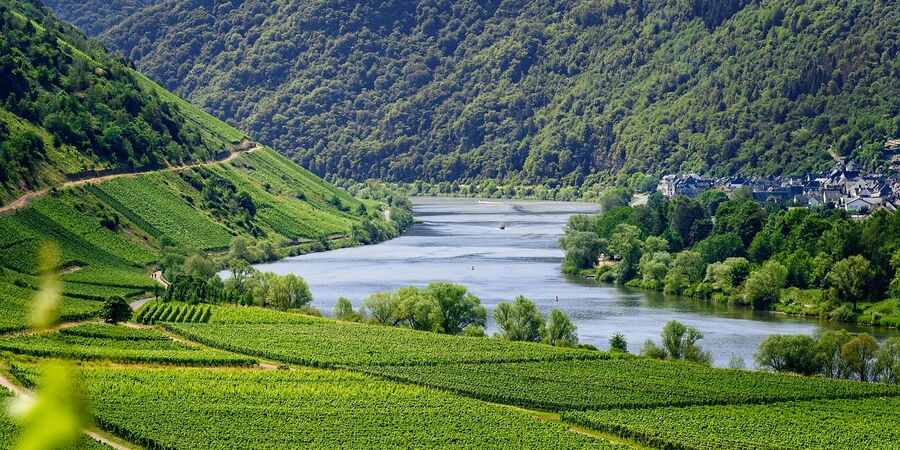
It is the type of tourism that deals with responsible travel to natural areas. Ecotourism promotes conservation of natural resources for the utilization of the future generations and consolidates sustainability. Travelers experience nature firsthand through activities like bird watching, nature walks, and wildlife safaris. The goal is to appreciate and protect the environment while supporting local authorities and communities.
- Focuses on responsible travel to natural areas
- Aims to support conservation efforts and sustainable practices
- Includes wildlife observation, nature walks, and eco-friendly accommodations
- Offers opportunities to connect with nature and learn about ecosystems
6. Culinary Tourism
Culinary tourism is a delightful and immersive way to experience the heart of any destination – its food. It focuses on inviting travelers to try top authentic food of any specific country or region. Travelers savor the flavors, aroma, and traditional cooking techniques of local cuisines. The journey involves visiting numerous restaurants, participating in food events, going to offbeat destinations for original tastes, meeting worldwide chefs and much more. Travelers may also be enticed to cook alongside a teacher and learn new ways of cooking.
- Revolves around exploring local cuisine and food culture
- Includes food tasting, cooking classes, and market visits
- Provides insights into regional flavors, ingredients, and cooking techniques
- Celebrates the role of food in cultural identity
7. Pilgrimage
Religious tourism or pilgrimage is a type of tourism involving spiritual upliftment of the travelers by visiting sacred sites, places of worship, and participating in religious events. It offers travelers a chance to know more about various religions while learning about the different practices of diverse cultures. Many travelers and worshippers believe it to be an opportunity to unite with God and find peace in their lives.
- Focuses on visiting sacred sites, pilgrimage destinations, and religious events
- Provides spiritual experiences and connections to faith traditions
- Involves participating in rituals, ceremonies, and cultural practices
- Encourages reflection and personal growth
8. Wellness Tourism
To calibrate well-being, individuals can head to wellness tourism. Rooting from the seeds of self-care, well tourism provides the various leaves and branches for a holistic development and rejuvenation. Common activities may include spa escapes, yoga practices, sampling nourishing and healthy food, massages, etc. Hiking and trekking can also be part of the wellness plan. Tourists can visit various wellness centers for the betterment of body and mind.
- Centers on promoting physical and mental well-being
- Involves spa treatments, yoga retreats, and meditation practices
- Offers relaxation, stress relief, and rejuvenation
- Emphasizes self-care and a healthy lifestyle
9. Rural Tourism
Rural tourism presents a serene escape to the idyllic countryside. It’s a journey that invites individuals to step away from the bustling urban landscape and embrace the simplicity and authenticity of rural living. Encompassing an array of enriching experiences, rural tourism offers the chance to participate in hands-on activities such as farming, tending to animals, and partaking in time-honored rural traditions.
- Offers a retreat to rural areas and countryside
- Involves farm stays, agricultural activities, and rural experiences
- Provides a chance to reconnect with nature and experience traditional lifestyles
- Supports local communities and sustainable agriculture
Tourism is a vast industry expanding with every day of the year. Though there are numerous types of tourism, embarking on the journey with a purpose remains constant. Hope the blog was able to provide you with the basics of various types of tourism and how the industry spreads out in several other branches.
Suggested Read: 7 First Time Business Travel Tips For A Flawless Trip
Types Of Tourism FAQs
What are the key features of leisure tourism.
Leisure tourism emphasizes relaxation and enjoyment, involves sightseeing, cultural experiences, and is often centered around beach vacations, city breaks, and entertainment. It offers a break from daily routines and a chance to recharge.
What are the distinctive features of business tourism (MICE)?
Business tourism provides networking opportunities, contributes to economic development, and requires meticulous planning, budgeting, and reporting.
What is ecotourism, and what is its primary focus?
Ecotourism is a type of tourism that promotes responsible travel to natural areas. Its primary focus is on conservation of natural resources, sustainability, and experiencing nature firsthand through activities like wildlife observation, nature walks, and eco-friendly accommodations.
Pratyush is a traveling enthusiast who always looks for innovations in business travel management. He has 5 years of experience writing content on corporate travel management and working closely with expert business travel facilitators.
Related Posts

Top Tips On Corporate Hotel Booking In Dubai
Dubai is a city of wonders and one of the biggest business centers in the Gulf. It has numerous corporate offices, tourist destinations, and shopping complexes. The continuous influx of professionals and tourists have offered Read more…

Corporate Travel
4 grand business hotels in pune, maharashtra.
Pune, a city renowned for its thriving business environment, is home to a selection of top-tier hotels that cater to the discerning needs of business travelers. These establishments seamlessly blend modern amenities, strategic locations, and Read more…

Top Car Rental Apps With Pros And Cons
Availing car rentals sounds like a task that involves long queues and tons of paperwork. However, the ground reality has changed drastically over the years. Modern day car rental services use intuitive applications for conducting Read more…
Let's get started!

Thanks for submitting your details.
We'll get back to you shortly.
UN Tourism | Bringing the world closer

UN standards for measuring tourism
Share this content.
- Share this article on facebook
- Share this article on twitter
- Share this article on linkedin
Glossary of tourism terms
Tourism is a social, cultural and economic phenomenon which entails the movement of people to countries or places outside their usual environment for personal or business/professional purposes. These people are called visitors (which may be either tourists or excursionists; residents or non-residents) and tourism has to do with their activities, some of which involve tourism expenditure.
A B C D E F G H I J K L M N O P Q R S T U V W Y Z
Activity/activities : In tourism statistics, the term activities represent the actions and behaviors of people in preparation for and during a trip in their capacity as consumers ( IRTS 2008, 1.2 ).
Activity (principal): The principal activity of a producer unit is the activity whose value added exceeds that of any other activity carried out within the same unit ( SNA 2008, 5.8 ).
Activity (productive): The (productive) activity carried out by a statistical unit is the type of production in which it engages. It has to be understood as a process, i.e. the combination of actions that result in a certain set of products. The classification of productive activities is determined by their principal output.
Administrative data : Administrative data is the set of units and data derived from an administrative source. This is a data holding information collected and maintained for the purpose of implementing one or more administrative regulations.
Adventure tourism : Adventure tourism is a type of tourism which usually takes place in destinations with specific geographic features and landscape and tends to be associated with a physical activity, cultural exchange, interaction and engagement with nature. This experience may involve some kind of real or perceived risk and may require significant physical and/or mental effort. Adventure tourism generally includes outdoor activities such as mountaineering, trekking, bungee jumping, rock climbing, rafting, canoeing, kayaking, canyoning, mountain biking, bush walking, scuba diving. Likewise, some indoor adventure tourism activities may also be practiced.
Aggregated data : The result of transforming unit level data into quantitative measures for a set of characteristics of a population.
Aggregation : A process that transforms microdata into aggregate-level information by using an aggregation function such as count, sum average, standard deviation, etc.
Analytical unit : Entity created by statisticians, by splitting or combining observation units with the help of estimations and imputations.
Balance of payments : The balance of payments is a statistical statement that summarizes transactions between residents and non-residents during a period. It consists of the goods and services account, the primary income account, the secondary income account, the capital account, and the financial account ( BPM6, 2.12 ).
Bias : An effect which deprives a statistical result of representativeness by systematically distorting it, as distinct from a random error which may distort on any one occasion but balances out on the average.
Business and professional purpose (of a tourism trip): The business and professional purpose of a tourism trip includes the activities of the self-employed and employees, as long as they do not correspond to an implicit or explicit employer-employee relationship with a resident producer in the country or place visited, those of investors, businessmen, etc. ( IRTS 2008, 3.17.2 ).
Business tourism : Business tourism is a type of tourism activity in which visitors travel for a specific professional and/or business purpose to a place outside their workplace and residence with the aim of attending a meeting, an activity or an event. The key components of business tourism are meetings, incentives, conventions and exhibitions. The term "meetings industry" within the context of business tourism recognizes the industrial nature of such activities. Business tourism can be combined with any other tourism type during the same trip.
Business visitor : A business visitor is a visitor whose main purpose for a tourism trip corresponds to the business and professional category of purpose ( IRTS 2008, 3.17.2 ).
Central Product Classification : The Central Product Classification (CPC) constitutes a complete product classification covering goods and services. It is intended to serve as an international standard for assembling and tabulating all kinds of data requiring product detail, including industrial production, national accounts, service industries, domestic and foreign commodity trade, international trade in services, balance of payments, consumption and price statistics. Other basic aims are to provide a framework for international comparison and promote harmonization of various types of statistics dealing with goods and services.
Census : A census is the complete enumeration of a population or groups at a point in time with respect to well defined characteristics: for example, Population, Production, Traffic on particular roads.
Coastal, maritime and inland water tourism : Coastal tourism refers to land-based tourism activities such as swimming, surfing, sunbathing and other coastal leisure, recreation and sports activities which take place on the shore of a sea, lake or river. Proximity to the coast is also a condition for services and facilities that support coastal tourism. Maritime tourism refers to sea-based activities such as cruising, yachting, boating and nautical sports and includes their respective land-based services and infrastructure. Inland water tourism refers to tourism activities such as cruising, yachting, boating and nautical sports which take place in aquatic- influenced environments located within land boundaries and include lakes, rivers, ponds, streams, groundwater, springs, cave waters and others traditionally grouped as inland wetlands.
Coherence : Adequacy of statistics to be combined in different ways and for various uses.
Competitiveness of a tourism destination : The competitiveness of a tourism destination is the ability of the destination to use its natural, cultural, human, man-made and capital resources efficiently to develop and deliver quality, innovative, ethical and attractive tourism products and services in order to achieve a sustainable growth within its overall vision and strategic goals, increase the added value of the tourism sector, improve and diversify its market components and optimize its attractiveness and benefits both for visitors and the local community in a sustainable perspective.
Consistency : Logical and numerical coherence.
Country of reference : The country of reference refers to the country for which the measurement is done. ( IRTS 2008, 2.15 ).
Country of residence : The country of residence of a household is determined according to the centre of predominant economic interest of its members. If a person resides (or intends to reside) for more than one year in a given country and has there his/her centre of economic interest (for example, where the predominant amount of time is spent), he/she is considered as a resident of this country.
Country-specific tourism characteristic products and activities : To be determined by each country by applying the criteria of IRTS 2008, 5.10 in their own context; for these products, the activities producing them will be considered as tourism characteristic, and the industries in which the principal activity is tourism-characteristic will be called tourism industries ( IRTS 2008, 5.16 ).
Cultural tourism : Cultural tourism is a type of tourism activity in which the visitor's essential motivation is to learn, discover, experience and consume the tangible and intangible cultural attractions/products in a tourism destination. These attractions/products relate to a set of distinctive material, intellectual, spiritual and emotional features of a society that encompasses arts and architecture, historical and cultural heritage, culinary heritage, literature, music, creative industries and the living cultures with their lifestyles, value systems, beliefs and traditions.
Data checking : Activity whereby the correctness conditions of the data are verified. It also includes the specification of the type of error or of the condition not met, and the qualification of the data and their division into "error-free data" and "erroneous data".
Data collection : Systematic process of gathering data for official statistics.
Data compilation : Operations performed on data to derive new information according to a given set of rules.
Data confrontation : The process of comparing data that has generally been derived from different surveys or other sources, especially those of different frequencies, in order to assess and possibly improve their coherency, and identify the reasons for any differences.
Data processing : Data processing is the operation performed on data by the organization, institute, agency, etc., responsible for undertaking the collection, tabulation, manipulation and preparation of data and metadata output.
Data reconciliation : The process of adjusting data derived from two different sources to remove, or at least reduce, the impact of differences identified.
Destination (main destination of a trip): The main destination of a tourism trip is defined as the place visited that is central to the decision to take the trip. See also purpose of a tourism trip ( IRTS 2008, 2.31 ).
Destination management / marketing organization (DMO) : A destination management/marketing organization (DMO) is the leading organizational entity which may encompass the various authorities, stakeholders and professionals and facilitates tourism sector partnerships towards a collective destination vision. The governance structures of DMOs vary from a single public authority to a public/ private partnership model with the key role of initiating, coordinating and managing certain activities such as implementation of tourism policies, strategic planning, product development, promotion and marketing and convention bureau activities. The functions of the DMOs may vary from national to regional and local levels depending on the current and potential needs as well as on the decentralization level of public administration. Not every tourism destination has a DMO.
Documentation: Processes and procedures for imputation, weighting, confidentiality and suppression rules, outlier treatment and data capture should be fully documented by the survey provider. Such documentation should be made available to at least the body financing the survey.
Domestic tourism : Domestic tourism comprises the activities of a resident visitor within the country of reference, either as part of a domestic tourism trip or part of an outbound tourism trip ( IRTS 2008, 2.39 ).
Domestic tourism consumption : Domestic tourism consumption is the tourism consumption of a resident visitor within the economy of reference ( TSA:RMF 2008, figure 2.1 ).
Domestic tourism expenditure : Domestic tourism expenditure is the tourism expenditure of a resident visitor within the economy of reference, (IRTS 2008, 4.15(a)).
Domestic tourism trip : A domestic tourism trip is one with a main destination within the country of residence of the visitor (IRTS 2008, 2.32).
Domestic visitor : As a visitor travels within his/her country of residence, he/she is a domestic visitor and his/her activities are part of domestic tourism.
Durable consumer goods : Durable consumer goods are goods that may be used repeatedly or continuously over a period of a year or more, assuming a normal or average rate of physical usage. When acquired by producers, these are considered to be capital goods used for production processes, as is the case of vehicles, computers, etc. When acquired by households, they are considered to be consumer durable goods ( TSA:RMF 2008, 2.39 ). This definition is identical to the definition of SNA 2008, 9.42 : A consumer durable is a goodthat may be used for purposes of consumption repeatedly or continuously over a period of a year or more.
Dwellings : Each household has a principal dwelling (sometimes also designated as main or primary home), usually defined with reference to time spent there, whose location defines the country of residence and place of usual residence of this household and of all its members. All other dwellings (owned or leased by the household) are considered secondary dwellings ( IRTS 2008, 2.26 ).
Ecotourism : Ecotourism is a type of nature-based tourism activity in which the visitor's essential motivation is to observe, learn, discover, experience and appreciate biological and cultural diversity with a responsible attitude to protect the integrity of the ecosystem and enhance the well-being of the local community. Ecotourism increases awareness towards the conservation of biodiversity, natural environment and cultural assets both among locals and the visitors and requires special management processes to minimize the negative impact on the ecosystem.
Economic analysis : Tourism generates directly and indirectly an increase in economic activity in the places visited (and beyond), mainly due to demand for goods and services thatneed to be produced and provided. In the economic analysis of tourism, one may distinguish between tourism's 'economic contribution' which refers to the direct effect of tourism and is measurable by means of the TSA, and tourism's 'economic impact' which is a much broader concept encapsulating the direct, indirect and induced effects of tourism and which must be estimated by applying models. Economic impact studies aim to quantify economic benefits, that is, the net increase in the wealth of residents resulting from tourism, measured in monetary terms, over and above the levels that would prevail in its absence.
Economic territory : The term "economic territory" is a geographical reference and points to the country for which the measurement is done (country of reference) ( IRTS 2008, 2.15 ).
Economically active population : The economically active population or labour force comprises all persons of either sex who furnish the supply of labour for the production of goods and services as defined by the system of national accounts during a specified time-reference period (ILO, Thirteenth ICLS, 6.18).
Economy (of reference): "Economy" (or "economy of reference") is an economic reference defined in the same way as in the balance of payments and in the system of national accounts: it refers to the economic agents that are resident in the country of reference ( IRTS 2008, 2.15 ).
Education tourism : Education tourism covers those types of tourism which have as a primary motivation the tourist's engagement and experience in learning, self-improvement, intellectual growth and skills development. Education Tourism represents a broad range of products and services related to academic studies, skill enhancement holidays, school trips, sports training, career development courses and language courses, among others.
Employees : Employees are all those workers who hold the type of job defined as "paid employment" (ILO, Fifteenth ICLS, pp. 20-22).
Employer-employee relationship : An employer-employee relationship exists when there is an agreement, which may be formal or informal, between an entity and an individual, normally entered into voluntarily by both parties, whereby the individual works for the entity in return for remuneration in cash or in kind ( BPM6, 11.11 ).
Employers : Employers are those workers who, working on their own account with one or more partners, hold the type of job defined as a "self-employment job" and, in this capacity, on a continuous basis (including the reference period) have engaged one or more persons to work for them in their business as "employee(s)" (ILO, Fifteenth ICLS, pp. 20-22).
Employment : Persons in employment are all persons above a specified age who, during a specified brief period, either one week or one day, were in paid employment or self-employment (OECD GST, p. 170).
Employment in tourism industries : Employment in tourism industries may be measured as a count of the persons employed in tourism industries in any of their jobs, as a count of the persons employed in tourism industries in their main job, or as a count of the jobs in tourism industries ( IRTS 2008, 7.9 ).
Enterprise : An enterprise is an institutional unit engaged in production of goods and/or services. It may be a corporation, a non-profit institution, or an unincorporated enterprise. Corporate enterprises and non-profit institutions are complete institutional units. An unincorporated enterprise, however, refers to an institutional unit —a household or government unit —only in its capacity as a producer of goods and services (OECD BD4, p. 232)
Establishment : An establishment is an enterprise, or part of an enterprise, that is situated in a single location and in which only a single productive activity is carried out or in which the principal productive activity accounts for most of the value added ( SNA 2008, 5.14 ).
Estimation : Estimation is concerned with inference about the numerical value of unknown population values from incomplete data such as a sample. If a single figure is calculated for each unknown parameter the process is called "point estimation". If an interval is calculated within which the parameter is likely, in some sense, to lie, the process is called "interval estimation".
Exports of goods and services : Exports of goods and services consist of sales, barter, or gifts or grants, of goods and services from residents to non-residents (OECD GST, p. 194)
Frame : A list, map or other specification of the units which define a population to be completely enumerated or sampled.
Forms of tourism : There are three basic forms of tourism: domestic tourism, inbound tourism, and outbound tourism. These can be combined in various ways to derive the following additional forms of tourism: internal tourism, national tourism and international tourism.
Gastronomy tourism : Gastronomy tourism is a type of tourism activity which is characterized by the visitor's experience linked with food and related products and activities while travelling. Along with authentic, traditional, and/or innovative culinary experiences, Gastronomy Tourism may also involve other related activities such as visiting the local producers, participating in food festivals and attending cooking classes. Eno-tourism (wine tourism), as a sub-type of gastronomy tourism, refers to tourism whose purpose is visiting vineyards, wineries, tasting, consuming and/or purchasing wine, often at or near the source.
Goods : Goods are physical, produced objects for which a demand exists, over which ownership rights can be established and whose ownership can be transferred from one institutional unit to another by engaging in transactions on markets ( SNA 2008, p. 623 ).
Gross fixed capital formation : Gross fixed capital formation is defined as the value of institutional units' acquisitions less disposals of fixed assets. Fixed assets are produced assets (such as machinery, equipment, buildings or other structures) that are used repeatedly or continuously in production over several accounting periods (more than one year) ( SNA 2008, 1.52 ).
Gross margin : The gross margin of a provider of reservation services is the difference between the value at which the intermediated service is sold and the value accrued to the provider of reservation services for this intermediated service.
Gross value added : Gross value added is the value of output less the value of intermediate consumption ( TSA:RMF 2008, 3.32 ).
Gross value added of tourism industries : Gross value added of tourism industries (GVATI) is the total gross value added of all establishments belonging to tourism industries, regardless of whether all their output is provided to visitors and the degree of specialization of their production process ( TSA:RMF 2008, 4.86 ).
Grossing up : Activity aimed at transforming, based on statistical methodology, micro-data from samples into aggregate-level information representative of the target population.
Health tourism : Health tourism covers those types of tourism which have as a primary motivation, the contribution to physical, mental and/or spiritual health through medical and wellness-based activities which increase the capacity of individuals to satisfy their own needs and function better as individuals in their environment and society. Health tourism is the umbrella term for the subtypes wellness tourism and medical tourism.
Imputation : Procedure for entering a value for a specific data item where the response is missing or unusable.
Inbound tourism : Inbound tourism comprises the activities of a non-resident visitor within the country of reference on an inbound tourism trip ( IRTS 2008, 2.39 ).
Inbound tourism consumption : Inbound tourism consumption is the tourism consumption of a non-resident visitor within the economy of reference ( TSA:RMF 2008, figure 2.1 ).
Inbound tourism expenditure : Inbound tourism expenditure is the tourism expenditure of a non-resident visitor within the economy of reference ( IRTS 2008, 4.15(b) ).
Innovation in tourism : Innovation in tourism is the introduction of a new or improved component which intends to bring tangible and intangible benefits to tourism stakeholders and the local community, improve the value of the tourism experience and the core competencies of the tourism sector and hence enhance tourism competitiveness and /or sustainability. Innovation in tourism may cover potential areas, such as tourism destinations, tourism products, technology, processes, organizations and business models, skills, architecture, services, tools and/or practices for management, marketing, communication, operation, quality assurance and pricing.
Institutional sector : An aggregation of institutional units on the basis of the type of producer and depending on their principal activity and function, which are considered to be indicative of their economic behaviour.
Institutional unit : The elementary economic decision-making centre characterised by uniformity of behaviour and decision-making autonomy in the exercise of its principal function.
Intermediate consumption : Intermediate consumption consists of the value of the goods and services consumed as inputs by a process of production, excluding fixed assets whose consumption is recorded as consumption of fixed capital ( SNA 2008, 6.213 ).
Internal tourism : Internal tourism comprises domestic tourism and inbound tourism, that is to say, the activities of resident and non-resident visitors within the country of reference as part of domestic or international tourism trips ( IRTS 2008, 2.40(a) ).
Internal tourism consumption : Internal tourism consumption is the tourism consumption of both resident and non-resident visitors within the economy of reference. It is the sum of domestic tourism consumption and inbound tourism consumption ( TSA:RMF 2008, figure 2.1 ).
Internal tourism expenditure : Internal tourism expenditure comprises all tourism expenditure of visitors, both resident and non-resident, within the economy of reference. It is the sum of domestic tourism expenditure and inbound tourism expenditure. It includes acquisition of goods and services imported into the country of reference and sold to visitors. This indicator provides the most comprehensive measurement of tourism expenditure in the economy of reference ( IRTS 2008, 4.20(a) ).
International Standard Industrial Classification of All Economic Activities : The International Standard Industrial Classification of All Economic Activities (ISIC) consists of a coherent and consistent classification structure of economic activities based on a set of internationally agreed concepts, definitions, principles and classification rules. It provides a comprehensive framework within which economic data can be collected and reported in a format that is designed for purposes of economic analysis, decision-taking and policymaking. The classification structure represents a standard format to organize detailed information about the state of an economy according to economic principles and perceptions (ISIC, Rev.4, 1).
International tourism : International tourism comprises inbound tourism and outbound tourism, that is to say, the activities of resident visitors outside the country of reference, either as part of domestic or outbound tourism trips and the activities of non-resident visitors within the country of reference on inbound tourism trips ( IRTS 2008, 2.40(c) ).
International visitor : An international traveller qualifies as an international visitor with respect to the country of reference if: (a) he/she is on a tourism trip and (b) he/she is a non-resident travelling in the country of reference or a resident travelling outside of it ( IRTS 2008, 2.42 ).
Job : The agreement between an employee and the employer defines a job and each self-employed person has a job ( SNA 2008, 19.30 ).
Measurement error : Error in reading, calculating or recording numerical value.
Medical tourism : Medical tourism is a type of tourism activity which involves the use of evidence-based medical healing resources and services (both invasive and non-invasive). This may include diagnosis, treatment, cure, prevention and rehabilitation.
Meetings industry : To highlight purposes relevant to the meetings industry, if a trip's main purpose is business/professional, it can be further subdivided into "attending meetings, conferences or congresses, trade fairs and exhibitions" and "other business and professional purposes". The term meetings industry is preferred by the International Congress and Convention Association (ICCA), Meeting Professionals International (MPI) and Reed Travel over the acronym MICE (Meetings, Incentives, Conferences and Exhibitions) which does not recognize the industrial nature of such activities.
Metadata : Data that defines and describes other data and processes.
MICE : See meetings industry.
Microdata : Non-aggregated observations, or measurements of characteristics of individual units.
Mirror statistics : Mirror statistics are used to conduct bilateral comparisons of two basic measures of a trade flow and are a traditional tool for detecting the causes of asymmetries in statistics (OECD GST, p. 335).
Mountain tourism : Mountain tourism is a type of tourism activity which takes place in a defined and limited geographical space such as hills or mountains with distinctive characteristics and attributes that are inherent to a specific landscape, topography, climate, biodiversity (flora and fauna) and local community. It encompasses a broad range of outdoor leisure and sports activities.
National tourism : National tourism comprises domestic tourism and outbound tourism, that is to say, the activities of resident visitors within and outside the country of reference, either as part of domestic or outbound tourism trips ( IRTS 2008, 2.40(b) ).
National tourism consumption : National tourism consumption is the tourism consumption of resident visitors, within and outside the economy of reference. It is the sum of domestic tourism consumption and outbound tourism consumption ( TSA:RMF 2008, figure 2.1 ).
National tourism expenditure : National tourism expenditure comprises all tourism expenditure of resident visitors within and outside the economy of reference. It is the sum of domestic tourism expenditure and outbound tourism expenditure ( IRTS 2008, 4.20(b) ).
Nationality : The concept of "country of residence" of a traveller is different from that of his/her nationality or citizenship ( IRTS 2008, 2.19 ).
Non-monetary indicators : Data measured in physical or other non-monetary units should not be considered a secondary part of a satellite account. They are essential components, both for the information they provide directly and in order to analyse the monetary data adequately ( SNA 2008, 29.84 ).
Observation unit : entity on which information is received and statistics are compiled.
Outbound tourism : Outbound tourism comprises the activities of a resident visitor outside the country of reference, either as part of an outbound tourism trip or as part of a domestic tourism trip ( IRTS 2008, 2.39(c) ).
Outbound tourism consumption : Outbound tourism consumption is the tourism consumption of a resident visitor outside the economy of reference ( TSA:RMF 2008, figure 2.1 ).
Outbound tourism expenditure : Outbound tourism expenditure is the tourism expenditure of a resident visitor outside the economy of reference ( IRTS 2008, 4.15(c) ).
Output : Output is defined as the goods and services produced by an establishment, a) excluding the value of any goods and services used in an activity for which the establishment does not assume the risk of using the products in production, and b) excluding the value of goods and services consumed by the same establishment except for goods and services used for capital formation (fixed capital or changes in inventories) or own final consumption ( SNA 2008, 6.89 ).
Output (main): The main output of a (productive) activity should be determined by reference to the value added of the goods sold or services rendered (ISIC rev.4, 114).
Pilot survey : The aim of a pilot survey is to test the questionnaire (pertinence of the questions, understanding of questions by those being interviewed, duration of the interview) and to check various potential sources for sampling and non-sampling errors: for instance, the place in which the surveys are carried out and the method used, the identification of any omitted answers and the reason for the omission, problems of communicating in various languages, translation, the mechanics of data collection, the organization of field work, etc.
Place of usual residence : The place of usual residence is the geographical place where the enumerated person usually resides, and is defined by the location of his/her principal dwelling (Principles and recommendations for population and housing censuses of the United Nations, 2.20 to 2.24).
Probability sample : A sample selected by a method based on the theory of probability (random process), that is, by a method involving knowledge of the likelihood of any unit being selected.
Production account : The production account records the activity of producing goods and services as defined within the SNA. Its balancing item, gross value added, is defined as the value of output less the value of intermediate consumption and is a measure of the contribution to GDP made by an individual producer, industry or sector. Gross value added is the source from which the primary incomes of the SNA are generated and is therefore carried forward into the primary distribution of income account. Value added and GDP may also be measured net by deducting consumption of fixed capital, a figure representing the decline in value during the period of the fixed capital used in a production process ( SNA 2008, 1.17 ).
Production : Economic production may be defined as an activity carried out under the control and responsibility of an institutional unit that uses inputs of labour, capital, and goods and services to produce outputs of goods or services ( SNA 2008, 6.24. ).
Purpose of a tourism trip (main): The main purpose of a tourism trip is defined as the purpose in the absence of which the trip would not have taken place ( IRTS 2008, 3.10. ). Classification of tourism trips according to the main purpose refers to nine categories: this typology allows the identification of different subsets of visitors (business visitors, transit visitors, etc.) See also destination of a tourism trip ( IRTS 2008, 3.14 ).
Quality of a tourism destination : Quality of a tourism destination is the result of a process which implies the satisfaction of all tourism product and service needs, requirements and expectations of the consumer at an acceptable price, in conformity with mutually accepted contractual conditions and the implicit underlying factors such as safety and security, hygiene, accessibility, communication, infrastructure and public amenities and services. It also involves aspects of ethics, transparency and respect towards the human, natural and cultural environment. Quality, as one of the key drivers of tourism competitiveness, is also a professional tool for organizational, operational and perception purposes for tourism suppliers.
Questionnaire and Questionnaire design : Questionnaire is a group or sequence of questions designed to elicit information on a subject, or sequence of subjects, from a reporting unit or from another producer of official statistics. Questionnaire design is the design (text, order, and conditions for skipping) of the questions used to obtain the data needed for the survey.
Reference period : The period of time or point in time to which the measured observation is intended to refer.
Relevance : The degree to which statistics meet current and potential users' needs.
Reliability : Closeness of the initial estimated value to the subsequent estimated value.
Reporting unit : Unit that supplies the data for a given survey instance, like a questionnaire or interview. Reporting units may, or may not, be the same as the observation unit.
Residents/non-residents : The residents of a country are individuals whose centre of predominant economic interest is located in its economic territory. For a country, the non-residents are individuals whose centre of predominant economic interest is located outside its economic territory.
Response and non-response : Response and non-response to various elements of a survey entail potential errors.
Response error : Response errors may be defined as those arising from the interviewing process. Such errors may be due to a number of circumstances, such as inadequate concepts or questions; inadequate training; interviewer failures; respondent failures.
Rural tourism : Rural tourism is a type of tourism activity in which the visitor's experience is related to a wide range of products generally linked to nature-based activities, agriculture, rural lifestyle / culture, angling and sightseeing. Rural tourism activities take place in non-urban (rural) areas with the following characteristics:
- Low population density;
- Landscape and land-use dominated by agriculture and forestry; and
- Traditional social structure and lifestyle
Same-day visitor (or excursionist): A visitor (domestic, inbound or outbound) is classified as a tourist (or overnight visitor), if his/her trip includes an overnight stay, or as a same-day visitor (or excursionist) otherwise ( IRTS 2008, 2.13 ).
Sample : A subset of a frame where elements are selected based on a process with a known probability of selection.
Sample survey : A survey which is carried out using a sampling method.
Sampling error : That part of the difference between a population value and an estimate thereof, derived from a random sample, which is due to the fact that only a subset of the population is enumerated.
Satellite accounts : There are two types of satellite accounts, serving two different functions. The first type, sometimes called an internal satellite, takes the full set of accounting rules and conventions of the SNA but focuses on a particular aspect of interest by moving away from the standard classifications and hierarchies. Examples are tourism, coffee production and environmental protection expenditure. The second type, called an external satellite, may add non-economic data or vary some of the accounting conventions or both. It is a particularly suitable way to explore new areas in a research context. An example may be the role of volunteer labour in the economy ( SNA 2008, 29.85 ).
SDMX, Statistical Data and Metadata Exchange : Set of technical standards and content-oriented guidelines, together with an IT architecture and tools, to be used for the efficient exchange and sharing of statistical data and metadata (SDMX).
Seasonal adjustment : Seasonal adjustment is a statistical technique to remove the effects of seasonal calendar influences on a series. Seasonal effects usually reflect the influence of the seasons themselves, either directly or through production series related to them, or social conventions. Other types of calendar variation occur as a result of influences such as number of days in the calendar period, the accounting or recording practices adopted or the incidence of moving holidays.
Self-employment job : Self-employment jobs are those jobs where remuneration is directly dependent upon the profits (or the potential of profits) derived from the goods or services produced.
Self-employed with paid employees : Self-employed with paid employees are classified as employers.
Self-employed without employees : Self-employed without employees are classified as own-account workers.
Services : Services are the result of a production activity that changes the conditions of the consuming units, or facilitates the exchange of products or financial assets. They cannot be traded separately from their production. By the time their production is completed, they must have been provided to the consumers ( SNA 2008, 6.17 ).
Social transfers in kind : A special case of transfers in kind is that of social transfers in kind. These consist of goods and services provided by general government and non-profit institutions serving households (NPISHs) that are delivered to individual households. Health and education services are the prime examples. Rather than provide a specified amount of money to be used to purchase medical and educational services, the services are often provided in kind to make sure that the need for the services is met. (Sometimes the recipient purchases the service and is reimbursed by the insurance or assistance scheme. Such a transaction is still treated as being in kind because the recipient is merely acting as the agent of the insurance scheme) (SNA 2008, 3.83).
Sports tourism : Sports tourism is a type of tourism activity which refers to the travel experience of the tourist who either observes as a spectator or actively participates in a sporting event generally involving commercial and non-commercial activities of a competitive nature.
Standard classification : Classifications that follow prescribed rules and are generally recommended and accepted.
Statistical error : The unknown difference between the retained value and the true value.
Statistical indicator : A data element that represents statistical data for a specified time, place, and other characteristics, and is corrected for at least one dimension (usually size) to allow for meaningful comparisons.
Statistical metadata : Data about statistical data.
Statistical unit : Entity about which information is sought and about which statistics are compiled. Statistical units may be identifiable legal or physical entities or statistical constructs.
Survey : An investigation about the characteristics of a given population by means of collecting data from a sample of that population and estimating their characteristics through the systematic use of statistical methodology.
System of National Accounts : The System of National Accounts (SNA) is the internationally agreed standard set of recommendations on how to compile measures of economic activity in accordance with strict accounting conventions based on economic principles. The recommendations are expressed in terms of a set of concepts, definitions, classifications and accounting rules that comprise the internationally agreed standard for measuring indicators of economic performance. The accounting framework of the SNA allows economic data to be compiled and presented in a format that is designed for purposes of economic analysis, decision-taking and policymaking ( SNA 2008, 1.1 ).
Total tourism internal demand : Total tourism internal demand, is the sum of internal tourism consumption, tourism gross fixed capital formation and tourism collective consumption ( TSA:RMF 2008, 4.114 ). It does not include outbound tourism consumption.
Tourism : Tourism refers to the activity of visitors ( IRTS 2008, 2.9 ).
Tourism characteristic activities : Tourism characteristic activities are the activities that typically produce tourism characteristic products. As the industrial origin of a product (the ISIC industry that produces it) is not a criterion for the aggregation of products within a similar CPC category, there is no strict one-to-one relationship between products and the industries producing them as their principal outputs ( IRTS 2008, 5.11 ).
Tourism characteristic products : Tourism characteristic products are those that satisfy one or both of the following criteria: a) Tourism expenditure on the product should represent a significant share total tourism expenditure (share-of-expenditure/demand condition); b) Tourism expenditure on the product should represent a significant share of the supply of the product in the economy (share-of-supply condition). This criterion implies that the supply of a tourism characteristic product would cease to exist in meaningful quantity in the absence of visitors ( IRTS 2008, 5.10 ).
Tourism connected products : Their significance within tourism analysis for the economy of reference is recognized although their link to tourism is very limited worldwide. Consequently, lists of such products will be country-specific ( IRTS 2008, 5.12 ).
Tourism consumption : Tourism consumption has the same formal definition as tourism expenditure. Nevertheless, the concept of tourism consumption used in the Tourism Satellite Account goes beyond that of tourism expenditure. Besides the amount paid for the acquisition of consumption goods and services, as well as valuables for own use or to give away, for and during tourism trips, which corresponds to monetary transactions (the focus of tourism expenditure), it also includes services associated with vacation accommodation on own account, tourism social transfers in kind and other imputed consumption. These transactions need to be estimated using sources different from information collected directly from the visitors, such as reports on home exchanges, estimations of rents associated with vacation homes, calculations of financial intermediation services indirectly measured (FISIM), etc. ( TSA:RMF 2008, 2.25 ).
Tourism destination : A tourism destination is a physical space with or without administrative and/or analytical boundaries in which a visitor can spend an overnight. It is the cluster (co-location) of products and services, and of activities and experiences along the tourism value chain and a basic unit of analysis of tourism. A destination incorporates various stakeholders and can network to form larger destinations. It is also intangible with its image and identity which may influence its market competitiveness.
Tourism direct gross domestic product : Tourism direct gross domestic product (TDGDP) is the sum of the part of gross value added (at basic prices) generated by all industries in response to internal tourism consumption plus the amount of net taxes on products and imports included within the value of this expenditure at purchasers' prices ( TSA:RMF 2008, 4.96 ).
Tourism direct gross value added : Tourism direct gross value added (TDGVA) is the part of gross value added generated by tourism industries and other industries of the economy that directly serve visitors in response to internal tourism consumption ( TSA:RMF 2008, 4.88 ).
Tourism expenditure : Tourism expenditure refers to the amount paid for the acquisition of consumption goods and services, as well as valuables, for own use or to give away, for and during tourism trips. It includes expenditures by visitors themselves, as well as expenses that are paid for or reimbursed by others ( IRTS 2008, 4.2 ).
Tourism industries : The tourism industries comprise all establishments for which the principal activity is a tourism characteristic activity. Tourism industries (also referred to as tourism activities) are the activities that typically producetourism characteristic products. The term tourism industries is equivalent to tourism characteristic activities and the two terms are sometimes used synonymously in the IRTS 2008, 5.10, 5.11 and figure 5.1 .
Tourism product : A tourism product is a combination of tangible and intangible elements, such as natural, cultural and man-made resources, attractions, facilities, services and activities around a specific center of interest which represents the core of the destination marketing mix and creates an overall visitor experience including emotional aspects for the potential customers. A tourism product is priced and sold through distribution channels and it has a life-cycle.
Tourism ratio : For each variable of supply in the Tourism Satellite Account, the tourism ratiois the ratio between the total value of tourism share and total value of the corresponding variable in the Tourism Satellite Account expressed in percentage form ( TSA:RMF 2008, 4.56 ). (See also Tourism share).
Tourism Satellite Account : The Tourism Satellite Account is the second international standard on tourism statistics (Tourism Satellite Account: Recommended Methodological Framework 2008 –TSA:RMF 2008) that has been developed in order to present economic data relative to tourism within a framework of internal and external consistency with the rest of the statistical system through its link to the System of National Accounts. It is the basic reconciliation framework of tourism statistics. As a statistical tool for the economic accounting of tourism, the TSA can be seen as a set of 10 summary tables, each with their underlying data and representing a different aspect of the economic data relative to tourism: inbound, domestic tourism and outbound tourism expenditure, internal tourism expenditure, production accounts of tourism industries, the Gross Value Added (GVA) and Gross Domestic Product (GDP) attributable to tourism demand, employment, investment, government consumption, and non-monetary indicators.
Tourism Satellite Account aggregates : The compilation of the following aggregates, which represent a set of relevant indicators of the size of tourism in an economy is recommended ( TSA:RMF 2008, 4.81 ):
- Internal tourism expenditure;
- Internal tourism consumption;
- Gross value added of tourism industries (GVATI);
- Tourism direct gross value added (TDGVA);
- Tourism direct gross domestic product (TDGDP).
Tourism sector : The tourism sector, as contemplated in the TSA, is the cluster of production units in different industries that provide consumption goods and services demanded by visitors. Such industries are called tourism industries because visitor acquisition represents such a significant share of their supply that, in the absence of visitors, their production of these would cease to exist in meaningful quantity.
Tourism share : Tourism share is the share of the corresponding fraction of internal tourism consumption in each component of supply ( TSA:RMF 2008, 4.51 ). For each industry, the tourism share of output (in value), is the sum of the tourism share corresponding to each product component of its output ( TSA:RMF 2008, 4.55 ). (See also Tourism ratio ).
Tourism single-purpose consumer durable goods : Tourism single-purpose consumer durables is a specific category of consumer durable goods that include durable goods that are used exclusively, or almost exclusively, by individuals while on tourism trips ( TSA:RMF 2008 , 2.41 and Annex 5 ).
Tourism trip : Trips taken by visitors are tourism trips ( IRTS 2008, 2.29 ).
Tourist (or overnight visitor): A visitor (domestic, inbound or outbound) is classified as a tourist (or overnight visitor), if his/her trip includes an overnight stay, or as a same-day visitor (or excursionist) otherwise ( IRTS 2008, 2.13 ).
Tourism value chain : The tourism value chain is the sequence of primary and support activities which are strategically fundamental for the performance of the tourism sector. Linked processes such as policy making and integrated planning, product development and packaging, promotion and marketing, distribution and sales and destination operations and services are the key primary activities of the tourism value chain. Support activities involve transport and infrastructure, human resource development, technology and systems development and other complementary goods and services which may not be related to core tourism businesses but have a high impact on the value of tourism.
Travel / traveller : Travel refers to the activity of travellers. A traveller is someone who moves between different geographic locations, for any purpose and any duration ( IRTS 2008, 2.4 ). The visitor is a particular type of traveller and consequently tourism is a subset of travel.
Travel group : A travel group is made up of individuals or travel parties travelling together: examples are people travelling on the same package tour or youngsters attending a summer camp ( IRTS 2008, 3.5 ).
Travel item (in balance of payments): Travel is an item of the goods and services account of the balance of payments: travel credits cover goods and services for own use or to give away acquired from an economy by non-residents during visits to that economy. Travel debits cover goods and services for own use or to give away acquired from other economies by residents during visits to other economies ( BPM6, 10.86 ).
Travel party : A travel party is defined as visitors travelling together on a trip and whose expenditures are pooled ( IRTS 2008, 3.2 ).
Trip : A trip refers to the travel by a person from the time of departure from his/her usual residence until he/she returns: it thus refers to a round trip. Trips taken by visitors are tourism trips.
Urban/city tourism : Urban/city tourism is a type of tourism activity which takes place in an urban space with its inherent attributes characterized by non-agricultural based economy such as administration, manufacturing, trade and services and by being nodal points of transport. Urban/city destinations offer a broad and heterogeneous range of cultural, architectural, technological, social and natural experiences and products for leisure and business.
Usual environment: The usual environment of an individual, a key concept in tourism, is defined as the geographical area (though not necessarily a contiguous one) within which an individual conducts his/her regular life routines ( IRTS 2008, 2.21 ).
Usual residence : The place of usual residence is the geographical place where the enumerated person usually resides (Principles and recommendations for population and housing censuses of the United Nations, 2.16 to 2.18).
Vacation home : A vacation home (sometimes also designated as a holiday home) is a secondary dwelling that is visited by the members of the household mostly for purposes of recreation, vacation or any other form of leisure ( IRTS 2008, 2.27 ).
Valuables : Valuables are produced goods of considerable value that are not used primarily for purposes of production or consumption but are held as stores of value over time ( SNA 2008, 10.13 ).
Visit : A trip is made up of visits to different places.The term "tourism visit" refers to a stay in a place visited during a tourism trip ( IRTS 2008, 2.7 and 2.33 ).
Visitor : A visitor is a traveller taking a trip to a main destination outside his/her usual environment, for less than a year, for any main purpose (business, leisure or other personal purpose) other than to be employed by a resident entity in the country or place visited ( IRTS 2008, 2.9 ). A visitor (domestic, inbound or outbound) is classified as a tourist (or overnight visitor), if his/her trip includes an overnight stay, or as a same-day visitor (or excursionist) otherwise ( IRTS 2008, 2.13 ).
Wellness tourism : Wellness tourism is a type of tourism activity which aims to improve and balance all of the main domains of human life including physical, mental, emotional, occupational, intellectual and spiritual. The primary motivation for the wellness tourist is to engage in preventive, proactive, lifestyle-enhancing activities such as fitness, healthy eating, relaxation, pampering and healing treatments.
- Business Travel
- Home Inspiration
- Sustainable Living
- Wellbeing & Wellness
- Area Guides
- Whitepapers
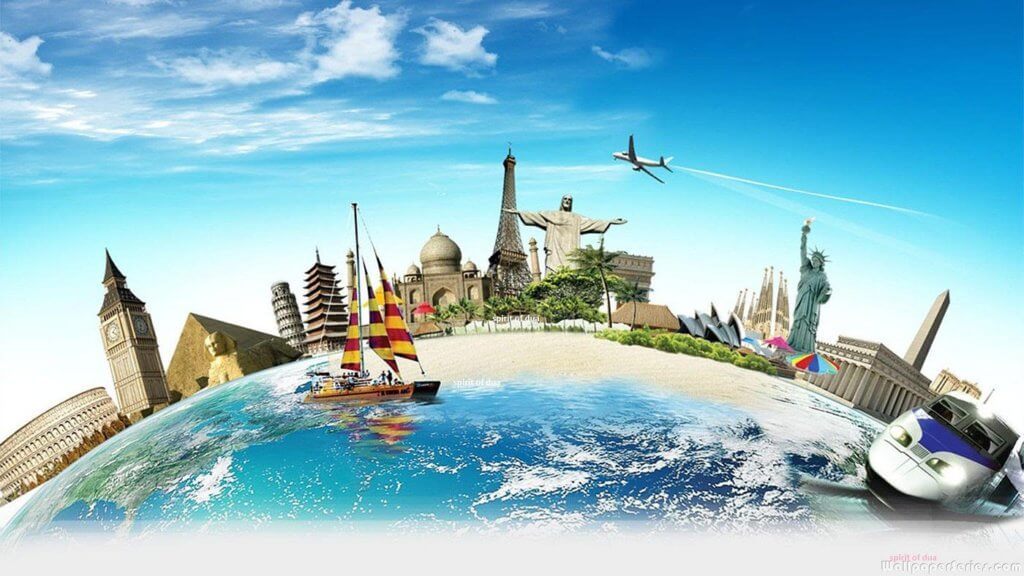
Business Travel Guide
12 different types of tourism you need to know.

Tourism is a vast and diverse industry that has been growing steadily over the years. It is a significant contributor to the global economy, and its impact is felt across various sectors. Tourism can be defined as the act of travelling for pleasure or business purposes. It involves visiting places of interest, exploring new cultures, and experiencing different types of tourism, and each has its unique characteristics and attractions.
Cultural tourism is one of the most common types of tourism, and it involves visiting places of historical and cultural significance. Eco-tourism is a type of tourism that focuses on the conservation of natural resources and the promotion of sustainable tourism. Health tourism is another type of tourism that involves travelling to destinations for medical treatment or wellness purposes.
Key Takeaways
- Tourism is a diverse industry that involves travelling for pleasure or business purposes.
- There are various types of tourism, including cultural tourism, adventure tourism, eco-tourism, and health tourism.
- Each type of tourism has its unique characteristics and attractions, and they contribute to the growth of the global tourism industry.
1. Cultural Tourism
Cultural tourism is one of different types of tourism that involves travelling to experience the culture and heritage of a destination. It is a way to explore the customs, traditions, history, and art of a place. Cultural tourism is a popular form of tourism that attracts millions of visitors each year.
- Historical visits
Historical visits are a popular form of cultural tourism. Many people travel to historical sites to learn about the past and experience the culture of a destination. Historical sites can include ancient ruins, castles, and museums. These sites offer a glimpse into the history and culture of a place and can be a great way to learn about the past.
- Culinary exploration
Culinary exploration is another popular form of cultural tourism. Many people travel to experience the food and drink of a destination. This can include trying local cuisine, visiting food markets, and taking cooking classes. Culinary tourism is a great way to experience the culture of a place through its food and drink.
- Art and literature tours
Art and literature tours are a great way to experience the culture of a destination. Many people travel to explore the art and literature of a place. This can include visiting museums, galleries, and historic sites related to art and literature. Art and literature tours can provide a deeper understanding of the culture and heritage of a place.
Business Tourism
Business tourism, also known as corporate travel , refers to travel that is done for work-related purposes. It is a subset of regular tourism and involves individuals who are still working and being paid while away from both their workplace and home. Business tourism can take many forms, including attending conferences, meetings, trade shows, and exhibitions.
According to Yahoo , corporate travel is expected to reach a global market value of $1.5 trillion by 2028, which is nearly three times itis 2020 levels. This is not surprising, given the extraordinary ROI of business travel. For every $1 a company spends on travel arrangements, they get back $12.5 in revenue.
Business tourism can be divided into four main categories, which are:
- Meetings: A meeting is an event where people come together to discuss a specific topic or issue. Meetings can be held for various purposes, such as to share information, make decisions, or solve problems. They can be held in a variety of venues, such as hotels, conference centres, or offices.
- Incentives: An incentive in corporate travel is a reward given to employees or customers for achieving a specific goal or target. Incentive travel is a form of business tourism that involves rewarding employees or customers with a trip or holiday.
- Conventions: A convention is a large meeting or conference that is usually held over several days. Conventions are often held by professional associations or trade organisations and can attract thousands of attendees.
- Exhibitions: An exhibition is an event where companies or organisations showcase their products or services. Exhibitions can be industry-specific or open to the general public.
Business tourism is an important part of international tourism, and it is expected to continue to grow in the future. It provides opportunities for individuals and companies to network, learn, and do business with others from around the world.
Adventure Tourism
Adventure tourism is a type of tourism that involves travelling to remote and exotic locations outside of one’s comfort zone. It is characterised by activities that are physically and mentally challenging, and often involve an element of risk. There are many different types of adventure tourism, each with its own unique experiences and challenges.
- Mountain climbing
Mountain climbing is a popular form of adventure tourism that involves climbing to the summit of a mountain. This activity requires a high level of fitness, as well as technical skills and equipment. Some of the most popular mountain climbing destinations include Mount Everest in Nepal, Kilimanjaro in Tanzania, and the Matterhorn in Switzerland.
- Scuba diving
Scuba diving is another popular form of adventure tourism that involves exploring the underwater world. This activity requires specialised equipment and training and can be done in a variety of locations, including coral reefs, shipwrecks, and underwater caves. Some of the most popular scuba diving destinations include the Great Barrier Reef in Australia, the Red Sea in Egypt, and the Galapagos Islands in Ecuador.
- Safari expeditions
Safari expeditions are a type of adventure tourism that involves exploring wildlife reserves and national parks in search of exotic animals. This activity can be done on foot, by vehicle, or even by hot air balloon. Some of the most popular safari destinations include the Serengeti in Tanzania, Kruger National Park in South Africa, and the Masai Mara in Kenya.
Adventure tourism is a great way to explore the world and push oneself to new limits. However, it is important to remember that these activities can be dangerous and should only be undertaken with proper training and equipment.
Eco-Tourism
Eco-tourism is a type of tourism that focuses on responsible travel to natural areas while conserving the environment and improving the well-being of local people. It involves activities that are designed to minimize the negative impact on the environment and promote conservation efforts.
- Wildlife sanctuaries
Wildlife sanctuaries are an important part of eco-tourism. They provide a safe haven for endangered species and help to preserve their natural habitat. Visitors can observe wildlife in their natural environment while learning about conservation efforts. Wildlife sanctuaries also offer opportunities for research and education.
- Conservation projects
Conservation projects are another important aspect of eco-tourism. These projects are designed to protect the environment and promote sustainable development. Visitors can participate in activities such as tree planting, beach clean-ups, and wildlife monitoring. These projects not only help to protect the environment but also provide economic benefits to local communities.
- Eco villages
Eco-villages are communities that are designed to be environmentally sustainable. They use renewable energy sources, organic farming, and other eco-friendly practices. Visitors can learn about these practices while experiencing the local culture and way of life. Eco-villages also provide opportunities for visitors to participate in community projects and learn about sustainable living.
Overall, eco-tourism is a great way to promote conservation efforts while providing economic benefits to local communities. By choosing eco-tourism, visitors can have a positive impact on the environment and support sustainable development.
Health Tourism
Health tourism is a growing industry that involves travelling to another country to receive medical treatment or improve one’s health and well-being. This type of tourism is divided into two main categories: spa and wellness retreats and medical treatments abroad.
- Spa and wellness retreats
Spa and wellness retreats are a popular form of health tourism that involves staying at a resort or hotel that offers a range of wellness services, such as massages, yoga classes, and healthy meals. These retreats are designed to help individuals relax, rejuvenate, and improve their overall health and well-being.
Some of the most popular spa and wellness retreat destinations include Bali, Thailand, and India. These countries offer a range of wellness services at affordable prices, making them attractive destinations for those looking to improve their health and well-being.
- Medical treatments abroad
Medical treatments abroad are another form of health tourism that involves travelling to another country to receive medical treatment. This type of tourism is particularly popular among those who live in countries with limited medical resources or high healthcare costs.
Some of the most common medical treatments received abroad include dental work, cosmetic surgery, and fertility treatments. Countries such as Thailand, India, and Mexico are popular destinations for medical tourism due to their lower medical costs and high-quality medical facilities.
It is important to note that medical treatments abroad carry certain risks, such as language barriers, differences in medical practices, and lack of follow-up care. Therefore, it is important to thoroughly research the medical facility and treatment before making any travel arrangements.
Sports Tourism
Sports tourism is a type of tourism that involves travel to participate in or observe sporting events. It is a fast-growing sector of the global travel industry, with a wide range of activities and events available to tourists.
- international sporting events
One of the most popular forms of sports tourism is attending international sporting events. These events can include the Olympics, the World Cup, and other major tournaments. Tourists can travel to different countries to watch their favourite teams and athletes compete against each other. These events can also be a great way to experience the local culture and cuisine of the host country.
- Golf vacations
Golf vacations are another popular form of sports tourism. Golfers can travel to different destinations around the world to play on some of the best golf courses. These vacations can include all-inclusive packages that provide accommodation, meals, and access to the golf course. Some of the most popular golf destinations include Scotland, Ireland, and the United States.
- Skiing holidays
Skiing holidays are a popular winter sports tourism activity. Tourists can travel to different ski resorts around the world to ski or snowboard on the slopes. These resorts offer a range of activities, including skiing, snowboarding, and other winter sports. They also provide accommodation, meals, and other amenities to make the holiday more enjoyable.
Religious Tourism
Religious tourism is a type of tourism that involves travelling for religious purposes or to see things of religious importance. It is also known as faith tourism and incorporates a wide range of activities, including pilgrimages and spiritual retreats.
- Pilgrimages
Pilgrimages are a type of religious tourism that involves travelling to a holy site or shrine. They are often undertaken for spiritual or religious reasons and can be a powerful way for individuals to connect with their faith. Pilgrimages can be short or long and may involve walking, cycling, or travelling by other means of transportation. They can also be group or solo experiences.
- Spiritual retreats
Spiritual retreats are another type of religious tourism that involves spending time in a quiet, peaceful environment to reflect on one’s spiritual beliefs. These retreats can be led by a spiritual leader or taken individually. They can be a way for individuals to deepen their connection with their faith and find inner peace.
Religious tourism is a significant aspect of the tourism industry in many countries around the world. It can have a positive impact on local economies, providing jobs and income for local businesses. It can also have a positive impact on individuals, providing them with a way to connect with their faith and find inner peace.
Educational Tourism
Educational tourism is a type of tourism that involves travelling to a destination with the primary purpose of learning something new. It is an excellent way for individuals to gain knowledge and skills while experiencing new cultures and environments.
- Student exchange programs
Student exchange programs are a popular form of educational tourism. These programs allow students to study abroad for a semester or a year while attending a foreign university. Students can learn a new language, experience a new culture, and gain valuable academic experience. Some universities offer exchange programs with partner institutions, while others offer independent study options.
- Research trips
Research trips are another form of educational tourism. These trips are designed for individuals who want to conduct research in a particular field or area. They can be organised by academic institutions, research organisations, or individuals. Research trips can be a great way to gain first-hand experience, collect data, and develop new skills.
Overall, educational tourism is an excellent way for individuals to gain knowledge and skills while experiencing new cultures and environments. Whether it’s through student exchange programs or research trips, educational tourism can provide a valuable learning experience for individuals of all ages.
Cruise Tourism
Cruise tourism is a type of tourism that involves travelling on a cruise ship for leisure purposes. It is a luxurious form of travelling that offers an all-inclusive holiday on a cruise ship for at least 24 hours. Passengers on a cruise ship have access to a wide range of amenities and recreational facilities on board, such as swimming pools, casinos, and theatres.
The Caribbean, Mediterranean, and Arctic regions of the world are among those where cruise travel is most popular. Cruise ship passengers can take advantage of a set and detailed itinerary that includes many ports and city visits. This allows them to travel to several locations and take in various cultures all in one vacation.
There are different types of cruise ships available for passengers to choose from, depending on their preferences and budget. Some of the major types of cruise ships include:
- Luxury cruise: These are high-end cruise ships that offer luxurious amenities and services to passengers.
- Expedition cruise: These are small ships that are designed for adventure and exploration. They are ideal for passengers who want to explore remote and exotic destinations.
- Mega cruise: These are large cruise ships that can accommodate thousands of passengers. They offer a wide range of amenities and services, including multiple restaurants, bars, and entertainment options.
- Themed cruise: These are cruise ships that are designed for specific interests, such as music, food, or sports.
- Adventure cruise: These are cruise ships that are designed for adventure activities, such as hiking, kayaking, and snorkelling.
- Single cruise: These are cruise ships that are designed for solo travellers. They offer a range of activities and social events to help solo travellers meet other passengers.
Dark Tourism
Dark tourism is a type of tourism that involves visiting places associated with death, tragedy, and suffering. It is also known as grief tourism, black tourism, or thanatourism. The term “ dark tourism ” was first coined by two researchers, John Lennon and Malcolm Foley, in 1996.
According to Tourism Teacher , there are seven main types of dark tourism sites. These include:
- Death and tragedy sites: These are places where death or tragedy has occurred, such as battlefields, disaster sites, and places of execution.
- Genocide and atrocities sites: This is any place where large-scale violence, such as genocide, has occurred, such as concentration camps, killing fields, and memorials.
- Cemeteries and mausoleums: This is where the dead are buried or interred, such as graveyards, tombs, and catacombs.
- Museums and exhibitions: These are places that exhibit objects or information related to death and tragedy, such as holocaust museums, crime museums, and medical museums.
- Dark fun factories: These are places that offer entertainment related to death and tragedy, such as escape rooms, zombie chases, and theatrical activities.
- Literary and film locations: These are places associated with famous works of literature or film that deal with death and tragedy, such as the locations used in the Harry Potter series or the film Schindler’s List.
- Dark natural sites: These are natural sites associated with death and tragedy, such as volcanoes, caves, and mountains where people have died.
Space Tourism
Space tourism is a relatively new type of tourism that involves commercial space travel for recreational purposes. It has become increasingly popular in recent years, with several companies offering different types of space tourism experiences.
Types of Space Tourism
There are three main types of space tourism: suborbital, orbital, and lunar.
Suborbital space tourism
Suborbital space tourism involves taking passengers to the edge of space, providing them with a view of Earth from above and a taste of weightlessness. In these missions, spacecraft reach altitudes between 80 to 100 kilometres before returning to Earth. Suborbital flights last a few minutes and are designed to give passengers a brief experience of space travel. Companies such as Virgin Galactic and Blue Origin are currently working on suborbital space tourism programs.
Orbital space tourism
Orbital space tourism involves taking passengers into Earth’s orbit, allowing them to experience several days or weeks in space. This type of space tourism is more expensive and requires more training than suborbital space tourism. In 2001, American businessman Dennis Tito became the first space tourist to visit the International Space Station (ISS). Since then, several other space tourists have visited the ISS, including Guy Laliberté, the founder of Cirque du Soleil.
Lunar space tourism
Lunar space tourism involves taking passengers to the Moon, allowing them to explore its surface and experience the Moon’s low-gravity environment. This type of space tourism is still in development, with only a few companies, such as SpaceX and Blue Origin, currently working on lunar space tourism programs.
Space tourism is still in its early stages, but it has the potential to become a significant industry in the future. As technology advances and becomes more affordable, more people may have the opportunity to experience space travel. However, safety concerns and high costs are still major obstacles that need to be addressed before space tourism can become a mainstream industry.
Frequently Asked Questions
What are the main categories of tourism?
The main categories of tourism are leisure tourism, business tourism, adventure tourism, cultural tourism, educational tourism, medical tourism, religious tourism, and eco-tourism. Each category is defined by the primary motivation of the traveller and the activities they undertake during their trip.
How do different types of tourism impact the economy?
Tourism has a significant impact on the economy of many countries. The tourism industry creates jobs, generates revenue, and contributes to the development of infrastructure. The economic impact of different types of tourism can vary depending on the destination and the activities undertaken by travellers.
What are the characteristics that define each tourism type?
Each type of tourism has unique characteristics that define it. For example, leisure tourism is characterised by relaxation and enjoyment, while adventure tourism is characterised by risk-taking and physical activity. Cultural tourism focuses on experiencing local traditions and customs, while eco-tourism emphasises sustainability and environmental conservation.
In what ways do tourism types vary internationally?
Tourism types can vary significantly between countries and regions. For example, religious tourism may be more prevalent in countries with a strong religious heritage, while eco-tourism may be more popular in countries with unique natural environments. The popularity of different types of tourism can also be influenced by factors such as climate, geography, and cultural traditions.
Can you list the primary sectors within the tourism industry?
The primary sectors within the tourism industry include accommodation, food and beverage, transportation, attractions and activities, and travel services. Each sector plays a vital role in supporting the tourism industry and contributing to the overall tourism experience.
How is tourism classified according to traveller motivation?
Tourism can be classified according to traveller motivation into three categories: domestic tourism, inbound tourism, and outbound tourism. Domestic tourism refers to travel within the traveller’s own country, while inbound tourism refers to travel by foreign visitors to the country. Outbound tourism refers to travel by residents of a country to other countries. Each category is characterised by different motivations and travel patterns.
Read more Business Travel Guide articles

9 Corporate Credit Card Policy Best Practices

What is MICE Travel? Everything You Need to Know in 2024

A Complete Guide to Corporate Travel Allowance

9 Benefits of Organizing Company Trips for Employees
- Hospitality Industry
4 new types of tourism
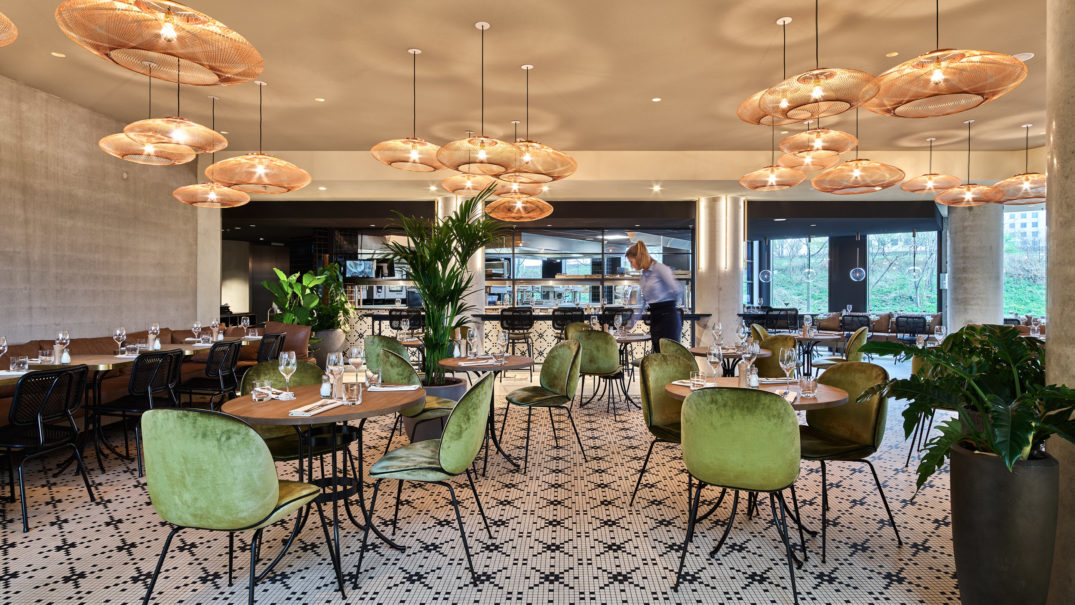
June 28, 2019 •
4 min reading
Traveling is one of the most effective ways of exploring a place, culture or a destination. There are various types of tourism that you must have heard of: Leisure, business, sports, adventure and more. This is an article that represents 4 new types of tourism.
1. Sustainable tourism
People everywhere have been alarmed about the climatic conditions currently taking place all around the world and some tourism organizations are contributing their share of awareness regarding the subject. More and more people are being conscious about environmental health hazards and its impacts. People not only want to leave a long-term positive impact, but also contribute as much effort as they can to the local community when they are traveling. Many popular hotels in Europe are becoming eco-friendly , giving travelers an opportunity to travel healthy - these are referred to as Ecotel Hotels.
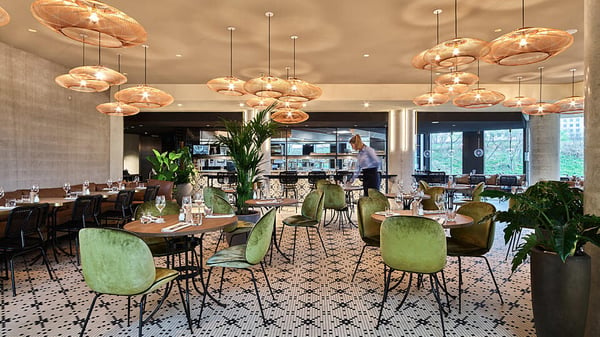
2. Food tourism
Food tourism which is also known as culinary tourism, is the building block of any touristic destination or location that contributes to tourism. Food also represents the culture of a destination that delivers beauty and entertainment as their primary source of interest. More precisely, travelers might judge a tourist attraction based on the local dishes because food is tightly bound to the corresponding tourist spot. With that said, “food tourism” does not refer to eating only. It is the collection of activities such as; vegetable farming, produce market, tasting sessions, etc. The rise of food tourism is trending rapidly and should be planned carefully and efficiently. Tour radar allows you to explore and try culinary experiences across the globe.

3. Experiential tourism
Experiential travel, also known as immersion travel, is a form of tourism in which people focus on experiencing a country, city or particular place by actively and meaningfully engaging with its history, people, culture, food and environment. There’s been growing demand around culinary travel, cultural exploration, and activity-based travel experiences for a while now. So, before it runs its course, which it never will, you might want to try this type of tourism. Make wine in Bordeaux, cook street food in Vietnam, and go hiking in Patagonia are some of the famous examples of experiential tourism.
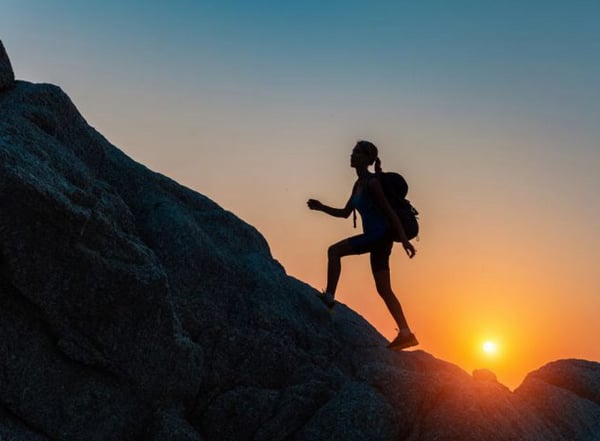
4. Wellness tourism
Due to increasing work schedules, and exhausting jobs, wellness tourism has become an escape route for many tourists. While wellness travel, referring to tourism promoting health and well-being through physical, psychological, or spiritual activities, has come into existence for a while, it’s only recently become massively popular. According to a travel column conducted by booking.com, 48% of travelers are willing to take holidays as a moment to “reflect and make better life choices”, and nearly 40% are interested in health or well-being travel experience. Obviously, recharging themselves by going for wellness travels would become one of the most desirable choices. This has led to an opportunity for travel agencies to diversify product line and discover a niche in the outstandingly competitive landscape. Would you want to take a break and visit beautiful destinations for wellness ?
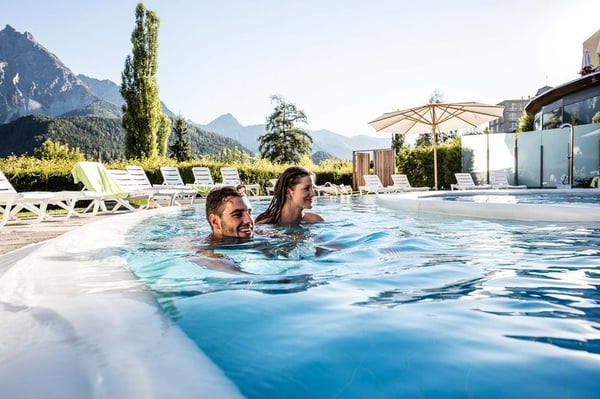
Senior Lecturer at EHL Passugg
Keep reading

Customer experience management: Business vs. Customer expectations
Mar 28, 2024

What is the hospitality industry? All your questions answered

How to manage cultural diversity in hospitality - A quick guide
Mar 22, 2024
Do you want to learn how to create unique guest experiences?
By earning our two top hospitality degrees, you will enjoy the hotel management education of the future. Learn more and download the brochure.
This is a title
This is a text
- Bachelor Degree in Hospitality
- Pre-University Courses
- Master’s Degrees & MBA Programs
- Executive Education
- Online Courses
- Swiss Professional Diplomas
- Culinary Certificates & Courses
- Fees & Scholarships
- Bachelor in Hospitality Admissions
- EHL Campus Lausanne
- EHL Campus (Singapore)
- EHL Campus Passugg
- Host an Event at EHL
- Contact our program advisors
- Join our Open Days
- Meet EHL Representatives Worldwide
- Chat with our students
- Why Study Hospitality?
- Careers in Hospitality
- Awards & Rankings
- EHL Network of Excellence
- Career Development Resources
- EHL Hospitality Business School
- Route de Berne 301 1000 Lausanne 25 Switzerland
- Accreditations & Memberships
- Privacy Policy
- Legal Terms
© 2024 EHL Holding SA, Switzerland. All rights reserved.
Travel With - The Holiday Story
18 Different Types of Tourism | Globally Accepted
Last few years, tourists and their demands have frequently been changing. Also, the tourism industry is changing based on needs. This article elaborates on different types of tourism, tourists, planning, activities, products, travel , etc. It helps your travel planning as well.
Along with recreation, tourism has become one of the growing industries, and it’s the source of income for many people.
“Life is all about adventure, so pack your bags and start the tour.”
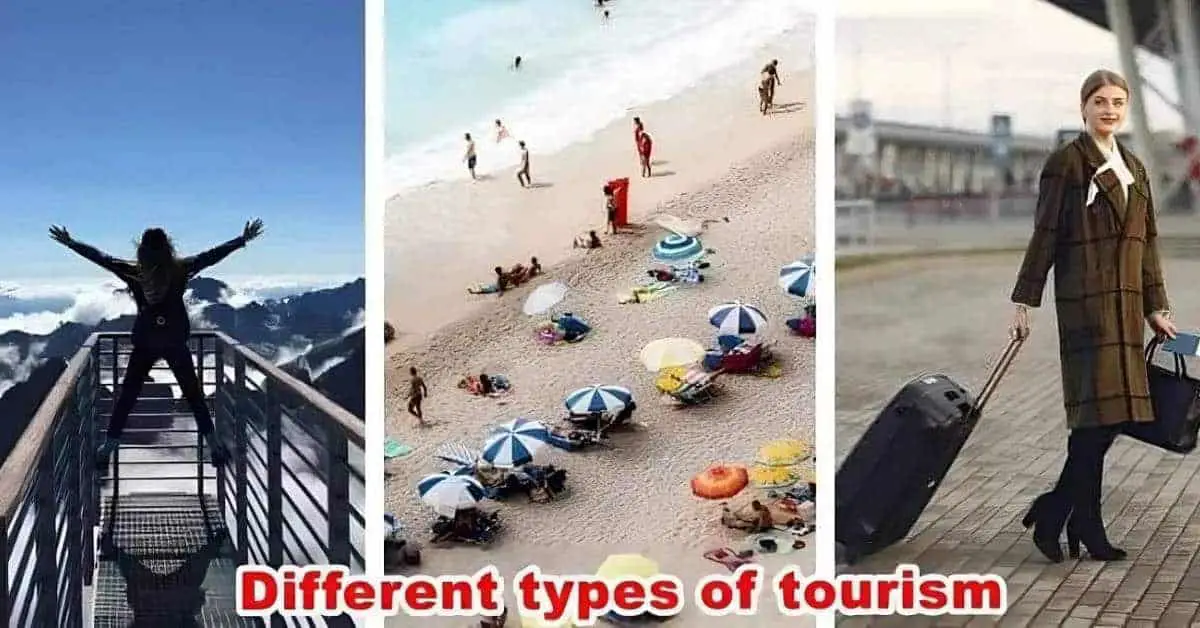
Different Types of Tourism
What is tourism.

Tourism is a process of spending time away from daily routine or home to pursue recreation, relaxation, and pleasure while using the commercial provision of services.
Tourism in a country has many benefits: it creates employment, boosts revenue, develops infrastructure, helps in cultural exchange, etc. Travel duration under tourism must be less than 12 months (a consecutive year).
So, What comes first to mind when we hear the word Tourism?
The most common thought is to pack the rucksack and travel away from day-to-day life. That means the movement of people from their usual residence to another place.
Suppose your friend’s aim for the tour might differ from yours. For example, you may travel for recreation, but he may go for business.
Classification of Tourism
According to the United Nations World Tourism Organization (UNWTO), tourism involves the movement of people in the country’s natural environment or outside the country for personal or other purposes. These different purposes classified the tourism industry in many ways.
This article lists the main tourism classifications: Domestic tourism, International tourism, Business tourism, Adventure tourism, Medical tourism, Educational tourism, etc.
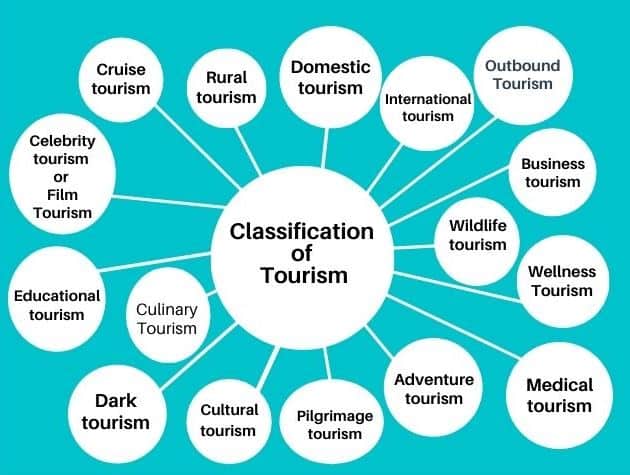
Importance of Tourism – Why is tourism important?
Tourism has a direct impact on any country’s economy. The role of tourism in economic development is important. A vast amount of job possibilities can develop through public relations in tourism. Knowing another state/country’s taste culture is a great filling from a traveler’s perspective.
Mainly how many types of tourism are there
Mainly three types of tourism are found in any country. The classes are domestic tourism, International tourism, and outbound tourism. But nowadays, many types of tourism newly evolved.
18 Different Types of Tourism
The various types of tourism are developed nowadays and become popular; they are:-
- Domestic tourism
- International tourism
- Outbound tourism
- Business tourism
- Adventure tourism
- Wildlife tourism
- Medical tourism
- Wellness tourism
- Pilgrimage and spiritual tourism
- Cultural tourism
- Dark tourism
- Culinary tourism
- Celebrity tourism or Film tourism
- Educational tourism
- Cruise tourism
- Rural tourism
- Beach tourism
- Space tourism
Let’s discuss how many flavors and categories of tourism can be found in any country and accepted globally.
1. Domestic Tourism
Domestic tourism involves traveling in one’s own country, and tourists don’t cross international borders or entry points. Domestic tourism is used to minimize poverty, enhance infrastructure, and boost the economy’s growth and generation of employment.
2. International Tourism
Travel outside your country needs a visa and passport; called International tourism. For example, if you want to explore The UK from Sri Lanka, you need documents to enter another country.
Read How to Listen to Music on a Plane
3. Outbound Tourism
This tourism defines a tourist traveling for a holiday to a different country, like your residents in Bali and traveling to Barcelona . It is an example of outbound Tourism.
4. Business Tourism
This tourist travels to meetings, officially gets together for conferences, etc.
Business tourism plays a vital role in the tourism sector. Sometimes, people stay out of their typical environment for more than a year for business purposes and spend their vacations there.
General activities related to business tourism include attending meetings, officially getting together, conferences, seminars, visiting exhibitions and trade fairs, etc. This tourism levels up the purchasing power.

5. Adventure Tourism
Adventure tourism is a person’s travel from one place to another to seek fresh adventures and activities. This form of tourism is most famous among young tourists and people who like to explore remote areas. It encourages us to leave our comfort zone by undertaking activities like hiking , rafting, climbing, diving, etc.
Adventure tourism is increasing day by day. You could also try whitewater rafting, the Ladakh tour, the Kedarnath tour, Port Blair, and Andaman and Nicobar tour for the adventure.

6. Wildlife Tourism
Wildlife tourism is people’s travel to different places to observe and interact with wildlife, flora, and fauna in their natural habitat. Safaris, visiting the animal rescue center, swimming with dolphins, etc., are examples of wildlife tourism.
Because of exotic species of wildlife, this tourism became recognized. The Sariska Wildlife or Hyde Park Sanctuary , Keoladeo Gana National Park, and Corbett National Park are renowned for wildlife tourism. The Great Barrier Reef is also famous in Australia.
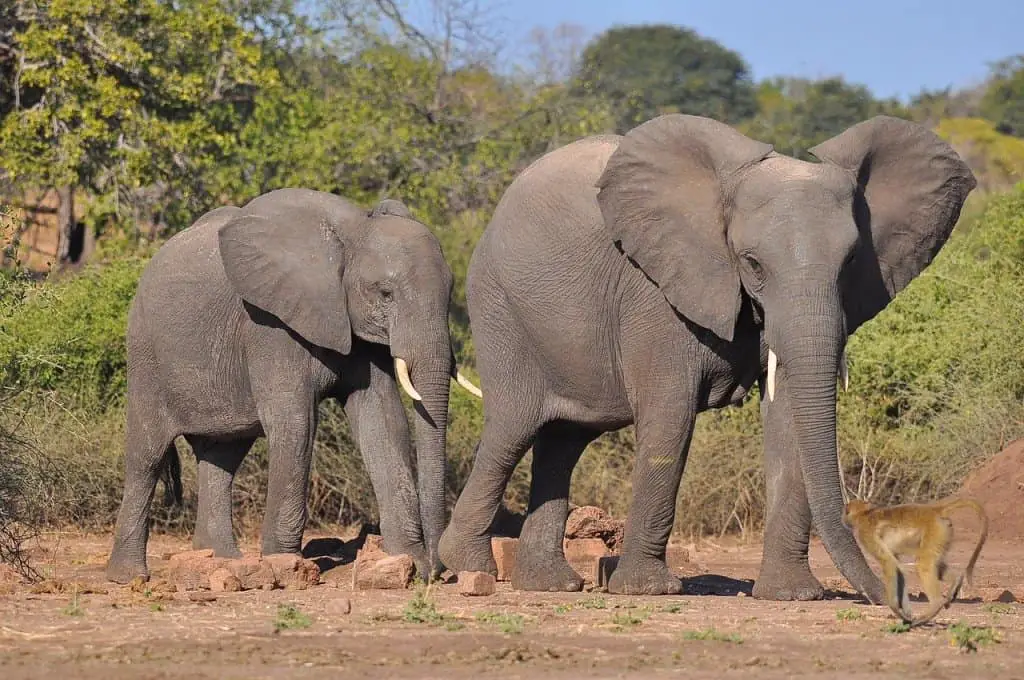
7. Medical Tourism
Many people travel for treatment, and several medical institutes cure foreign patients. Thailand has recorded 6000,000 new patients every year. Malaysia also treated over 100,00 tourists in 2005. 45% of foreign tourists come to Chennai for medical treatment.

8. Wellness Tourism
Wellness tourism has been a significant part of tourism since ancient times. This tourism mainly attracts those tourists who want to regain their health. Wellness tourism will help you to get rid of mental and health stress.
Tourists recover their health issues through physical, spiritual, or psychological activities. All around the world, plenty of destinations are popular for improving health.
Examples include Mexico Temazcal Beach Resort Spa, Caribbean wellness cruise, California weight loss and detox retreats, Colorado Hiking and Mountain Yoga retreat, and China Hot Spring Resorts TCM.
Ayurveda, Yoga , Meditation, Panchakarma, and Rejuvenation Therapy are the oldest Therapy of treatments to improve health and the best way to develop wellness tourism.

9. Pilgrimage and Spiritual Tourism
Pilgrimage or spiritual tourism is when a person journeys to other places for spiritual or religious reasons.
Spiritual tourism helps support local cultural activities and handicrafts, generating employment and revenue. Trips to Jerusalem, Bodh Gaya , Hajj, etc., are pilgrimage or spiritual tourism.
This tour has been famous for ages, but It’s popular among older people mainly. Vaishno Devi, Golden Temple, Char Dham, and Mathura Vrindavan are some places famous for Pilgrimage tours.
10. Cultural Tourism
Cultural tourism is a person’s journey to learn and participate in local festivals, rituals, and cultural activities of other places. It’s more than a commercial activity.
This form of tourism helps spread aboriginal communities’ culture, traditions, diversity, and richness to the rest of the world.
Visit the historical sites and the artistic features of that country too. Famous cultural tourism places are:-
- India – Durga puja in Kolkata , Temples at Banaras, Jaipur, known as the pink city Palace in Rajasthan. Forts and monuments in Delhi, Agra, UP.
- UK – Tower of London, The British Museum, Big Ben, London Durga puja , etc.
- Kenya – The main attraction is the dance of the Maasai tribe.
- Morocco – The main attractions are the Olive Festival and Honey Festival.
- Jordan – The main attraction- is Jerash, famous for Roman architecture Petra, the red-rose curved rock city and one of the seven world wonders, and Shoubak with its Montreal Crusader Castle.
- Greece – The main attraction- is the Lion Gate of Mycenae.
- Turkey – the main attraction- Sultan Ahmed. Mosque, House of the Virgin Mary.
- Vietnam – The main attraction- is Sapa Market.
- Ireland tour – Cliffs of Moher, Dublin, Killarney National Park, etc.

11. Dark Tourism
Dark tourism, Black tourism, or grief tourism are related to people’s travel to historical places involved with tragedy and death. Since 2016, dark tourism has significantly increased (over 1200%). Chornobyl, cemeteries, Ground Zero, historical museums, and Auschwitz are popular dark tourism destinations.
It is referred to as mourning tourism. Dark tourism involves visiting those places and sites that have witnessed the greatest tragedies in history. Besides this history of human suffering and bloodshed, these locations are famous for their historical value.
So, those sites that carry potent pesticides have become popular tourist destinations and attract many tourists yearly.
Like Famous sites In Japan, Hiroshima & Nagasaki bombing locations, Ground Zero, New York, USA . The War Remnants Museum, Ho Chi Minh City, Vietnam; Auschwitz concentration camp, Auschwitz, Germany; Tuol Sleng Genocide Museum, Phnom Penh, Cambodia, etc.

12. Culinary Tourism
Culinary or food tourism involves tasting and experiencing local and traditional food in a specific country, region, city/town/village.
It is significant that besides accommodation and infrastructure. Here, food is one of the prime components. Therefore, lots of tours are organized here to experience the culinary culture.
Today, with the overall growth of this sector, tourism has expanded and developed to the next level.
Every year, Different states of India organize food festivals at different times in different states. Thousands of people from abroad join this festival to enjoy traditional food.
Everyone knows India is called “The land of spices.” And every state has unique kinds of food culture. Today, it is a significant part of tourism.
Culinary Tourism includes where people visit certain regions like California, Napa Valley, Catalonia, USA, and Spain) to enjoy foreign wines.
Famous Destinations : London, France, Beijing, Mexico, Italy, etc.

13. Celebrity Tourism or Film Tourism
Celebrities are the primary source of attraction for celebrity or film tourism. In this form of tourism, tourists visit places where a celebrity currently lives or has lived. Management organizations use celebrity tourism to promote a place or attraction.
Although no celebrities are present, only you can see the entire studio. Many Destination Management organizations (DMOs) use celebrity tourism to promote destinations as an attraction.
Popular celebrity tourism destinations are – Hollywood, Harry Potter Studios, Ramoji Film City India, Cannes Film Festival, Hong Kong, and Madame Tussauds.

14. Educational Tourism
Educational tourism is a new pattern of tourism that comprises learning new things. It’s the journey a person takes to leave his hometown or country for educational or learning purposes. Educational tourism is famous in Japan, Australia, the UK, etc.
An educational tourist can be away from his hometown for many days. Education and learning are the key reasons for their travels, and it is learning knowledge from historical places, cultural and social events, and understanding a language.
It’s used as a tool to complement education by gathering travel experience. Many educational institutes combine these trends in primary schools and are compulsory in higher education.
15. Cruise Tourism
Holidays based partially or wholly on a cruise ship are considered cruise tourism. It provides tourists with a multi-centered holiday experience. Cruise ships (like small yachts, big ships, etc.) take people on a tour of oceans, fjords, or rivers.
Throughout their trip, tourists can enjoy time at various destinations. The Mediterranean, Caribbean, Arctic, Antarctica, etc., are famous destinations. It’s the newest and fastest-growing part of the world’s tourism industry.
The world’s famous coastline and inland waterways have the potential to develop cruise and houseboat tourism like Quark Expeditions, OZ Cruising, and A-ROSA River Cruises.
India has many types of tourist cruises. Soon, India will be including Ocean Cruise, River Cruises, and Lake Cruises.
View this post on Instagram A post shared by ⚓️ Iglu Cruise (@iglucruise)
16. Rural Tourism
There are many forms of tourism, and It’s divided into many parts. In this category, a tourist spends leisure time in rural areas or villages. Visitors can make a plan to visit the rural area for some days or a couple of months.
Especially Solo travelers can visit those places to enjoy their lonely time. They join all the local activities that happen in this village.
Rural tourism is included in a ‘country holiday’ where tourists spend much of their leisure time. Thus, they taste the recreational activities in the rural environment.
Like Farming in Rural Punjab, The Spiti Valley Rural Tourism, Sundarban and Jodhpur Village Life, Bhubandanga West Bengal, and Community Tourism in Kutch.
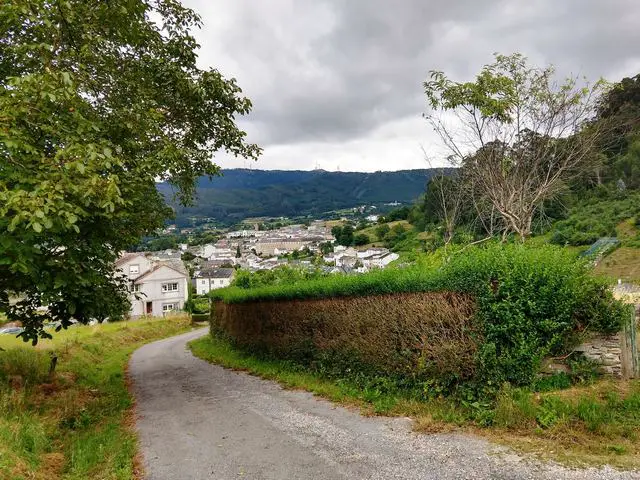
17. Beach Tourism
Beach tourism is how a beach plays a major element in the holiday, and it’s the most modern form and the staple of tourism.
In beach tourism, tourists travel to a beach for leisure, recreation, or business purposes. People who like the clear blue sight of a beach undertake this journey.
Popular Beach Destinations: The Maldives, Seychelles, Turks And Caicos, French Polynesia, Africa , Queensland, Australia, Philippines, Thailand, Bali In Indonesia, Lakshadweep, Goa, Puri, etc.
Why is Beach Tourism important?
- Beach tourism has brought about many economic benefits.
- It has led to the building of many attractions, resorts, etc.
- Beach resorts help in meeting the increase in intra-regional demand and domestic demand.
- This type of tourism creates numerous employment opportunities.

Negative Impacts of Beach Tourism
- It leads to the wastage of a lot of resources and space.
- Beach tourism pollutes water and environmental resources.
- Building new berths, marinas, etc., hurts coastal and marine life.
18. Space Tourism
We have seen significant changes in the aviation industry in the last 100 years. What was once used for warfare and cargo transport is now used for traveling.
Human development has now broken all bounds to take this journey to the vast emptiness of space.
Russia has been the pioneer in this field. Soyuz spacecraft conducted its first space trip with American businessman Dennis Tito in April 2001.
It was a government spacecraft that conducted seven space expeditions within the next six years. This surge in public interest led other organizations worldwide to dive into this area.
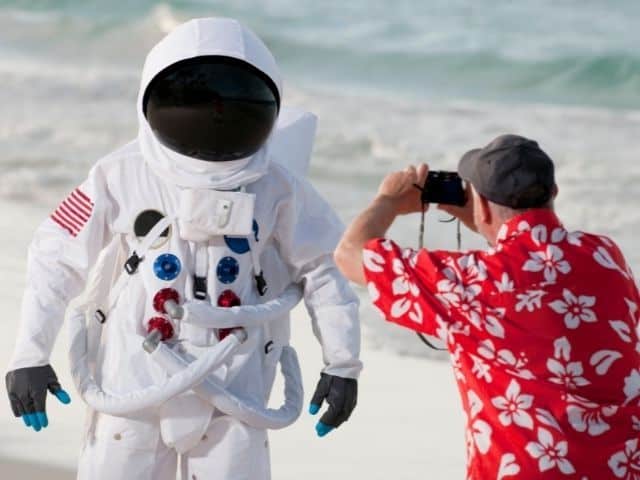
There are different types of space tourism
Orbital Space Tourism: These flights remain within an orbit around the Earth at a speed higher than suborbital space flights. These flights orbit the world constantly for their entire stay in outer space.
Sub-orbital Space Tourism : This was the beginning of space tourism. The spacecraft launches with a substantial initial velocity that pushes it out of the Earth’s atmosphere. But this doesn’t throw it entirely out of the gravitational sphere. The power is insufficient for orbiting, so it freezes once the engines are shut off.
SpaceX C.E.O. Elon Musk proposed the prospect of lunar tourism. In 2018, he announced the ‘Dear Moon Project,’ the highly anticipated first lunar space tourism mission. They will carry out this project in 2022 with Japanese billionaire Yusaku Maezawa.
Space Tourism cost
The cost of each sub-orbital trip on the Soyuz spacecraft is reported to be 200,000-250,000 million U.S. dollars. Other trips carried out by different organizations were priced around the same margin.
Virgin Galactic recently announced that each ticket would cost 450,000 USD for the upcoming missions.
Space Tourism companies
Even though the industry is still up and coming, massive companies dominate the market. Space Adventures of Virginia, U.S.A, was the first successful space tourism company.
Elon Musk’s SpaceX, Richard Branson’s Virgin Galactic, and Amazon C.E.O. Jeff Bezos’s Blue Origin are all set to launch their space tourism business by 2022. Blue Origin recently conducted its debut flight with Jeff Bezos.
Oliver Daemen and Wally Funk were the world’s youngest and oldest men in space, respectively.
Space Tourism advantages
The universe and outer space have always been intriguing subjects for people on Earth. Yet, there were limited resources to satisfy their curiosity. The option of space tourism thus connects people with space in a unique way and solves its mystery. A more ecological advantage is the waste policy.
There is minimum pollution associated with these travels. Also, this allows a whole new sector of job opportunities for highly educated professionals and ambitious youth.
Top 13 list of space tourists
- Dennis Tito (American): April 28 – May 6, 2001
- Richard Branson
- Gennady Padalka
- Guy Laliberté
- Eytan Stibbe
- Sian Proctor
- Mark Shuttleworth (South African / British): April 25 – May 5, 2002
- Gregory Olsen (American): October 1 – October 11, 2005
- Anousheh Ansari (Iranian / American): September 18 – September 29, 2006
- Charles Simonyi (Hungarian): April 7 – April 21, 2007[8]
- Richard Garriott (American): October 12 – October 23, 2008[9]
- Sheikh Muszaphar Shukor (Malaysian): October 10 – October 23, 2007
Space Tourism in India
Space activities, in general, have been quite a staggering section in India. Last year, the government announced a policy that opens space exploration to private sectors, but hardly any company has taken action on it.
Entrepreneur Santhosh George Kulangara will be the first Indian space tourist as he booked his spot on a Virgin Galactic space flight in 2007. Hopefully, he will join Dennis Tito, Mark Shuttleworth, Gregory Olsen, and many more this year.
Forms of Tourism
- Atomic Tourism
- Beach Tourism
- Bicycle Tours
- Eco-Tourism
- Geo-Tourism
- Industrial Tourism
- Rural Tourism
- Space Tourism
- Sports Tourism
- Sustainable Tourism
- Virtual Tourism
- War Tourism
What is the main purpose of tourism?
- Economic Sustainability: It ensures the effectiveness and competitiveness of tourism destinations and enterprises. It helps continue improvement, which is beneficial in the long run.
- Local enrichment: Tourist destination prosperity is an enormous part of tourism. The tourism business continuously maximizes the economic growth of the host destination.
- Employment Standards: Tourism supported the level of wages, terms of service, and availability for all. It creates local jobs without discrimination based on gender, race, disability, or other means.
- Local management: Involve local communities and empower local people for planning and decision-making. The community and tourism management team helped to develop this.
- Community Welfare: Maintain and boost the local community’s lifestyle. They are part of social structures. But surely, this process should take place with no social humiliation or exploitation.
- Natural Integration : Maintain and improve the quality of both urban and rural landscapes. It avoids natural and visual degradation of the environment.
- Natural Integration: Maintain and improve the quality of both urban and rural landscapes. It avoids natural and visual degradation of the environment.
- Biodiversity: Another purpose of tourism is to assist in conserving wildlife and natural wildlife areas and reducing losses.
- Environmental cleanness: Besides the purpose of tourism, all tourists must reduce air, water, and land pollution and waste generation.
- Tourism is a significant part of national integration .
- Tourism always motivates tourists to understand their traditions, heritage, culture, and religion.
- Tourism’s most significant part is economic growth or the business part of the destination. It encourages local people to create handicraft items and prepares local food items, souvenirs, dresses, etc., for sale.
- Tourism is one such thing that constantly boosts the country economically.
Niche Tourism
This tourism focuses on a specific aspect of traveling. It also focuses on the consumer market segment’s interest. It makes the destination more exciting and marketable. Niche Tourism is one of the fastest-growing sectors. Niche tourism indicates a specific feature of travel.
For example, some tourists want a museum, some wish to visit old architectural monuments, buildings, palaces, etc., and some want to eat in a famous restaurant. Thus, niche Tourism shows a particular activity that is not the only focus of travel.

Types of Niche Tourism
- Macro-Niche
- Micro-Niche
What is Macro-Niche?
Macro-niche tourism can be explained as a niche with broad customer interest categories such as rural tourism, Business tourism, sports tourism, medical tourism, environmental travel, etc.
What is Micro-Niche?
It is a small group trip, such as gastronomy tourism, cycling tourism, and geo-tourism.
Niche tourism in South Africa
South Africa is an attractive destination because of the wide diversity of animal and bird species. As a result, tourism professionals found this country has considerable potential.
Advantages of Niche Tourism
- Even if niche tourism is smaller than mainstream markets, it spreads more.
- It has more potential to grow.
- It creates quality jobs that require specialized skills.
What are the different types of tourists?
When we visit a place, we find different kinds of travelers. The aim of each traveler is different. Let us discuss the types of visitors. Five types of tourists are found mostly :-
- Incentive tourists – These tourists did not plan for the tour earlier. Suppose you have been rewarded with two tickets from the office because of your performance. You and your colleagues came for the trip.
- Business tourist – This type of tourist travels for business. They will always prefer a hotel with a conference room. They don’t come to enjoy luxury, but they want the hotel to serve everything on time.
- Leisure tourist – This type of tourist comes to enjoy the vacation. They love those hotels that serve them something extra, like drinks. They choose hotels that give them comfort and luxury at their best.
- Special interest tourists – They often plan their tours very well. This tourist doesn’t need comfort but loves to do adventure.
- The Foodie tourist – This type is quite common. They wish to taste various foods in various places. The signature dishes of those areas and various kinds of foods.
Types of a Tourist Attraction
We have to keep in mind that attraction varies from person to person. For example, suppose Rahul and Sheela are traveling to Kashmir. Rahul is interested in climbing the mountains to see snowfall, whereas Sheela is excited to visit the temples in Kashmir.
Tourist attractions could be classified into the following two categories:-
- Natural attraction – If you are a nature lover, don’t miss The Valley of Flowers in Uttarakhand, Coorg, known as the ‘Scotland of India.’
- Events and heritage attractions – Goa is a place for heritage lovers. So pack your bag, take the camera, and start your journey towards Goa. I am sure you will have an unforgettable lesson in Goa’s history. Fort Aguada, Chandor, and some famous museums are places to visit.
What is Tourism Planning?
Perfect planning is always a matter of the success of any activity. Whenever we plan something and implement it, we get a better result. It’s the same with tourism. But it is neither guaranteed nor forever. It’s a process where the people’s needs are determined using the best resources, programs, and activities.
How do these tourism plans help us?
A tourism plan makes guidelines for the areas. Then, it helps the government and private sectors to develop those areas. Most importantly, we must remember a few steps involved in tourism planning.
Main types of tourism planning
- Financial planning
- To establish the objective
- Human resource planning
- Monitoring progress
- Human resource planning.
Types of Tourism Activities
There are various kinds of tourism activities. Like-
- Heritage trails
- Swimming with dolphins

Name of some international tourist organization-
- American Society of Travel Agents : Founded 1931, Headquarter- New York
- International Academy of Tourism : Founded-1951, Headquarter- Monge Carlo
- International Bureau of Social Tourism : Founded 1963, Headquarters- Brussels
- International Touring Alliance: Founded-1919, Headquarters- Europe
- World Tourism Organization : Founded 1975, Headquarter- Madrid.
Types of Tourism packages
For different categories of tourists, everybody needs a separate package. Let’s discuss the various types of Packages that are available.
1. Adventure Tourism Package
This tourism encourages people to come out of their comfort zone to feel the thrill of nature closely in life. It is found that people are taking adventure more often. It shows potential growth in recent years.
The most exotic and adventurous destinations are Ladakh, Himachal Pradesh, Kerala, Jammu, and Kashmir.
2. Wildlife Tourism Package
In every country, wildlife tourism is famous. But, if you love wildlife, you must choose the right package. This package is exclusively for wildlife lovers who love taking their snaps.
3. Medical tourism package
It has been observed that medical tourism has grown rapidly in Asia-specific countries.
4. Pilgrimage tourism package
Many foreigners visit various temples in India, Sri Lanka, and Singapur. However, the major attraction is the traditional architecture, art forms, and rituals performed.
Famous pilgrimage areas are the Meenakshi Temple, Golden Temple, Jagannath Temple, Santa Cruz Cathedral Basilica, Atala Mosque, etc. Therefore, this type of package is chosen based on your religious beliefs.
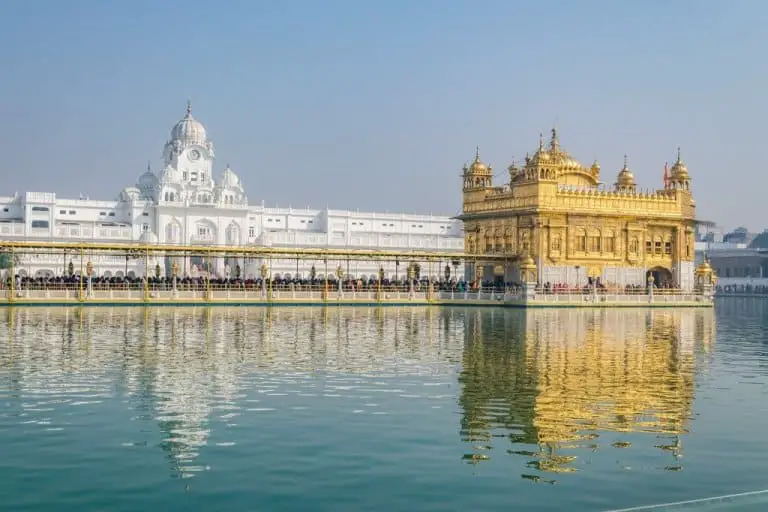
5. Eco-tourism Package
This type of tourism has become one of the fascinating travel forms. Although eco-tourism is more of a travel philosophy, it attracts many tourists. Some eco-tourism destination areas are Kerala, Galgibaga Beach, Goa, and Coorg.
6. Cultural Tourism Package
The social richness of any country draws visitors from every corner of the world to witness sheer celebrations. The cultural tour package offers you a comprehensive exploration of the different shades. Moreover, this package will bring a tourist a closer view of traditions and architecture.
Along with these, we found tourism packages like-
7. Family Tourism Package
A family tour package is designed keeping in mind the family’s needs. It gives assurance of total relaxation and fun pastimes.
The package includes adults, kids, and the elderly. This package includes sightseeing trips, tours of historical places, and adventure trips.
8. Honeymoon Tourism Package
Couples, after their marriages, take a honeymoon tour package, and it provides newlyweds with all the perquisites to make their trip memorable.
The honeymoon tourism package includes lodgings, dining, food & drinks, etc. Famous destinations for a honeymoon tour package are Maldives, Bali, Mauritius, etc.
9. Wellness Tourism Package
Traveling to other places for health and well-being takes a wellness tourism package. Tourists take this package to visit sites that provide recuperation facilities. Wellness tourism has seen a significant boost in the modern years.
Popular destinations for a wellness tourism package are Ayurveda centers, Iceland (for its spas), Bali (for yoga), etc.
10. Cruise Tourism Package
A cruise tourism package provides tourists with a journey filled with fun and recreational activities onboard and excursions onshore.
Tourists get an all-planned ship or boat trip for a specific date to a particular location at a specific price. These packages are curated as per the needs of the tourists.
What are Tourism Products?
According to the market’s needs, the customer supplies anything in the market for use/consumption, called a product.
A product can be offered in the market observation, purchase, use, or any need or demand.
A tourism product is provided to the tourist during their traveling. It mainly focuses on facilities and services designed to meet the needs.
It includes physical objects, services, personalities, places, and ideas. The above components are provided by one company or any group of companies. Tourism products can be given to tourists in a tourist destination.
Products are needed for leisure, pleasure, religious, or business purposes. These products are provided in the market at a cost.
The main reason for choosing a tourist destination is a tourism product. It gives an economic boost to the destination. So it needs to be marketed and stored in a hassle manner.
Services are designed for the visitor to fulfill their needs. Therefore, it is a combination of products. Thus, the country’s total tourism and tourist satisfaction depend on the sum of its attractions, transportation, accommodation, entertainment, etc.
Individual service providers, such as hotels, airlines, travel agencies, etc, provide every element of a tourism product. Therefore, you can analyze these products’ attractiveness, accommodation, and accessibility.
Types of Tourism Products
Attractions: It is one of the main elements. Tourists will not be encouraged to visit certain places without attractions. Attractions are the ingredients. The product determines the choice of a particular tourist to visit a specific destination.
Attractions include archaeological, cultural, and historical buildings, monuments, beach resorts, mountains, flora and fauna, national parks, trade fairs, arts and music festivals, exhibitions, games, etc. Nowadays, tourists are susceptible to changes in fashion.
Accessibility: That means by which a visitor can reach the attraction place. Tourists visit the attraction destination by different transport modes. Visitors visit his predetermined location by car, motorcycle, train , ship or boat, airplane, or cycle.
The place becomes very cheap if any destinations do not have good transport systems. Tourist centers should be located near tourist-producing markets. It is connected to a network of efficient transportation to receive the largest number of tourists.
Accommodation: Another tourism product is accommodation. It is an essential part of tourism—the tourist destination location must-have hotels, guest houses, camping, and homestay. An alternate arrangement should exist if accommodation is not possible at the central location. At least some distance away.
Hospitality: It is a major factor for a tourist destination that will develop in the future. The location’s restaurants, pubs, cafes, foods, and beverage serving style increase location attractiveness.
Natural tourism products: Our nature is beautiful and precious to us. Nature has arranged amazing things in different parts of the world, such as – hills, mountains, caves, glaciers, sea, islands, beaches, waterfalls, rivers, lakes, wildlife, deserts, etc.
The tourism product utilizes those natural gifts as a Natural tourism product, such as snow-capped mountains in Kashmir, Dudhsagar Falls in Goa, palm-fringed beaches of Goa, the wildlife of Kaziranga National Park in Assam, the Thar Desert in Jaisalmer, etc.
Read Things to do in Bainbridge Island, Seattle Washington
Human-created tourism products
Artificial tourism products are those that humans create. Human-made tourism products’ primary purpose is to attract tourists, such as Temples, Forts, palaces, museums, theme parks, etc.
The destination’s tradition and culture play a vital role in tourism. Humans maintain it to attract tourists through- classical dance – music, folk dance, paintings, handicrafts, festivals, fairs, etc.
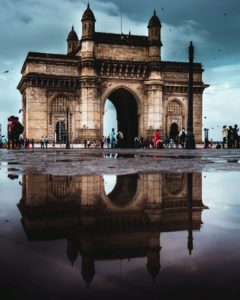
Examples: Machu Picchu World Heritage Site, Egyptian pyramids , Taj Mahal, Red Fort in Agra, Lothal in Gujarat, Mexican pyramids, or Mesoamerican pyramids are important archaeological sites.
The Bhangra dance form of Punjab, the Kolkata Book Fair, the Durga puja in Kolkata, the Brass work of Muradabad, etc., are also included in human-made tourism products.
Tour guides are another main aspect of traveling. It is also a parameter for tourism. National and international travelers need a travel guide to discover a new place. Sometimes, national travelers may visit any tourist destination on their own.
But an international traveler always wants a good tourist guide. How do you present the location, and how much information do you provide to understand the place? It depends on a guided tour and a travel guide. This parameter upgrades the tourist destination’s level.
What are the different types of tourist destinations?
Types of tourism and types of tourist destinations may sound synonymous. However, the two have slight conceptual differences. Tourism is a broader concept, including the aspects of tourism and hospitality.
At the same time, a tourist destination is a narrower concept applying to places of tourist attraction. Based on the type of place and the causes of interest, the tourist’s destinations are:
- Coastal Destinations – Preferred mostly for the ample sunshine and salty waters lining lands adjoining the sea. Be it domestic or international coastal locations, they are great for fun and relaxation. They are favored mostly by people living in inland areas away from the sea.
- Beaches – The meeting point of land with the ocean offers a great tourist attraction. Waves hitting the shores of sandy beaches are great for tourists. In addition, new beach activities like parasailing, beach biking, etc., also attract tourists immensely.
- Island – A land in the middle of the sea or ocean on all sides is an island. Tourists are taken mainly by boat from the mainland to explore these islands. Islands standing in between a river are called riverine islands.
- Mangroves – It offers a panoramic view amidst the confluence of a river with the sea/ocean. Example: Sundarbans of India.
- Inland Destinations – Travel away from the coast is an inland destination. A variety of sub-classifications can come in under like:
Based on the type of region:
- Hill stations – Offering a surreal view from an altitude, all mountains and hills are great tourist destinations.
- Jungles – Trekking/hiking/driving through the wild greenery are great tourist attractions. Protected areas like Reserve Forests and National Park serve the twin purpose of tourism and conservation.
Based on the population structure
- Rural – For a change, get away from the fast-paced urban life to taste village life. Touring rural locations is gaining popularity because of lower population density, greener areas, and a serene environment.
- Urban – Posh urban destinations offer a pull factor for tourists to experience ultra-modern and urban life. Examples: New York, Shanghai, etc.
- Offbeat – Previously undiscovered newer locations around famous tourist spots are offbeat destinations. With lower tourist popularity, the exclusiveness of these places is retained.
Based on the type of activity
- Hiking and Camping – Places, where tourists come mostly for hiking or camping (day/night), are fast gaining popularity. These places are primarily amidst nature and come under adventure tourism.
- Preserved sites – Sites like UNESCO World Heritage sites have become popular tourist destinations. The rich natural/cultural value owes them their status.
Based on historical/religious importance
- Historical Places & Monuments – Tourists flock to places holding remnants of the past. Areas having historic architecture and events give an insight into the past culture. Examples: Taj Mahal and Jalianwallah Bagh, etc.
- Pilgrimages & Holy Shrines: Religious tourism has flourished here, making it a spiritual destination. Example: Hajj of Mecca, Bethlehem for Christians.
- Museums and buildings: Places where artifacts and remnants of historical culture are well preserved. Famous among tourists of all ages.
Based on entertainment
- Luxury destinations: Locations that only promote high-end tourism are luxury destinations. Example: Bali.
- Carnival: Annually, countries host cultural events to celebrate any occasion for a short period. When tourists travel here to enjoy themselves, it becomes a popular destination. Example: Christmas Carnival in Toronto.
- Amusement Park and Zoo: Famous for the lot is Disney Land, a great tourist destination for children. Singapore Zoo, which ushers in global tourists.
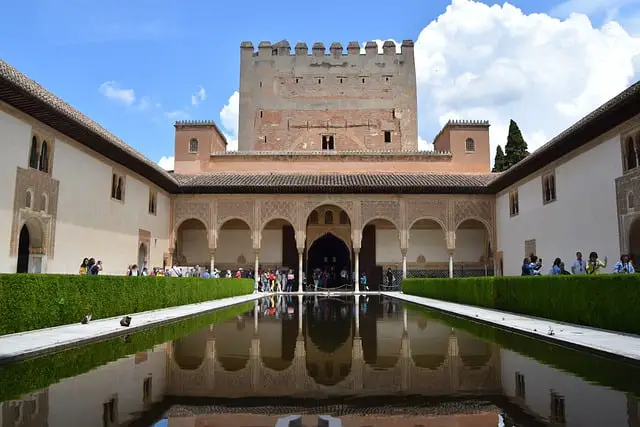
Tourism Destinations
According to UNWTO in the “World’s Top Tourism Destination,” the first four places for International tourism are France, Spain, the USA, and China.
A tourism destination is the endpoint of the journey. But, of course, we all have some goals in every field, so it’s the same with tourism.
There are various types of tourist destinations. They are as follows:-
- Centered Destination
- Based Destination
- Multi-centre Destination
- Touring Destination
- Transit Destination
Types of Tourist Attractions
- Historial attractions
- Cultural attractions
- Political significance
- The natural or scenic beauty
- Leisure travel
- Fun and Amusement
How many Types of Tourism are there in India?
There are 16 Different kinds of tourism in India , but the list may increase.
Is there anything about tourism that I’ve missed?
Over the past 75 years, the travel industry has made great strides in harmoniously uniting strangers, travelers, and locals. As a result, visits and travel are more than adventure, learning new skills, rejuvenating, and achieving perfection.
Tourism has changed from providing services like rooms, flights, and meals that people were satisfied with ten years ago. Now, people want to experience whale watching or mountain biking.
In the luxury sector, wealthy people spend more money on an experience than objects. It is called experience economics, and there is an idea that the memories of tourist values are compared to some physical resources. The rate of global tourists is increasing daily, and every country is trying to make its tourism more developed and successful.
As you can see, the tourism industry is vast and diverse. There are different kinds of tourism here; some have been around for decades, and others are just emerging.
A tour to the Grand Canyon would fall under which type of tourism?
Grand Canyon tour would fall into natural adventure tourism. Here, you can enjoy – The floor Landing Helicopter Tour, ATV, Gold Mine Tour, White Water Adventure Tour, and Rim Airplane Tour.
Kindly Stay 5 Seconds More and Share this Article.
HI TRAVELLER …Myself Ruma Dey Baidya. I’ve been backpacking for the last 20+ years. Photography and travelling have been my passion since my childhood. Whenever I got an opportunity, I never missed it. I am not a solo backpacker, so I always try group travel. I prefer budget travel, and it also helps me to save expenses. We know that memories are not constant, so I decided to document them and created this travel diary. This website [ TheHolidayStory ] is dedicated to those who passionate about travel like me. Please feel free for any information related to my blog. I am always happy to reply. Mail id – ruma[@]theholidaystory.com

- The Star ePaper
- Subscriptions
- Manage Profile
- Change Password
- Manage Logins
- Manage Subscription
- Transaction History
- Manage Billing Info
- Manage For You
- Manage Bookmarks
- Package & Pricing
Johor to host Asean Tourism Forum in 2025
Sunday, 31 Mar 2024
Related News

Brunei expects over 400,000 tourists in 2026
Tourism sector to bring in rm375bil over three years, dewan rakyat told, exclusive-former us firearms investigator illegally trafficked guns to mexico, govt. doc alleges.
Johor Mentri Besar Datuk Onn Hafiz Ghazi (right, in blue) presenting the state’s plans for Visit Johor 2026 to Tourism, Arts and Culture Minister Datuk Seri Tiong King Sing (third from left) and his entourage during a meeting in Johor Baru.
JOHOR BARU: The Asean Tourism Forum (ATF) will be hosted by Johor in 2025, says Mentri Besar Datuk Onn Hafiz Ghazi.
He thanked the Tourism, Arts and Culture Ministry for choosing Forest City as the venue for the event, set for Jan 19 until Jan 25 next year.
"During minister Datuk Tiong King Sing’s visit to Johor, we discussed the prestigious event, which will involve all tourism ministers in the Asean region, with the addition of China," he said in a Facebook post on Sunday (March 31).
Established in 1981, ATF is a cooperative regional effort to promote Asean as one tourism destination.
Each year, the hosting of ATF was rotated among the 10 Asean member countries; this year’s event was held in Vientiane, Laos from Jan 22 to Jan 27.
Onn Hafiz added that he and Tiong’s entourage also went through the state’s plans and direction for the upcoming Visit Johor Year 2026 where 12 million tourism arrivals were targeted.
A total of RM67.6mil had also been set aside under the state budget for 2024 to improve Johor’s tourism infrastructure, he said.
He added that other plans and efforts include organising more international-level tourism events and hoped that the cooperation between Johor and the federal tourism agencies could place the state among the top tourism destinations in Malaysia.
"This is an important initiative to ensure Johor’s readiness to receive tourists and visitors to make Visit Johor Year 2026 a success," he said.
Tags / Keywords: ATF , Asean Tourism Forum , Onn Hafiz Ghazi , Tourism , Tiong King Sing , Visit Johor Year 2026
Found a mistake in this article?
Report it to us.
Thank you for your report!

POWERING YOUR LIFE SUSTAINABLY
Next in nation.

Trending in News
Air pollutant index, highest api readings, select state and location to view the latest api reading.
- Select Location
Source: Department of Environment, Malaysia
Others Also Read
Best viewed on Chrome browsers.

We would love to keep you posted on the latest promotion. Kindly fill the form below
Thank you for downloading.
We hope you enjoy this feature!

The 21 types of tourist attractions
Disclaimer: Some posts on Tourism Teacher may contain affiliate links. If you appreciate this content, you can show your support by making a purchase through these links or by buying me a coffee . Thank you for your support!
The different types of tourist attractions make up an integral part of the structure of the tourism industry . People travel far and wide to visit a particular tourist attractions. Visiting said attractions could be the reason for their trip, or it could be a byproduct of their trip.
There are many different types of tourist attractions. Some are large, some are small. Some are busy, others are quiet. Some are privately owned travel and tourism businesses and others are public enterprises.
In this article I will tell you all about the different types of tourist attractions, and give you lots of examples to inspire your future travels too!
What is a tourist attraction?
Why are tourist attractions important, what is the role of tourist attractions, products and services offered by tourist attractions, national parks, entertainment parks, wildlife attractions, museums and art galleries, unique built attractions, historical or heritage attractions, spectating sport attractions, participating sport attractions, stadium tours, festivals and parades, exhibitions, entertainment venues, to conclude: types of tourist attractions, further reading.
Before we delve into the ins and outs of the different types of tourist attractions, we first need to understand what a tourist attraction is.
A tourist attraction, often also referred to as a visitor attraction, is a place of interest that is commonly visited by tourists.
A tourist attraction will usually have value to the tourist in one of the following areas-
- Historial significance
- Cultural value
- Political significance
- Natural or built beauty
- Amusement and fun
Tourist attractions make up an important part of the visitor economy. The visitor economy comprises the activities and expenditure involved in supplying products and services for visitors by both the private and public sectors.
Tourist attractions contribute significantly to the tourism industry. They typically reap economic benefits of tourism and/or promote the local culture, heritage and environment. This can often result in increased environmental preservation- a positive environmental impact of tourism .
It is important, however, that tourist attractions are well-managed. If poor management occurs, tourist attractions can have adverse impacts on the local society, economy and (most commonly) the environment. It is imperative, therefore, that proper tourism planning is undertaken and that sustainable tourism measures are adopted when developing and managing the operations of a tourist attraction.
Tourist attractions are an important part of the tourism industry.
Some tourist attractions are there predominantly to provide entertainment, such as theme parks and zoos.
Other tourist attractions provide entertainment as well as other aspects, such as education . Examples of educational tourist attractions might include museums and exhibitions.
Other types of tourist attractions may facilitate recreation, hospitality and special events.

Different types of tourist attractions will offer different types of products and services.
Products and services are directed towards what the types of customer that is expected to visit will like.
Some tourist attractions offer rides or experiences. You can go snorkelling in the Atlantis aquarium in Dubai or ride Space Mountain at Disney Land, for example.
Some attractions offer information services, such as guidebooks, information boards, guided tours, interpretation and translation services and educational talks.
Some tourist attractions offer hospitality services, for example renting out areas for a wedding or a conference.
Many tourist attractions have gift shops and catering options for their customers.
Types of tourist attractions
There are many different types of tourist attractions that are found around the world.
Generally, tourist attractions can be separated into four main categories: natural, man-made, sport, events. I will discuss these four categories below.
Natural types of tourist attractions
Natural types of tourist attraction are attractions that are naturally occurring. In other words, they are not built by man.
There are many types of tourist attractions around the world that are natural. In many cases, areas surrounding natural attractions have been developed for tourism because of the natural attraction that is on offer.
Here are some of the different types of tourist attractions that are deemed natural attractions.

National park examples: Dartmoor, Brecon Beacons, Lake District, New Forest.
A national park is an area that is protected due to its cultural heritage, varied wildlife and/or beautiful countryside. National parks are popular types of tourist attractions.
There are clear boundaries showing where the park begins and ends. ,And laws exists to protect the nature and wildlife so that it can all be enjoyed by current and future generations.
The overarching aim of a national park is for people to be able to continually benefit from everything nature has to offer, without destroying it.
There are 15 national parks in the UK.

Want to learn more? Take a look at my articles everything you need to know about UK national parks and the best national parks to visit in the UK .

My favourite national park : The Peak District
A friend of mine lives in and writes about the Peak District and I am always surprised at how many wonderful things there are to do here!

Beach examples: Brighton Beach (Brighton, UK), Copacabana Beach (Rio de Janeiro, Brazil), Bondi Beach (Sydney, Australia), Santa Monica Beach ( California , USA).
Many people choose to go on holiday in search of a beach – meaning that beaches are popular types of tourist attractions!
Beach tourism is particularly popular amongst populations who live in predominantly cooler climates, such as Brits and Russians. Many tourists seek warm weather and soft sand and head to exotic shores to satisfy their desires.
Beaches are one of the most popular types of tourist attractions around the world.
Beaches can be busy or they can be quiet and secluded. Many beaches in popular tourist areas suffer from overtourism . The typical package holiday and the mass tourism industry are generally associated with beach tourism.

My favourite beach: Boulders Beach, South Africa
Visiting Boulders Beach was SUCH a treat! It is famous for its resident penguins and getting to see them up close was a really special experience!

Cave examples: Blue Grotto ( Italy ), Waitomo Glowworm caves (New Zealand), Reed Flute Cave (China), Cave of the Crystals (Mexico).
There are many spectacular caves around the world and are popular natural types of tourist attractions.
Caves are natural voids in the ground. Some caves are small and other caves are large. These voids are typically created through weathering and erosion . Many caves have water inside, some of which are known as cenotes .
Caves are often home to many different species of bats, mice, rats and various insects.
Many people choose to visit caves in order to take a look at the natural formations or to undertake active pursuits, such as caving, diving and canoeing.

My favourite cave: Manjanggul Cave
Despite its name, Manjanggul Cave is actually a lava tube, and it’s the biggest one in Asia. Located in ‘South Korea’s Hawaii’- Jeju island , this is a remarkable natural attraction to visit. This was the first, and only, time I have ever needed to use an umbrella indoors!

Cliff examples: White Cliffs of Dover (UK), Torres del Paine (Chile), Preikestolen (Norway), The Cliffs of Moher ( Ireland ).
Cliffs are another examples of one of the popular types of tourist attractions.
A cliff is essential a land edge, whereby the land juts out above the sea. A cliff usually encompasses a steep rock face.
People may choose to visit cliffs to enjoy the scenery. They may do this by having a picnic, taking a gentle stroll or committing to a multi-day hike.

My favourite cliff: Cape Point
Cape Point is the southeast corner of the Cape Peninsula. It is a beautiful mountainous area at the extreme most southwestern tip of South Africa . The views are stunning and it is a great place to relax for an afternoon.

Mountain examples: Mountain ranges – the Himalayas (Nepal), the Drakensburg Mountains (South Africa), the Yellow Mountains ( China ), The Canadian Rockies (Canada). Singular mountains – Kilimanjaro (Tanzania), Everest (Nepal), Aconcagua (Argentina).
Mountains are some of the most popular types of tourist attractions.
A mountain is a natural elevation of the earth’s surface. A mountain usually has a peak. Mountains are bigger than hills and the top of the mountain is usually 2000m or more above sea level.
Mountains usually come in ranges (multiple mountains), but sometimes are lonesome.
Tourists choose to visit mountains for a number of reason. They may simply want to enjoy the scenery or they may be in search of cool weather. Many tourists choose to visit mountains for hiking or skiing activities.
Mountains are natural attractions that must be looked after. There have been many negative stories of erosion due to skiing and litter left behind by hikers.

My favourite mountain: Mount Kilimanjaro
Climbing Mount Kilimanjaro was one of the biggest achievement of my life! The climb is physically and mentally challenging, but making it to the top was the best feeling ever!

Hills examples: Palatine Hill (Italy), Glastonbury Tor (UK), Chocolate Hills (Philipines), Anantagiri Hills ( India ).
Hills are popular areas for tourists to visit, and hills can make great types of tourist attractions.
Many people will choose to visit hills for the scenery or for active types of tourism , such as kite flying or hiking.

My favourite hill: Glastonbury Tor
Did you know that a tor is a type of hill?
Glastonbury Tor is famous for the annual music festival and has become something of a landmark in the area. Whilst I haven’t ever attended Glastonbury festival, me and my girls did enjoy our blustering climb up to the top!

Waterfalls examples: Niagara Falls (USA/Canada), Victoria Falls (Zambia/Zimbabwe), Iguazu Falls (Argentina/Brazil).
Visiting a waterfall is on many people’s travel to-do list! Many destinations have waterfalls that attract tourists.
Some waterfalls are big and others are small.
Some waterfalls are easily accessible and others are found in remote destinations.
The area around some waterfalls is very developed for tourism (such as Niagara Falls), and for others the area is not developed at all.

My favourite waterfall: Dudhsagar Falls
Dudhsagar Falls is one of the best waterfalls in Goa , India. I loved this waterfall because it was surrounded by nature. The monkeys came to play on our walk to the falls and we could get in and swim with the huge fish that lived in the water beneath the waterfall. This was an amazing experience!

Island examples: Malta, Bali (Indonesia), Jamaica (Caribbean), Isla of Wight (UK), Koh Samui (Thailand), Phd Quoc Island (Vietnam), Cape Verde.
Island tourism is a popular type of tourism and is an example of one of the most popular types of tourist attractions.
An island is a piece of land that is separated from the mainland by water.
Most islands have beach areas for tourists to enjoy.
Some islands are large, like Australia, and others are small, like the Gili Islands . Groups of islands are called an archipelago.
There are many islands that are popular for tourism, such as Bali, many of the islands in the south of Thailand and the Caribbean, amongst many others.
Visiting and staying on an island can often cost the tourist, and the local, more than if they were staying on the mainland. This is because of added transport costs for both people and goods. So, for example, the price of a loaf of bread is increased because the ingredients have to be put on a boat or place in order to reach the island, which costs money.
My favourite Island: Bali
Bali is the most populated tourist island in Indonesia . Popular with Australians and Chinese tourists, it also attracts visitors from around the world.
Bali is one of my happy places. I love the peaceful atmosphere- the yoga, the sound of the waves, the smell of incense. The beaches are great and the food is delicious.
I’ve been twice and I can’t wait to go back again!

Example forests: Daintree Forest (Australia), Redwood National Park (USA), Sagano Bamboo Forest (Japan), Great Bear Rainforest (Canada).
A forest is one of the popular types of tourist attractions.
There are Forrests all over the world, although the flora and fauna differs according to the geographical location, they are share one thing in common- trees!
Many tourists choose to travel to forest areas. Some travellers will visit for a short time and others may stay for days or weeks.
There are many tourist facilities and resorts that have been developed within forests . In the UK the Centre Parcs chain is probably the most well-known. These holiday parks feature chalets and villas in a forest area. There are many activities such as rock climbing and mountain biking. There are also many facilities provided such as swimming pools and restaurants.

My favourite forest: Monteverde Cloud Forest
Visiting the Monteverde Cloud Forest in Costa Rica was a once in a lifetime experience! We were literally living in the clouds! We spent our days amongst the nature, watching the humming birds, looking for sloths and talking gentle walks through the forest.
Purpose built or man-made types of tourist attractions
Many types of tourist attractions are purpose built. This means that the attractions are not natural, and were created by man.
Man-made tourist attractions can be separated into two groups: Attractions that were made for tourism purposes and attractions that were made for other purposes but has since been used for tourism.
Purpose built types of tourist attractions are attractions that have been purposely developed for tourism. This could include a wide range of types of tourist attractions, such as a theme park, a zoo or an art gallery.
Here are some examples of man-made tourist attractions.

Entertainment park examples: Sea World, Florida (USA), Disney Land, Paris ( France ), Wet and Wild Gold Coast (Australia), Big Fun Play Centre, Calgary (Canada),
There are many different types of entertainment parks around the world that are common examples of types of tourist attractions.
Theme parks are very popular built tourist attractions. They are built with the sole purpose of providing entertainment for visitors.
Theme parks are usually quite large. Sometimes you will pay a one-time fee to enter with unlimited access to rides. Other times you may be required to pay for individual rides. Many of the large theme parks are renowned for being busy and having long queues for rides.
Another example of an entertainment park is a waterpark.
Waterparks can be both indoors and outdoors, although outdoor waterparks are usually larger, with more rides and facilities. Holiday parks like Centre Parks offer indoor waterparks as part of their offering to tourists.
In warmer climates, such as in Spain or Florida , there are many outdoor waterparks. Waterparks often feature wave pools, lazy rivers and a variety of slides and playgrounds.
Play parks are areas that have playing equipment for children.
The facilities offered at play parks can vary widely. Some play parks may have water areas, others are completely dry. Play parks may have small rides, such as train rides. They may also have horses or donkeys to ride. There will likely be playgrounds as well as other activities such as archery or canoeing.
Soft play areas are another example of play parks. Soft play areas consist of indoor playgrounds. They usually have ball pits, slides and sometime bouncy castles. Soft play areas are popular with young children. Many countries have impressive soft play attractions such as China and Canada .

My favourite entertainment park: Peppa Pig World
My daughters love Peppa Pig, so when we heard that there was a Peppa Pig world we knew that we just HAD to go!
Peppa Pig World is a section within a larger theme park, called Paulton’s Park. Paulton’s Park is located in the New Forest in the south of England.

Wildlife attraction examples: San Diego Zoo (USA), Monkey Island, Sanya (China), Atlantis Aquarium, Dubai (UAE), Tiger Temple, Chiang Mai ( Thailand ).
There are many types of tourist attractions that involve the use of wildlife .
Some of these are natural areas, such as grazing lands when you go on a safari. However, most of these are purpose built tourist attractions.
There are many types of wildlife attractions that make use of the concept of animal tourism. Some are better managed than others. When you are visiting an animal-focussed attraction it is important that you do your research and only visit if the animals are well treated and cared for.
Zoos are a popular type of wildlife attractions.
Zoos are areas whereby animals are kept. They usually have a wide range of animals, many of which are exotic, such as lions, elephants and monkeys. Tourists are allowed to enter the venue and look at and/or interact with the animals.
Some zoos have very small cages and the treatment of the animals is poor. This is unethical and I do not recommend visiting such zoos.
Farms are similar to zoos, but they generally have larger enclosures and keep only animals that naturally live in the country. In the UK, zoos generally feature animals such as cows, goats, sheep and chickens. Some farms that allow visitors are working farms.
Aquariums are also tourist attractions that enable tourists to see wildlife.
Aquariums feature marine life, such as sharks, sting rays, turtles and a wide range of fish. Some aquariums have large tanks and allow visitors to interact with the marine life by snorkelling or diving. Other aquariums may only have small tanks for their fish, which is unethical.
Lastly, there are a number of attractions around the world that use animals as their focus.
Some destinations will transport animals to the area to encourage tourists to visit. A common example of this is monkeys.
There are attractions that use tigers or lions, such as Tiger Temple in Thailand. Here you can get up close and personal and have photos taken with the tigers.
Thailand is also well-known for its elephants, with many tourist attractions featuring elephant rides or elephant conservation.
Some destinations, such as Mexico create tourist destinations which enable you to swim with dolphins and other marine life.
If you are considering visiting an attraction like this, do your research first and make sure that the organisation demonstrates ethical practices.
Animal tourism is a controversial issue and is one that is frequently debated. Whilst these attractions can be very profitable and have positive economic outcomes, they can, if not managed sustainably , have negative impacts on the animals.

My favourite wildlife attraction: Krabi Elephant Sanctuary
The ethical elephant sanctuary in Krabi, Thailand rescues elephants who have been mistreated in the logging or tourism trades. The sanctuary provides elephants with a better quality of life than they have previously known and allows tourists to visit to help fund their operations.
The sanctuary offer tours and allow you to get up close and personal with the elephants. Elephant riding is cruel and this is not allowed.
Museum and art gallery examples: Egyption Museum, Cairo ( Egypt ), Louvre, Paris (France), Tate Modern, London (UK), Van Gogh Museum, Amsterdam (Netherlands).
Museums and art galleries are usually purpose-built for tourism and are also examples of types of tourist attractions.
Museums and art galleries are found all over the world. These fall into different categories of the types of travel and tourism organisations . Some museums and art galleries are publicly funded or subsidised and others are privately owned, and therefore incur a cost to the visitor.
Museums and art galleries vary considerably in size. They can also have different intentions, some are based on history, or science, or culture amongst a wide variety of other subject matter. Some museums offer niche or unusual products- I was shocked to find out on my trip to Jeju in South Korea that the island has more sex museums than any other place!

My favourite museum: War Remnants Museum
My visit to the War Remnants Museum in Ho Chi Minh, Vietnam is an eye-opening experience.
I didn’t know much about the Vietnam war, but what I did know had come from Western sources. This was my first exposure of informational bias. I heard about the war from the perspective of the Vietnam people, rather than the American’s. I learnt about the torture practices and the deformations caused to future children as a result of agent orange.
I will never forget the images from that day- where American tourists were walking through the museum is sheer horror, tears running down their faces as a result of what they were learning.
Now, it is important to state here that this museum has an inevitable bias too. And that the whole and true story is rarely presented by one side. What this experience taught me, was that there are two sides to every story, and our media outlets and school textbooks may not always present an objective and whole picture.

Unique built attraction examples: The Grand Canyon glass bridge (USA), Nevis Bungy Jump (New Zealand), F1 car driving, Abu Dhabi race track (UAE).
There are many other purpose built types of tourist attractions around the world that do not neatly fit into any of the above categories.
As tourists, we desire things that are innovative, new and different. This is why many unique tourist attractions have been built around the world.
In Costa Rica they have taken advantage of the natural habitat and built extensive zip line networks through the forests.
In China they have built a large number of glass bridges. This makes for a unique and thrilling experience when visiting many of the beautiful natural areas that the country has to offer.
In Sydney they offer tourists with the opportunity to climb the Sydney Harbour Bridge- now that is a cool experience!
There are also tourist attractions which facilitate a range of adrenaline-rising activities, such as sport car racing, deep sea diving, skydiving or wing walking .

My favourite unique built attraction: Glass Bridge at Yanoda Rainforest
The glass bridge in the Yanoda rainforest, close to Sanya in China was a really cool tourist experience.
You get to walk out over the forest and admire the views from the glass bridge. This was great… but the best part was when we reached the end and the glass beneath us!! No, it didn’t actually crack, it was a simulation, my seeing the face on my husband when it happened was absolutely HILARIOUS! If only I caught it on camera…

Heritage or historical attraction examples: Blue Mosque, Istanbul (Turkey), Buckingham Palace, London (UK), Macchu Picchu ( Peru ), Ankor Was (Cambodia).
Some man-made types of tourist attractions are not purpose built for tourism. Instead, they have been adapted for the purposes of tourism.
There are a wide range of buildings, areas and places that have historical or culturally significance. These places are often restored or protected and then displayed to tourists.
Historical or heritage-based tourist attractions include castles, famous walls, ruins, towers, monuments, religious buildings, houses and palaces.
These types of tourist attractions are often beneficial because they help to preserve cultural and heritage, which is a positive impact of cultural tourism .

My favourite heritage and historical attraction: Pyramids of Giza
The Pyramids of Giza in Cairo, Egypt are simply incredible. Nobody knows the exact history behind why and how they were built, and that’s part of the mystery!
We climbed down into the tombs and learnt all about the Egyptian pharaohs, which was super interesting!
Sport attractions
One of the most popular types of tourist attractions are sport events. Sports attractions make up an important part of the sports tourism industry.
Whilst a sporting attraction may not always comprise a permanent infrastructure, like many of the types of tourist attractions that we have discussed so far, sporting events are most certainly attractions in their own right!
There are three main types of sport-based attractions: spectating, participating and stadium tours.

Spectating attractions examples: Football World Cup, Wimbledon Championships, Six Nations Rugby, Olympics.
Many people choose to visit sport attractions because they wish to spectate at a sporting venue. They may not realise that these are types of tourist attractions, but in actual fact, they are!
There are many different sports around the world that welcome spectators. These range from large, international events (such as the Football World Cup or Wimbledon), to small localised events (think local cricket team or school swimming competition).

My favourite spectating sport attraction: Wimbledon
I am not a huge tennis fan, but the atmosphere at the Wimbledon Championships was fantastic!
Quintessentially British, I enjoyed drinking Pimms and eating fresh strawberries whilst watching the game. The sun was shinning too. What more could you ask for?

Participating sport attraction examples: Yoga retreat, Bali (Indonesia), golfing holiday, (Spain), diving holiday ( Egypt ), London Marathon (UK).
Other people visit sports attractions in order to participate in sport.
People may choose to participate in sport by doing a sports camp, which is particular popular with children and young people in the USA.
Other people may opt to go on a yoga holiday or a golfing trip, for example.
Other people may travel to a destination for a specific sporting event that they hope to take part in, such as a swimming competition or a running race.
There are many different sports attractions that invite tourists from around the world to participate in sport.

My favourite participating sport attraction: Tough Mudder
The Tough Mudder race that I competed in was a day to remember! Tough Mudder is not for the faint hearted- a half marathon in knee-high mud with extraordinarily challenging obstacles such as being squeezed through a ‘birth canal’, carrying heavy rocks and diving into ice water, this was a memorable endurance!
Nonetheless, it was such an achievement when I completed in and I look back on this day with fond memories. But, it is pretty safe to say that I will not be signing up for a Tough Mudder again any time soon…!

Stadium tour examples: Barcelona Olympic Stadium (Spain), Manchester United Stadium (UK), Maracana Stadium (Brazil), Melbourne Cricket Ground ( Australia ).
The last example of sports attractions is stadium tours.
Stadium tours are popular around the world, particularly with people who are fans of teams who were/are based at these locations.
Stadium tours are also popular if there was a particularly famous event that occurred there.
Stadium tours occur in in both active and pre-used stadiums. Tours in disused stadiums tend to run more frequently and these stadiums are often transformed into museums, which exhibitions and information displays.

My favourite stadium tour: Barcelona
Barcelona’s Camp Nou stadium is the largest in Europe, with a capacity of over 99,000 people. Whilst I m not a big football fan, it was pretty impressive to see where the players change, marvel at the many trophies on display and see the sheer size of this stadium!
Special events
There are many special events that take place around the world that be be classed as types of tourist attractions.
Special events come in all shapes and sizes and there is no end to the different types of special events that can be organised. However, the most common types of special events are either markets, festivals and parades, exhibitions or entertainment venues.

Market examples: Grand Bazaar, Istanbul (Turkey), Camden Market, London (UK), Damnoen Saduak Floating Market, Bangkok (Thailand), Marrakesh Souks (Morocco).
There are different types of markets, which are popular types of tourist attractions. Some markets are intended for local use (i.e. fruit and vegetable markets or fish markets) and others are intended for tourists (i.e. souvenir markets).
There are many places throughout the world that are famous for their markets. Some tourists may visit especially because they wish to visit the market. And for others, visiting a market may be a byproduct of their trip.
Markets come in different sizes. Some are large and others are small. Some markets operate everyday and others are only operational on particular days of the week or month.
Markets also look different in different places. In some areas there are indoor markets and in some places they are outdoors. Some take place in the street, others in an organised venue. Some take place in more unusual locations, such as on a river!
Markets are commonly associated with the concept of bargaining or haggling. They usually specialise in produce that is grown/made locally, i.e. leather in Morocco. Some are regulated more than others and you may find counterfeit or copied products here.

My favourite market: AP Plaza (aka Shanghai fake market)
Visiting the Yatai Xinyang Fashion and Gift Market in Shanghai is an interesting experience, even if you don’t enjoy shopping!
This market is famous for its excellent copies and fake products. Whether you want a pair of Christian Louboutins, an England football shirt or some custom-made designer glasses, you can get it all at this market. It offers good quality and excellent value for money. And you get to practice your haggling skills too…

Festival and parade examples: Harbin Ice and Snow Festival (China), Glastonbury Festival (UK), Rio Carnival (Brazil), Holiday Festival (India), Songkran (Thailand).
Festivals and parades are important components of tourism .
There are many different festivals and parades that take places at different times of the year in different countries.
Many people will travel from around the world to either spectate or take part in such events.

My favourite festival: San Fermin
San Fermin , commonly referred to as the Running of the Bulls is a famous festival that takes place each summer in Pamplona, Spain. Famed for its bull running and fighting, the event also has a lot more to offer- jazz classes, karaoke, all-night parties, children’s games, meals, fireworks and lots more- this event is great fun to attend.
Whilst I didn’t feel all that comfortable about the way that the bulls were treated during this event, this festival is an important cultural tourism event in Spain, and it was great to learn a little bit more about Spanish heritage and to help keep the tradition alive!

Exhibition examples: Tate Modern, London (UK), ITB Berlin, (Germany), Tutankhamun Exhibition, Cairo ( Egypt ), Ryoji Ikeda: continuum at Centre Pompidou (France).
Another one of the major types of tourist attractions is an exhibition. An exhibition is a display of art of interesting artefacts. Exhibitions usually take place in museums or large buildings. Most commonly, exhibitions consist predominantly of artwork.
Exhibitions can be permanent, they can travel from place to place or they can be temporary.

My favourite exhibition: International Silk Art Exhibition
I was pleasantly surprised when I visited the silk museum in Hangzhou , China. It was fascinating to see all of the garments that were created over the years and I really enjoyed learning about the history of the Silk Road.

Entertainment venue examples: Sydney Opera House (Australia), Holywood Bowl, LA (USA), Paradiso, Amsterdam (The Netherlands), Harpa Concert Hall (Iceland.
The last of the types of tourist attractions that I will discuss in this article is entertainment venues.
Entertainment venues are popular tourist attractions. There are different types of entertainment venues. Venues can be large or small. They can be permanent or temporary. They can propose built or otherwise.
Some entertainment venues have duel purpose. Or they may have been built for a different purpose than what they are used for now.
For example, The O2 Stadium, which now holds concerts and other entertainment events, was originally built as the Millennium Dome. The Millennium Dome was an exhibition centre, housing artefacts to celebrate the turn of the new millennium. However, this attracts was not successful and the building was subsequently redesigned and used for alternative means.
Likewise, following the 2012 London Olympics, there was no longer a need to have so many stadiums for public use. So West Ham United Football Club purchased the stadium and transformed it for their personal use. This was an excellent example of sustainable practice and was one of the reasons that the London Olympic bid was successful!

My favourite entertainment venue: Joya Resident Cirque Du Soleil
Cirque Du Soleil is an inc credible acrobatics show that traditionally travels around the world using temporary entertainment venues. However, one of the few resident shows, where they have a purpose-built permanent infrastructure in place, is near Cancun in Mexico.
I thought that the venue, and the show, was absolutely fantastic. We sipped cocktails before the show with live entertainment along the purpose-built river. We then sat in the venue, which had been designed with moving stages, props and acrobatic equipment installed in order to provide for an incredible experience.
As you can see, there are many different types of tourist attractions throughout the world. Whether they are natural or man-made, large or small, all types of tourist attractions make a valuable contribution and play an important role in the tourism industry. What’s your favourite type of tourist attraction?
If you enjoyed this article on the different types of tourist attractions I am sure that you will enjoy these too-
- 21 Types of Tourists Around The World
- The 3 Major Types Of Airlines + How They Work
- 50 types of transport from around the world
- 150 types of tourism! The ultimate tourism glossary
Liked this article? Click to share!

IMAGES
COMMENTS
You could be taking a cooking class, visiting local producers, sampling the street food, or taking a local wine tour. Of all the tourism types on this list, heritage/historical tourism is one of my personal favourites. 25. Health/Medical Tourism. Medical tourism's similar to dental tourism.
9. Generalists. Generalist tourists are a combination of all types of tourists. These travelers set out to a certain destination with an open mind to experience as much as it has to offer. A generalist tourist can look at a certain style of architecture one day and be interested in the food of a city the next day.
According to Plog, the allocentric tourist is most likely associated with destinations that are un (der)developed. These types of tourists might be the first tourists to visit an area. They may be the first intrepid explorers, the ones brave enough to travel to the 'unknown'. Allocentric tourists like adventure.
Cohen breaks down his tourist typology further, suggesting that there are four main types of tourists: The Drifter. The Explorer. The Individual Mass Tourist. The Organised Mass Tourist. The first two types of tourists (the Drifter and the Explorer) are deemed noninstitutionalised tourists and the latter two (The Individual Mass Tourist and the ...
Beyond the ones we listed, there are plenty of other types of tourism, such as medical tourism, religious tourism, wellness tourism, dark tourism, and more. Broadly speaking, however, we could consider leisure and business tourism to be among the two main categories based on travelers' motivation. Categories.
Travel Marketing School January 8, 2024. Welcome to our ultimate guide to types of tourism! This collection is a comprehensive exploration of the diverse world of travel. In this guide, we delve into an extensive array of tourism types, each offering unique experiences and perspectives on the world. From thrill-seekers to animal enthusiasts and ...
Types of Tourists. Tourism is a diverse and complex industry that attracts different types of travelers from all over the world. Depending on their motivations, budget, interests, and lifestyles, tourists can be classified into different categories, each with its unique characteristics and travel patterns. ... The visit with particular ...
The tourism sector is constantly evolving, expanding beyond the basics of domestic, inbound, and outbound tourism. As travel agencies, it is crucial to stay informed about the diverse range of tourism types to develop effective strategies and fuel the growth of your business. This comprehensive guide presents 62 types of tourism, offering ...
tourism, the act and process of spending time away from home in pursuit of recreation, relaxation, and pleasure, while making use of the commercial provision of services.As such, tourism is a product of modern social arrangements, beginning in western Europe in the 17th century, although it has antecedents in Classical antiquity.. Tourism is distinguished from exploration in that tourists ...
To conclude: Types of travel. As you can see, there are many different types of travel, which can broadly be categorised as: leisure travel, corporate travel, specialist travel, visiting friends and relatives and day trips. All of these types of travel provide important contributions to the wider tourism industry and segmentation in this way ...
Tourism has two types and various forms. Based on the movement of people, tourism is categorized into two kinds. These are the following: International Tourism. When people visit a foreign country, it is referred to as International Tourism. To travel to a foreign country, one needs a valid passport, visa, health documents, foreign exchange, etc.
The Importance of Understanding Visitors in Tourism. Understanding who visitors are and why they travel is crucial for tourism industry professionals. By understanding the different types of visitors, tourism businesses can better tailor their products and services to meet the specific needs and wants of their Target audience.
Tourism has massively increased in recent decades. Aviation has opened up travel from domestic to international. Before the COVID-19 pandemic, the number of international visits had more than doubled since 2000. Tourism can be important for both the travelers and the people in the countries they visit. For visitors, traveling can increase their ...
6. Culinary Tourism. Culinary tourism is a delightful and immersive way to experience the heart of any destination - its food. It focuses on inviting travelers to try top authentic food of any specific country or region. Travelers savor the flavors, aroma, and traditional cooking techniques of local cuisines.
The visitor park received the Global Tourism for Tomorrow Award in 1998. Sustainable tourism is a concept that covers the complete tourism experience, including concern for economic ... This type of tourism is focused on tourists coming into a region to either participate in an event or to see an organized event put on by the city/region.
Eco-tourism, also known as ecological tourism, is a type of sustainable tourism that focuses on environmental conservation and responsible travel to natural areas. The main goal of eco-tourism is to provide visitors with unique, authentic experiences while minimizing the negative impact of tourism on the environment and local communities.
Towns and cities. Examples of tourist cities: Paris, Rome, London, New York, Sydney, Shanghai, Cape Town, Rio de Janeiro. Towns and cities are popular types of tourist destinations. One of the reasons for this popularity is accessibility. Typically, large towns and cities are well connected.
Business tourism: Business tourism is a type of tourism activity in which visitors travel for a specific professional and/or business purpose to a place outside their workplace and residence with the aim of attending a meeting, an activity or an event. The key components of business tourism are meetings, incentives, conventions and exhibitions.
1. Cultural Tourism. Cultural tourism is a type of tourism that involves travelling to experience the culture and heritage of a destination. It is a way to explore the customs, traditions, history, and art of a place. Cultural tourism is a popular form of tourism that attracts millions of visitors each year.
Food tourism. 3. Experiential tourism. 4. Wellness tourism. Traveling is one of the most effective ways of exploring a place, culture or a destination. There are various types of tourism that you must have heard of: Leisure, business, sports, adventure and more. This is an article that represents 4 new types of tourism. 1.
Famous cultural tourism places are:-. India - Durga puja in Kolkata, Temples at Banaras, Jaipur, known as the pink city Palace in Rajasthan. Forts and monuments in Delhi, Agra, UP. UK - Tower of London, The British Museum, Big Ben, London Durga puja, etc. Kenya - The main attraction is the dance of the Maasai tribe.
Alternative tourism. Alternative tourism is the umbrella term for a number of niche tourism forms, therefore it actually encompasses several different types of tourism. It is seen as the paradox of mass tourism. It typically involves travel that is seen as being personal and authentic and encourages interaction with the local environment, people and communities.
JOHOR BARU: The Asean Tourism Forum (ATF) will be hosted by Johor in 2025, says Mentri Besar Datuk Onn Hafiz Ghazi. He thanked the Tourism, Arts and Culture Ministry for choosing Forest City as ...
Island tourism is a popular type of tourism and is an example of one of the most popular types of tourist attractions. An island is a piece of land that is separated from the mainland by water. Most islands have beach areas for tourists to enjoy. Some islands are large, like Australia, and others are small, like the Gili Islands. Groups of ...